Похожие презентации:
Taxes
1.
TAXESSTUDY COURSE DEVELOPER: MAKSIMS GRINČUKS, Turiba University
2.
Chapter 1: TAXATION AND ITS ECONOMIC EFFECTSOverview of Taxation Principles
A tax (from the Latin taxo) is a compulsory financial charge or some other type
of levy imposed upon a taxpayer (an individual or other legal entity) by a
governmental organization in order to fund various public expenditures.
Most countries have a tax system in place to pay for public, common or agreed
national needs and government functions.
Some levy a flat percentage rate of taxation on personal annual income, but
most scale taxes based on annual income amounts.
Most countries charge a tax on individual income as well as on corporate
income.
Countries often also impose wealth taxes, inheritance taxes, estate taxes, gift
taxes, property taxes, sales taxes, payroll taxes or tariffs.
3.
Tax CollectionIn modern taxation systems, governments levy taxes in money; but in-kind and
corvée taxation are characteristic of traditional or pre-capitalist states and
their functional equivalents.
The method of taxation and the government expenditure of taxes raised is often
highly debated in politics and economics.
Tax collection is performed by a government agency, for example:
Canada Revenue Agency,
Internal Revenue Service (IRS) in the United States,
Her Majesty's Revenue and Customs (HMRC) in the UK
Federal Tax Service in Russia
VID in Latvia.
When taxes are not fully paid, the state may impose civil penalties (such as
fines or forfeiture) or criminal penalties (such as incarceration) on the nonpaying entity or individual.
4.
Purposes of TaxationPurposes of Taxation
The levying of taxes aims to
• raise revenue to fund governing or to
• alter prices in order to affect demand.
Governments use money provided by taxation to carry out many functions, e.g.:
• expenditures on economic infrastructure (roads, public transportation, sanitation,
legal systems, public safety, education, health-care systems),
• military,
• scientific research,
• culture and the arts,
• public insurance, and
• the operation of government itself.
A government's ability to raise taxes is called its fiscal capacity.
When expenditures exceed tax revenue, a government accumulates debt. A portion
of taxes may be used to service past debts.
5.
Economic Effects of TaxationEconomic Effects of Taxation
Imposition of taxes may have the following effects:
1. Taxes cause an income effect because they reduce purchasing power to
taxpayers.
2. Taxes cause a substitution effect when taxation causes a substitution
between taxed goods and untaxed goods.
3. Both buyers and sellers are worse off when a good is taxed:
A tax raises the price buyers pay and lowers the price sellers receive. This
can be shown with the concept of a tax incidence.
6.
Economic Effects of TaxationTax Incidence
Tax incidence is the division of the burden of a tax between buyers and
sellers.
When the government imposes a tax on the sale of a good or services, the
price paid by buyers might rise by:
• the full amount of the tax,
• a lesser amount, or
• not at all.
If the price paid by buyers rises by the full amount of the tax, then the burden of
the tax falls entirely on buyers—the buyers pay the tax.
If the price paid by buyers rises by a lesser amount than the tax, then the
burden of the tax falls partly on buyers and partly on sellers.
And if the price paid by buyers doesn’t change at all, then the burden of the tax
falls entirely on sellers.
7.
Economic Effects of TaxationExample 1:
Tax on Sellers
Assume a tax per unit of $3 is levied on suppliers (see Figure). The supply curve
presents the minimum prices that producers are willing and able to sell various
quantities of output for. Since they must now pay $3 in taxes on each unit sold,
suppliers will sell every given quantity for $3 higher (so that they still cover their
marginal cost on each unit sold). As a result, supply shifts to the left to S1.
Consequently, equilibrium price rises to $6 and equilibrium quantity falls to 425 units.
8.
9.
Economic Effects of TaxationConsumers purchase 425 units and pay $6/unit. Effectively prices paid by consumers
have gone up by $6 − $4 = $2. Consumer surplus has therefore fallen by Rectangle A
and Triangle B.
• Producers sell 425 units at $6/unit but only pocket $3/unit after paying the tax.
Effectively, their realized prices have fallen by $4 − $3 = $1. Producer surplus has
therefore fallen by Rectangle C and Triangle D.
• The government earns tax revenue of $3/unit on 425 units that are sold. So part of
the loss in consumer surplus (Rectangle A) and producer surplus (Rectangle C) is
transferred to the government.
• However, some consumer surplus (Triangle B) and producer surplus (Triangle D)
remains untransferred and is lost due to the imposition of the tax. These two triangles
comprise society’s deadweight loss.
Even though this tax was levied on suppliers only, consumers and producers share the
actual burden of the tax as consumer and producer surplus both decline once the tax is
imposed.
Further, in our example, consumers actually end up bearing the brunt of the tax in the
form of an effective increase in prices of $2, versus an effective decrease in producer
realized prices of only $1. Note that consumer surplus transferred to the government,
Rectangle A, is greater than producer surplus transferred to the government,
Rectangle C. This is because the demand curve is steeper than the supply curve. If
the supply curve were steeper, the reverse would be true regardless of whom the tax
was imposed upon by law.
10.
Economic Effects of TaxationExample 2:
Why taxes result in deadweight losses
Imagine that Joe cleans Jane’s house each week for €100. The opportunity cost of
Joe’s time is €80, and the value of a clean house to Jane is €120. Thus, Joe and
Jane each receive a €20 benefit from their deal. The total surplus of €40
measures the gains from trade in this particular transaction.
Now suppose that the government levies a €50 tax on the providers of cleaning
services. There is now no price that Jane can pay Joe that will leave both of
them better off. The most Jane would be willing to pay is €120, but then Joe
would be left with only €70 after paying the tax, which is less than his €80
opportunity cost.
Conversely, for Joe to receive his opportunity cost of €80, Jane would need to pay
€130, which is above the €120 value she places on a clean house. As a result,
Jane and Joe cancel their arrangement. Joe goes without the income, and Jane
lives in a dirtier house.
The tax has made Joe and Jane worse off by a total of €40 because they have each
lost €20 of surplus. But note that the government collects no revenue from Joe
and Jane because they decide to cancel their arrangement. The €40 is pure
deadweight loss: It is a loss to buyers and sellers in a market that is not offset by
an increase in government revenue. From this example, we can see the ultimate
source of deadweight losses: Taxes cause deadweight losses because they
prevent buyers and sellers from realizing some of the gains from trade.
11.
Economic Effects of TaxationExample 3:
Tax on Buyers
Now assume that instead of being levied upon producers, the same $3/unit tax is
imposed on consumers (see Figure). The demand curve shifts to the left to D1. The
actual burden of the tax is shared by consumers and producers, and once again
(since the demand curve is steeper than the supply curve) consumers bear a greater
burden of the tax. Further, the increase in government revenue from tax collections
does not entirely offset the reduction in consumer and producer surplus, and society
suffers a deadweight loss from underproduction (the region shaded in grey).
12.
Economic Effects of TaxationThe impact of a tax on a market outcome is the same whether the tax is levied
on buyers or sellers of a good.
When a tax is levied on buyers, the demand curve shifts downward by the size
of the tax;
when it is levied on sellers, the supply curve shifts upward by that amount.
In either case, when the tax is enacted, the price paid by buyers rises, and the
price received by sellers falls.
In the end, the elasticities of supply and demand determine how the tax burden
is distributed between producers and consumers. This distribution is the
same regardless of how it is levied.
13.
Economic Effects of TaxationTax Incidence and Elasticity of Demand
The division of the tax between buyers and sellers depends in part on the
elasticity of demand.
Price elasticity of demand is a measure of the responsiveness of the quantity
demanded of a good to a change in its price when all other influences on
buying plans remain the same.
There are two extreme cases:
Perfectly inelastic demand
Perfectly elastic demand
Buyers pay the entire tax.
Sellers pay the entire tax.
Also, the more inelastic the demand (relative to supply), the larger is the
buyers’ share of the tax.
See Fig. 1 and 2 (next slide)
14.
Economic Effects of Taxation15.
Economic Effects of TaxationExample 4:
Tax with Perfectly Inelastic Demand
Figure shows the market for insulin,
a vital daily medication for those
with diabetes.
Demand is perfectly inelastic at
100,000 doses a day, regardless
of the price, as shown by the
vertical demand curve D.
If insulin is taxed at 20¢ a dose
we must add the tax to the
minimum price at which drug
companies are willing to sell
insulin. The result is the new
supply curve S + tax.
When a tax is imposed on this
good, buyers pay the entire
tax.
16.
Economic Effects of TaxationExample 5:
Tax with Perfectly Elastic Demand
Figure shows the market for pink
marker pens.
The demand for this good is
perfectly elastic — the
demand curve is horizontal.
When a tax of 10¢ is imposed
on this good, sellers pay the
entire tax.
17.
Economic Effects of TaxationTax Incidence and Elasticity of Supply
The division of the tax between buyers and sellers also depends, in part, on the
elasticity of supply.
The elasticity of supply measures the responsiveness of the quantity supplied
to a change in the price of a good, when all other influences on selling plans
remain the same.
Again, there are two extreme cases:
Perfectly inelastic supply
Perfectly elastic supply
Sellers pay the entire tax.
Buyers pay the entire tax.
Also, the more elastic the supply (relative to demand), the larger is the amount
of the tax paid by buyers.
See Fig. 3 and 4 (next slide)
18.
19.
Economic Effects of TaxationExample 6:
Tax with Perfectly Inelastic Supply
Figure shows the market for water
from a mineral spring that flows at
a constant rate that cannot be
controlled.
The supply of this good is perfectly
inelastic at 100,000 bottles a
week, as shown by the vertical
supply curve S. With no tax, the
price is 50¢ a bottle and the
quantity is 100,000 bottles.
When a tax is imposed on this good
at 5¢ a bottle, the supply curve
does not change because the
spring owners still produce
100,000 bottles a week, even
though the price they receive
falls. But buyers are willing to
buy the 100,000 bottles only if
the price is 50¢ a bottle, so the
price does not change. The tax
reduces the price received by
sellers to 45¢ a bottle, and
sellers pay the entire tax.
20.
Economic Effects of TaxationExample 7:
Tax with Perfectly Elastic Supply
Figure shows the market for sand.
The supply of this good is perfectly
elastic — the supply curve is
horizontal. With no tax, the price
is 10¢ a pound and 5,000 pounds
a week are bought.
When a tax of 1¢ a pound is
imposed, we must add it to the
minimum supply-price. Sellers
are now willing to offer any
quantity at 11¢ a pound along the
curve S + tax. A new equilibrium
is set at a price of 11¢ and 3,000
pounds a week. The tax has
increased the price buyers pay
by the full amount of the tax – 1¢
a pound – and has decreased the
quantity sold. Buyers pay the
entire tax.
21.
Economic Effects of TaxationExample 8:
The burden of tax
Depending on the circumstance, the burden of tax can fall more on consumers or on
producers.
In the case of tobacco products, for example, demand is inelastic — because tobacco is
an addictive substance — and taxes are mainly passed along to consumers in the
form of higher prices.
22.
Economic Effects of TaxationIn the tobacco example, the tax burden falls on the most inelastic side of the market. If
demand is more inelastic than supply, consumers bear most of the tax burden. But, if
supply is more inelastic than demand, sellers bear most of the tax burden.
When the demand is inelastic (see Fig. B), consumers are not very responsive to price
changes, and the quantity demanded remains relatively constant when the tax is
introduced. In the case of smoking, the demand is inelastic because consumers are
addicted to the product. The seller can then pass the tax burden along to consumers
in the form of higher prices without much of a decline in the equilibrium quantity.
23.
Economic Effects of TaxationWhen a tax is introduced in a market with an inelastic supply (see Fig. A) — such as,
for example, beachfront hotels — sellers have no choice but to accept lower prices
for their business. Taxes do not greatly affect the equilibrium quantity. The tax burden
in this case is on the sellers. If the supply were elastic and sellers had the possibility
of reorganizing their businesses to avoid supplying the taxed good, the tax burden on
the sellers would be much smaller, and the tax would result in a much lower quantity
sold instead of lower prices received.
24.
Economic Effects of TaxationIn Fig. A, the supply is inelastic and the demand is elastic — as it is in the beachfront
hotels example. While consumers may have other vacation choices, sellers can’t
easily move their businesses. By introducing a tax, the government essentially
creates a wedge between the price paid by consumers, Pc , and the price received by
producers, Pp. The new market price is Pc, but the sellers receive only Pp per unit
sold since they pay Pc – Pp to the government. Since a tax can be viewed as raising
the costs of production, this could also be represented by a leftward shift of the
supply curve. The new supply curve would intercept the demand at the new quantity
Qt. For simplicity, the figure omits the shift in the supply curve.
25.
Economic Effects of TaxationThe tax revenue is given by the shaded area, which is obtained by multiplying the tax rate
per unit by the total quantity sold, Qt.
The tax incidence on the consumers is given by the difference between the price paid, Pc,
and the initial equilibrium price, Pe.
The tax incidence on the sellers is given by the difference between the initial equilibrium
price, Pe, and the price they receive after the tax is introduced, Pp.
26.
Economic Effects of TaxationIn figure A, the tax burden falls disproportionately on the sellers, and a larger proportion
of the tax revenue – the shaded area – is due to the resulting lower price received by
the sellers than but the resulting higher prices paid by the buyers.
27.
Economic Effects of TaxationOn the other hand, if we go back to our example of cigarette taxes, the situation would
look more like in Fig. B, where the supply is more elastic than demand. The tax
incidence now falls disproportionately on consumers, as shown by the large
difference between the price they pay, Pc, and the equilibrium price, Pe. Sellers
receive a lower price than before the tax, but this difference is much smaller than the
change in consumers’ price.
28.
Economic Effects of TaxationPractice Problem 1:
The original equilibrium price is €3.00 and the equilibrium quantity is 100.
The government then imposes a tax of €0.50 on the sellers. This leads to a
new supply curve which is shifted upward by €0.50 compared to the original
supply curve.
The new equilibrium price will be in the range between €3.00 and €3.50 and the
equilibrium quantity will decrease.
Assume that the consumers pay €3.30 and the new equilibrium quantity is 90.
1. What is the price that sellers will receive after the tax is imposed?
Pp = Pc – tax
Pp = €3.30 – €0.50 = €2.80 (producers will keep €2.80)
2. What is the total tax revenue for the government?
The government will collect €0.50(90) = €45
3. Who shares more of the tax burden, sellers or buyers?
Buyers’ share of the tax burden is (€3.30 – €3.00)(90) = €27
Sellers’ share of the tax burden is (€3.00 – €2.80)(90) = €18
29.
Economic Effects of TaxationOther economic effects of taxation
1. Redistribution of Income
This effect is felt most in developing countries.
A proportional tax will not affect the distribution of income, but both progressive
and regressive taxes will cause a change in income distribution.
With progressive taxes, the post-tax distribution of income is more equal than
the pre-tax distribution, whereas with regressive taxes the post-tax
distribution is more unequal than the pre-tax distribution.
30.
Economic Effects of TaxationOther economic effects of taxation
2. A Reduction in Incentive
It may be argued that increased taxation can have a disincentive effect on
workers. They may feel that it is not worth taking on extra responsibility or
putting in more hours because so much of their extra income would be
taken in taxation.
However, it may be argued that workers may want to maintain their present
standard of living or may have heavy financial commitments so that if
income tax was increased, they would work for longer hours to make up for
the income lost in tax.
There are, therefore, conflicting views on the effect of incentives.
31.
Economic Effects of TaxationOther economic effects of taxation
3. A Reduction in Business Activity
Entrepreneurs undertake investment in anticipation of increasing profit.
Investment projects may be risky so the expectation of large profits is an
important incentive.
If, however, profits are heavily taxed, the entrepreneurs may feel that it is not
worth taking such risks and so they will be far more cautious in their
attitudes.
Such caution may lead to reduced progress and efficiency with a consequent
deterioration in the ability of domestic producers to complete with foreign
rivals.
32.
Economic Effects of TaxationOther economic effects of taxation
4. Effects on the Ability to Work, Save and Invest
Imposition of taxes results in the reduction of disposable income of the
taxpayers. This will reduce their expenditure on necessaries which are
required to be consumed for the sake of improving efficiency.
As efficiency suffers ability to work declines. This ultimately adversely affects
savings and investment. However, this happens in the case of poor
persons.
Taxation on rich persons has the least effect on the efficiency and ability to
work.
Note: Not all taxes, however, have adverse effects on the ability to work. There are some harmful goods, such
as cigarettes, whose consumption has to be reduced to increase ability to work. That is why high rate of
taxes are often imposed on such harmful goods to curb their consumption.
But all taxes adversely affect ability to save. Since rich people save more than
the poor, progressive rate of taxation reduces savings potentiality. This
means low level of investment. Lower rate of investment has a dampening
effect on economic growth of a country.
Thus, on the whole, taxes have the disincentive effect on the ability to work,
save and invest.
33.
Economic Effects of TaxationOther economic effects of taxation
It is suggested that effects of taxes upon the willingness to work, save and
invest depends on the income elasticity of demand.
Income elasticity of demand measures the responsiveness of demand for a
particular good to a change in income, holding all other things constant.
Income elasticity of demand varies from individual to individual.
If the income demand of an individual taxpayer is inelastic, a cut in income
consequent upon the imposition of taxes will induce him to work more and
to save more so that the lost income is at least partially recovered.
On the other hand, the desire to work and save of those people whose demand
for income is elastic will be affected adversely.
Thus, we have conflicting views on the incentives to work. It would seem logical
that there must be a disincentive effect of taxes at some point but it is not
clear at what level of taxation that crucial point would be reached.
34.
Economic Effects of TaxationLaffer Curve
The Laffer Curve is a theory developed by supply-side economist Arthur Laffer
to show the relationship between tax rates and the amount of tax revenue
collected by governments.
The Laffer Curve describes the relationship between tax rates and total tax
revenue, with an optimal tax rate that maximizes total government tax
revenue.
If taxes are too high along the
Laffer Curve, then they will
discourage
the
taxed
activities, such as work and
investment, enough to actually
reduce total tax revenue.
In this case, cutting tax rates
will both stimulate economic
incentives and increase tax
revenue.
35.
Chapter 2: BASIC PRINCIPLES OF TAXATIONGoals of an Ideal Taxing System
Principles of taxation vary across countries.
The basic objective of taxation is to raise revenues to finance governments.
Governments also attempt to achieve other objectives in designing and
implementing tax systems. These objectives are frequently complicated by
the dynamics of political, economic, and social forces.
People designing tax systems have often considered the criteria for good
taxation formulated by Adam Smith (1776):
Equality
Certainty
Convenience
Economy
36.
Canons of Taxation1. Equality
Taxpayers should bear a fair level of tax relative to their economic positions
(e.g., income, for income taxes).
Equality can be defined in terms of horizontal and vertical equity.
Horizontal equity:
Two similarly situated taxpayers are taxed the same.
Example 9:
Bill’s income for the year consists solely of $15,000 in dividends. Ted’s income consists
solely of $15,000 in interest income.
Both pay a tax rate of 15%, or $2,250 in taxes; there is horizontal equity.
Example 10:
Corporation A has net income from the sales of widgets of $15,000. Corporation B has
net income of $15,000 from the performance of services.
Both pay a tax of $2,250; there is horizontal equity.
37.
Canons of TaxationVertical equity:
When taxpayers are in different economic positions, the taxpayer with the
greatest ability to pay, pays the most in taxes.
Example 11:
Refer back to Example 9. Assume, in addition to the $15,000 of income, Bill has an
additional $45,000 of dividend income, giving him a total of $60,000 in income.
If he is still taxed a 15% rate, there is no vertical equity;
if he is taxed a higher rate (say, 25%) there may be vertical equity, since Bill pays
proportionately more taxes than Ted.
Note:
Income taxes tend to be progressive. That is, higher tax rates apply when there are higher levels of the
amount being taxed. For income taxes, this amount—called the tax base—is taxable income.
However, consumption-related taxes (such as VAT) are rarely progressive (and are often considered
regressive) because there is typically only one tax rate.
38.
Canons of Taxation2. Certainty
Taxpayer knows when, how, and how much tax is paid.
It would protect the taxpayer from the exploitation of tax authorities in any way
and enable the taxpayer to manage his income and expenditure. Violation
of this principle may lead to tax evasion.
3. Convenience
Taxes should be levied at the time it is most likely to be convenient for the
taxpayer to make the payment. This generally occurs as they receive
income because this is when they are most likely to have the ability to pay.
e.g. tax on dividends is usually paid when dividends are received and tax on capital gains is paid when
shares are sold
4. Economy
A tax should have minimum compliance and administrative costs. That is, it
should require a minimum of time and effort for the taxpayer to calculate
and pay the tax. Administrative costs are expenses incurred by the
government to collect the tax. Compliance and administrative costs are
highest for income taxes, because of their complexity.
39.
Framework for Understanding TaxesTax Base
Taxes are computed by multiplying the tax rate by the tax base, that is:
Tax tax rate tax base
Tax base is the amount that is subject to tax.
For income taxes, the tax base is taxable income, defined roughly as
income less allowable expenses.
For property taxes, the tax base is some measure of the value of the
property.
Consumption taxes, such as VAT and sales tax, are most often based on
the sales price of the merchandise sold.
For payroll taxes, a common tax base is employment compensation.
40.
Framework for Understanding TaxesTax Deduction
Tax deduction is a reduction of income that is able to be taxed and is
commonly a result of expenses, particularly those incurred to produce
additional income.
e.g. A tax deduction reduces the taxable income of a taxpayer. If a single filer’s taxable income for the
tax year is $75,000 and he falls in the 25% marginal tax bracket, his total marginal tax bill will be
25% x $75,000 = $18,750. However, if he qualifies for an $8,000 tax deduction, he will be taxed
on $75,000 - $8,000 = $67,000 taxable income, not $75,000. The reduction of his taxable income
is a tax relief for the taxpayer who ends up paying less in taxes to the government.
Tax Credit
Tax credit is a tax relief that provides more tax savings for an entity than a tax
deduction as it directly reduces a taxpayer’s bill, rather than just reducing
the amount of income subject to taxes.
In other words, a tax credit is applied to the amount of tax owed by the taxpayer
after all deductions are made from his or her taxable income.
e.g. If an individual owes $3,000 to the government and is eligible for a $1,100 tax credit, he will only
have to pay $1,900 after the tax relief is applied.
41.
Framework for Understanding TaxesExample 12:
Tax Credit (U.S. Example)
As the simplified example in the table shows, a tax credit can provide more savings for a
taxpayer than a tax deduction.
$10,000 tax deduction
$10,000 tax credit
Adjusted Gross Income
$100,000
$100,000
Less: Tax Deduction
($10,000)
Taxable Income
$90,000
$100,000
Tax Rate*
25%
25%
Calculated Tax
$22,500
$25,000
Less: Tax Credit
Tax Payable
($10,000)
$22,500
*Example rate only. The U.S. uses a progressive tax system
$15,000
42.
Framework for Understanding TaxesTax Rates
For most taxes there are four types of tax rates:
• statutory rates
• marginal rates
• average rates
• effective rates
Statutory tax rate is the legally imposed rate. An income tax could have
multiple statutory rates for different income levels, where a sales tax may
have a flat statutory rate.
Marginal tax rate is the tax rate that will be paid on the next dollar of tax base
(i.e., the rate on the next dollar of income for income taxes).
Average tax rate is computed as the total tax divided by the total tax base.
43.
Framework for Understanding TaxesExample 13:
At the end of the year, XYZ Corporation has taxable income of $50,000. Its tax rate is
15%, so it pays a tax of $7,500. Suppose it sells some inventory on the last day of the
year for a net gain of $20,000. The gain would put the corporation in the 25% bracket.
1. What is the marginal tax rate?
Marginal tax rate on this income is 25%.
2. What is the average tax rate?
Average tax rate is ($7,500 + $5,000) / $70,000 = 17.9%
Effective tax rate is the average tax rate paid by a corporation or an individual.
The effective tax rate for individuals is the average rate at which their earned
income, such as wages, and unearned income, such as stock dividends,
are taxed.
The effective tax rate for a corporation is the average rate at which its pre-tax
profits are taxed.
44.
Framework for Understanding TaxesExample 14:
Effective tax rate
The company reports the following financial data:
Sales
€60,000,000
Profit before taxes
€6,000,000
Corporation tax
€2,400,000
After-tax profit
€3,600,00
Operating profit margin
10% (= 6m / 60m)
(profit before taxes / sales)
Effective tax rate
40% (= 2.4m / 6m)
Assume that the company implements a tax planning strategy reducing income tax
expenses by €360,000 to €2,040,000.
As a result, the effective tax rate is reduced by 6 percentage points from 40% to 34% (=
2.04m / 6m) and the after-tax profit increases by 10% to €3,960,000 (= 6,000,000 –
2,040,000).
45.
Framework for Understanding TaxesEffective Tax Rate vs. Marginal Tax Rate
The effective tax rate is a more accurate representation of a person's or
corporation's overall tax liability than their marginal tax rate and is typically
lower.
The marginal tax rate refers to the highest tax bracket into which their income
falls.
In a progressive income-tax system, income is taxed at differing rates that rise
as income reaches certain thresholds. Two individuals or companies with
income in the same upper marginal tax bracket may end up with very
different effective tax rates, depending on how much of their income was in
the top bracket.
46.
Framework for Understanding TaxesExample 15:
Assume the progressive income-tax system, where taxes are imposed as follows:
Taxable Income, $
Tax Rate
0 – 100,000
10%
100,000 – 300,000
15%
Over 300,000
25%
Consider two individuals whose taxable income exceeds $300,000, so both individuals hit
the upper tax bracket of 25%.
Assume that individual A has taxable income of $500,000, while individual B has taxable
income of $360,000.
For individual A, the overall tax liability would be:
($100,000 – $0) × 0.1 + ($300,000 – $100,000) × 0.15 + ($500,000 – $300,000) × 0.25 =
10,000 + 30,000 + 50,000 = $90,000,
For individual B, the tax liability would be:
($100,000 – $0) × 0.1 + ($300,000 – $100,000) × 0.15 + ($360,000 – $300,000) × 0.25 =
10,000 + 30,000 + 15,000 = $55,000,
While both individuals might say they're in the 25% bracket, the one with the higher
income has an effective tax rate of 18% ($90,000 in tax divided by $500,000 in
income), while the other's effective tax rate is 15.3% ($55,000 divided by $360,000).
47.
Framework for Understanding TaxesTax Rate Structures
In most tax jurisdictions, a tax rate structure applies to ordinary income (such
as earnings from employment). Other tax rates may apply to special
categories of income such as investment income (sometimes referred to as
capital income for tax purposes).
Investment income is often taxed differently based on the nature of the income:
interest, dividends, or capital gains and losses.
Tax rates vary from country to country. Some countries implement a
progressive tax system, while others use regressive or proportional tax
rates.
A regressive tax system is one in which the tax rate increases as the taxable
amount decreases.
A regressive tax is a tax applied uniformly, taking a larger percentage of income
from low-income earners than from high-income earners.
Note: A regressive tax affects people with low incomes more severely than people with high incomes
because it is applied uniformly to all situations, regardless of the taxpayer. While it may be fair in
some instances to tax everyone at the same rate, it is seen as unjust in other cases. As such,
most income tax systems employ a progressive schedule that taxes high-income earners at a
higher percentage rate than low-income earners, while other types of taxes are uniformly applied.
48.
Framework for Understanding TaxesThough many countries have a progressive tax regime when it comes to
income tax, certain levies that are paid are considered to be regressive
taxes.
e.g., in the U.S., some of regressive taxes include state sales taxes, user fees, and, to some degree,
property taxes.
Example 16:
U.S. Sales tax (regressive)
Governments apply sales tax uniformly to all consumers based on what they buy. Even
though the tax may be uniform (such as a 7% sales tax), lower-income consumers
are more affected.
For example, imagine two individuals each purchase $100 of clothing per week, and they
each pay $7 in tax on their retail purchases. The first individual earns $2,000 per
week, making the sales tax rate on her purchase 0.35% of income. In contrast, the
other individual earns $320 per week, making her clothing sales tax 2.2% of income.
In this case, although the tax is the same rate in both cases, the person with the
lower income pays a higher percentage of income, making the tax regressive.
49.
Framework for Understanding TaxesExample 17:
U.S. User Fees (regressive)
User fees levied by the U.S. government are another form of regressive tax. These fees
include admission to government-funded museums and state parks, costs for driver's
licenses and identification cards, and toll fees for roads and bridges.
For example, if two families travel to the Grand Canyon National Park and pay a $30
admission fee, the family with the higher income pays a lower percentage of its
income to access the park, while the family with the lower income pays a higher
percentage. Although the fee is the same amount, it constitutes a more significant
burden on the family with the lower income, again making it a regressive tax.
Example 18:
Property Taxes (regressive)
Property taxes are fundamentally regressive because, if two individuals in the same tax
jurisdiction live in properties with the same values, they pay the same amount of
property tax, regardless of their incomes.
However, they are not purely regressive in practice because they are based on the value
of the property. Generally, it is thought that lower income earners live in less
expensive homes, thus partially indexing property taxes to income.
50.
Framework for Understanding TaxesOther examples of regressive taxes
Gambling taxes
Those on low incomes have a high propensity to spend money on gambling
and therefore pay a higher percentage of their income on gambling taxes.
Fuel tax
Those on high income may spend more on petrol, but it is unlikely to be too
significant, therefore as your income rises, the percentage of income going
on petrol tax is likely to fall.
Sin taxes
Taxes levied on products that are deemed to be harmful to society.
These are added to the prices of goods like alcohol and tobacco in order to
dissuade people from using them.
These taxes are generally regressive, because they are more burdensome to
low-income earners rather than their high-income counterparts.
51.
Framework for Understanding TaxesA progressive tax system is one in which the average tax rate (taxes paid ÷
personal income) increases as the taxable amount increases.
Progressive taxes are imposed in an attempt to reduce the tax incidence of
people with a lower ability to pay, as such taxes shift the incidence
increasingly to those with a higher ability-to-pay.
Example 19:
U.S. Tax Rates and Brackets, 2019
Rate
Single
Married/Joint
10%
$0-$9,700
$0-$19,400
12%
$9,701 - $39,475
$19,401 - $78,950
22%
$39,476 - $84,200
$78,951 - $168,400
24%
$84,201 - $160,725
$168,401 - $321,450
32%
$160,726 - $204,100
$321,451 - $408,200
35%
$204,101 - $510,300
$408,201 - $612,350
37%
$510,300+
$612,350+
52.
Framework for Understanding TaxesExample 20:
Calculation of Tax Due on Taxable Income (progressive tax structure)
In a progressive rate structure, the tax rate increases as income increases. For example:
Taxable income (€)
Over
Up to
Tax on
column 1
% on excess
over column 2
0
15,000
-
23
15,000
28,000
3,450
27
28,000
55,000
6,960
38
55,000
75,000
17,220
41
25,420
43
75,000
If an individual has taxable income of €60,000, the first €15,000 is taxed at 23%; the next
€13,000 is taxed at 27%, and so on. The amount of tax due on taxable income of
€60,000 would be:
(€15,000 – €0) × 0.23 + (€28,000 – €15,000) × 0.27 + (€55,000 – €28,000) × 0.38 +
+ (€60,000 – €55,000) × 0.41 = €19,270
This would represent average tax rate of 32.12% (€19,270/ €60,000).
53.
Framework for Understanding TaxesA proportional tax system (a.k.a., flat tax system) is the one in which a tax
imposed so that the tax rate is fixed, with no change as the taxable base
amount increases or decreases.
The amount of the tax is in proportion to the amount subject to taxation, so that
the marginal tax rate is equal to the average tax rate.
Proponents of proportional taxes believe they stimulate the economy by
encouraging people to work more because there's no tax penalty for earning
more.
They also believe that businesses are likely to spend and invest more under a
flat tax system, thus stimulating the economy.
Example 21:
Proportional Tax Rate System
In a proportional tax system, all taxpayers are required to pay the same percentage of
their income in taxes. For example, if the rate is set at 20%, a taxpayer earning
$10,000 pays €2,000 and a taxpayer earning €50,000 pays €10,000. Similarly, a
person earning €1 million would pay €200,000.
54.
Framework for Understanding TaxesImportant Principles and Concepts in Tax Law
Most tax systems have developed around fundamental concepts that do not
change much and thus provide a deep structure to tax rules.
Ability-to-Pay Principle
Under the ability-to-pay principle, the tax is based on what a taxpayer can
afford to pay.
One concept that results from this is that taxpayers are generally taxed on their
net incomes.
Example 22:
Ability-to-Pay Principle
X and Y firms each have sales revenues of €500,000. Expenses for the two firms are
€100,000 and €300,000, respectively. Firm X will pay more taxes, because it has
greater net income and cash flows, and thus can afford to pay more.
55.
Framework for Understanding TaxesEntity Principle
Under the entity principle, an entity (such as a corporation) and its owners (for
a corporation, its shareholders) are separate legal entities.
As such, the operations, record keeping, and taxable incomes of the entity and
its owners (or affiliates) are separate.
Example 23:
Entity Principle
An entrepreneur forms a corporation that develops and sells the entrepreneur’s software
products. During the year, the corporation has $200,000 in revenue and $50,000 in
expenses. The entrepreneur also has a salary of $100,000.
The corporation will file a corporate tax return showing $50,000 in taxable income, and
the entrepreneur will file an individual tax return showing $100,000 of income.
56.
Framework for Understanding TaxesArm’s Length Principle
The condition or the fact that the parties to a transaction are independent and
on an equal footing. Such a transaction is known as an arm's-length
transaction.
Arm’s Length Transaction
A business deal in which the buyers and sellers act independently and do not
have any relationship to each other. The concept of an arm's length
transaction assures that both parties in the deal are acting in their own selfinterest and are not subject to any pressure from the other party.
Note: Deals between family members or companies with related shareholders are usually not
considered arm's length transactions.
Tax laws throughout the world are designed to treat the results of a transaction
differently when parties are dealing at arm's length and when they are not.
e.g., if the sale of a house between father and son is taxable, tax authorities may require the seller to
pay taxes on the gain he would have realized had he been selling to a neutral third party. They
would disregard the actual price paid by the son.
57.
Framework for Understanding TaxesExample 24:
Arm’s Length Principle
Assume that in Example 23 the corporation pays its entire $250,000 in net income to the
entrepreneur as a salary for being president of the corporation.
Suppose that a reasonable salary for a president of a small software company is
$100,000.
The effect of the salary is to reduce the corporation’s taxable income to zero, so that it
does not have to pay any taxes. While salaries in such closely held corporations are
deductible in general, in this case the arm’s length test is not met.
As a result, only $100,000 (i.e., the reasonable portion) of the salary will be deductible by
the corporation. The remaining $150,000 will be considered a dividend.
Arm's Length vs. Arm-in-Arm Transactions
In determining whether the arm’s length rule is likely to be violated with regard
to expenses and losses, tax authorities look to see if the transaction is
between related taxpayers.
Related taxpayers generally include individuals related by blood and marriage,
and business entities owned more than 50% by a single entity or individual.
58.
Framework for Understanding TaxesExample 25:
Arm’s Length Test
Assume that an entrepreneur sells an asset to his corporation, and that the sale results in
a loss. The entrepreneur owns 49% of the corporation’s stock; the other 51% is
owned by a group of unrelated investors.
Since the loss is not between related taxpayers, it may be considered arm’s length.
In applying the ownership test, constructive ownership is considered. That is,
indirect ownership and chained ownership are considered.
Example 26:
Arm’s Length Test
Assume the same facts as Example 25, except that the other 51% of the stock is owned
by Z Corporation, which is owned 100% by the entrepreneur.
By the rules of attribution and constructive ownership, the entrepreneur is considered to
own 100% of the stock: by direct ownership in the first corporation, plus the stock
owned by the Z Corporation.
Thus, the transaction is not arm’s length, and none of the loss would be deductible.
59.
Framework for Understanding TaxesArm’s Length Principle: Business Expenses
Ordinary and necessary business expenses are deductible only to the extent
they are also reasonable in amount.
Tax authorities have interpreted this requirement to mean that an expenditure is
not reasonable when it is extravagant or exorbitant.
If the expenditure is extravagant in amount, it may be presumed that the
excess amount is spent for personal rather than business reasons and,
therefore, is not deductible.
Generally, tax authorities test for extravagance by comparing the amount of the
expense to a market price or an arm’s length amount.
If the amount of the expense is within the range of amounts typically charged in
the market by unrelated persons, the amount is considered to be
reasonable.
60.
Framework for Understanding TaxesExample 27:
Business Deductions
Assume John hired four part-time employees and paid them $10 an hour to mow lawns
for an average of 20 hours a week.
When things finally slowed down in late fall, John released his four part-time employees.
John paid a total of $22,000 in compensation to the four employees.
He still needed some extra help now and then, so he hired his brother, Devin, on a parttime basis. Devin performed the same duties as the prior part-time employees (his
quality of work was about the same). However, John paid Devin $25 per hour
because Devin is a college student and John wanted to provide some additional
support for Devin’s education.
At year-end, Devin had worked a total of 100 hours and received $2,500 from John.
Question:
What amount can John deduct for the compensation he paid to his employees?
Answer:
$23,000. John can deduct the entire $22,000 paid to the four part-time employees.
However, he can only deduct $10 an hour for Devin’s compensation because the
extra $15 per hour John paid Devin is unreasonable in amount. Hence, John can
deduct a total of $23,000 for compensation expense this year [$22,000 + ($10 ×
100)].
61.
Framework for Understanding TaxesAll-Inclusive Income Principle
This principle basically means that if some simple tests are met, then receipt of
some economic benefit will be taxed as recognized income, unless there is
a tax law specifically exempting it from taxation.
The tests are as follows (each test must be met if an item is considered to be
income):
Does it seem like income?
This test is meant to eliminate things that cannot be income.
For example, making
an expenditure cannot
generate income.
Is there a transaction with another entity?
This test is the realization principle from accounting; that is, for income to be
recognized, there must be a measurable transaction with another entity.
62.
Framework for Understanding TaxesExample 28:
Realization Principle
A corporation owns two assets that have gone up in value. It owns common stock in
another corporation, which it originally purchased for $100,000 and is now worth
$500,000. It also owns raw land worth $1 million, which it originally purchased for
$200,000.
It sells the stock for its fair market value, but not the land.
Income is recognized only on the stock; there has been no realization on the land.
Is there an increase in wealth?
This test means that unless there is a change in net wealth, no income will be
recognized. This eliminates a number of transactions from taxation.
Example 29:
Increase-in-wealth test
A corporation borrows $5 million from a bank, issues $1 million in common stock, and
floats a bond issue for which it receives $10 million. Although each of these
transactions involves cash inflows and transactions with other entities, there is no
change in net wealth. This because for each of the three cash inflows, there is an
offsetting increase in liabilities (or equity) payable.
63.
Framework for Understanding TaxesBusiness Purpose Concept
Relates to tax deductions.
Here, business expenses are deductible only if they have a business purpose,
that is, the expenditure is made for some business or economic purpose,
and not for tax-avoidance purposes.
Example 30:
Business Purpose Test
An entrepreneur owns 100% of the stock of her corporation. She has the corporation buy
an aircraft to facilitate any out-of-town business trips she might make. The
entrepreneur, who also happens to enjoy flying as a hobby, rarely makes out-of-town
business trips.
Since the plane will not really help the business, and there is a tax-avoidance motive (the
plane would generate tax-depreciation deductions), there is no business purpose to
the aircraft. Accordingly, any expenses related to the aircraft, including depreciation,
are nondeductible.
64.
Framework for Understanding TaxesTax-Benefit Rule
Under the tax-benefit rule, if a taxpayer receives a refund of an item for which it
previously took a tax deduction (and received a tax benefit), the refund
becomes taxable income in the year of receipt.
Example 31:
Tax-Benefit Rule
A company pays a consulting firm $100,000 for consulting services in one year. Because
this is a normal business expense, the corporation takes a tax deduction for
$100,000.
Early the next year, the consulting firm realizes it has made a billing mistake and refunds
$20,000 of the fees.
The $20,000 is taxable income to the corporation in second year because it received a
tax benefit in the prior year.
65.
Framework for Understanding TaxesSubstance over Form Doctrine
Under the doctrine of substance over form, even when the form of a transaction
complies with a favorable tax treatment, if the substance of the transaction
is the intent to avoid taxes, the form will be ignored, and the transaction
recast to reflect its real intent.
Example 32:
Substance over Form Doctrine
An entrepreneur is the sole stockholder of his corporation. The corporation never pays
dividends to the entrepreneur, and instead, each year it pays out 100% of the
corporation’s net income as a salary to the entrepreneur (who also serves as
company’s chief executive officer).
The doctrine of substance over form empowers tax authorities to tax at least part of the
salary as if it were a dividend.
66.
Framework for Understanding TaxesPay-As-You-Earn Concept (PAYE)
Taxpayers must pay part of their estimated annual tax liability throughout the
year, or else they will be assessed penalties and interest.
For individuals, the most common example is income tax withholding.
Typically, withholding is required to be done by the employer of someone else,
taking the tax payment funds out of the employee or contractor's salary or
wages. The withheld taxes are then paid by the employer to the government
body that requires payment, and applied to the account of the employee, if
applicable.
This ensures the taxes will be paid first and will be paid on time, rather than risk
the possibility that the tax-payer might default at the time when tax falls due.
Note:
In most countries, amounts withheld are determined by employers but subject to government review.
67.
Framework for Understanding TaxesTaxation of Gains and Losses on Property Sale
In virtually every tax jurisdiction, only the net gain or loss from the sale of
property is taxable (or deductible) for income tax purposes.
Gain or loss is computed as
Amount realized (the value of what is received)
− Adjusted basis of property given
= Gain or loss
The adjusted basis of the property given is computed as
Original basis +
Capital improvements −
Accumulated depreciation −
Other recoveries of investments (such as write-offs
for casualty losses)
= Adjusted basis
The original basis usually is the
original purchase price.
Capital improvements are
additions that have an
economic life beyond one year.
Accumulated depreciation
applies only in the case of an
asset used in business (see ex.).
68.
Framework for Understanding TaxesExample 33:
Calculation of Gain / Loss
A corporation buys a factory building for $2 million in 2008. It sold the building for $3
million in the current year. At the time of sale, the building had $600,000 of
accumulated depreciation. In 2015, the corporation spent $400,000 on a new roof.
The gain is
Amount Realized:
$3,000,000
Adjusted Basis:
Original Basis
$2,000,000
Add: capital improvements
400,000
Less: Accumulated Depreciation
(600,000)
(1,800,000)
Net Gain
$1,200,000
69.
Chapter 3: PERSONAL INCOME TAXDefinition of Personal Income Tax
According to OECD, tax on personal income is defined as the taxes levied on
the net income (gross income minus allowable tax reliefs) and capital gains
of individuals.
Throughout its history it is the tax that generates and has generated the most
revenue for governments of the developed countries.
Personal income tax calculations as well as personal income tax rates may
vary significantly depending on a tax jurisdiction.
Taxation rates may vary by type or characteristics of the taxpayer.
Individuals are often taxed at different rates than corporations. Individuals
include only human beings.
Residents are generally taxed differently from non-residents.
70.
Personal Income Tax Calculation ExamplesExample 34:
Personal Income Tax Calculation (U.S. example)
Resident alien husband and wife with two children; one spouse earns all the income,
none of which is foreign-source income. A joint return is filed. AMT liability is less than
regular tax liability. Calculations are based on preliminary 2019 tax tables
Gross income
USD
Salary
150,000
Interest
18,500
Long-term capital gain (on assets held for more than one year)
3,000
Total gross income
171,500
Adjustments
0
Adjusted gross income (AGI)
Less - standard deduction
Taxable income
171,500
24,400
147,100
Tax thereon
On taxable income of 144,100 (147,100 less capital gain of
3,000) at joint-return rates
On 3,000 capital gain at 15%
Total tax
23,581
450
24,031
Taxpayer’s income
from salary and
interest ($144, 100)
is taxed at ordinary
tax rates, see
Schedule Y-1,
Appendix 1. Here,
taxpayer is in 22%
tax bracket
71.
Personal Income Tax Calculation ExamplesThe calculation of personal income taxes due (or refund) is based on the
following simplified formula:
Minus:
Equals:
Minus:
Equals:
Times:
Equals:
Plus:
Equals:
Minus:
Minus:
Equals:
Gross income 1
For AGI (above the line) deductions 2
Adjusted gross income (AGI)
From AGI (below the line) deductions: 3
(1) Greater of
(a) Standard deduction or
(b) Itemized deductions and
(2) Deduction for qualified business income
Taxable income
Tax rates 4
Income tax liability
Other taxes 5
Total tax
Tax Credits 6
Tax Prepayments 7
Taxes due or (refund)
Source: Spilker, Ayers: Taxation of Individuals and Business Entities, McGraw-Hill, 2019 Edition
72.
Personal Income Tax Calculation ExamplesExplanations:
1 Gross income may include:
income from a job,
business income,
retirement income,
interest income,
dividend income, and
capital gains from selling investments.
Based on the all-inclusive income principle.
Under this principle, gross income generally
includes all realized income from whatever
source derived.
Realized income is income generated in a
transaction with a second party in which there is
a measurable change in property rights between
parties (for example, appreciation in a stock
investment would not represent realized income
unless the taxpayer sold the stock).
One type of income may be taxed at a different rate than another type of
income depending on whether income is ordinary or capital.
Note: Examples of ordinary income are compensation for services, business income, retirement
income. Ordinary income (loss) is taxed at ordinary tax rates (also depending on the family
status), see App.1 (next slide).
Examples of capital income are gains and losses on the disposition or sale of capital assets.
If the gain is a long-term capital gain, it is generally taxed at a 15% tax rate (taxed at 20% for highincome taxpayers and 0% for low-income taxpayers).
If the gain is a short-term capital gain, the gain is taxed at ordinary income rates.
73.
Appendix 1Source: Spilker, Ayers:
Taxation of Individuals and
Business Entities,
McGraw-Hill, 2019 Edition
74.
Personal Income Tax Calculation ExamplesExclusions and Deferrals
Certain tax provisions allow taxpayers to permanently exclude specific types of
realized income from gross income (excluded income items are never
taxable) and other provisions allow taxpayers to defer including certain
types of realized income items in gross income until a subsequent year
(deferred income items are included in gross income in a later year).
Examples of exclusions:
Interest income from municipal bonds
Gifts and inheritance
Gain on sale of personal residence
Examples of deferrals:
• Installment sale
75.
Personal Income Tax Calculation ExamplesAdjusted Gross Income (AGI)
It can be shown that
Gross Income
– For AGI Deductions
= AGI
2 Some common For AGI deductions are:
Contribution to individual retirement account (IRA)
Health insurance deduction for self-employed taxpayers
Rental expenses
Capital losses (net losses limited to $3,000 for the year)
76.
Personal Income Tax Calculation Examples3 From AGI Deductions
After calculating AGI, the taxpayer can then apply:
• standard deductions to reach their taxable income or,
• itemized deductions, which can be better for the taxpayer in some
situations.
Standardized Deduction
A fixed amount which varies by taxpayer filing status:
Filing status
2019 standard deduction
Increase from 2018
Married filing jointly
$24,400
$400
Married filing separately
$12,200
$200
Single
$12,200
$200
Head of household
$18,350
$350
See how the standard deduction of $24,400 is applied in Example 34.
Every year the
government
indexes this
deduction for
inflation.
77.
Personal Income Tax Calculation ExamplesItemized Deduction
An expenditure on eligible products, services, or contributions that can be
subtracted from adjusted gross income (AGI) to reduce taxable income.
Primary categories of itemized deductions are:
• Medical and dental expenses
• Taxes, e.g., state and local income taxes, sales taxes, real estate taxes, personal property
taxes, and other taxes (an aggregate $10,000 deduction limitation applies to taxes).
Interest expense (mortgage and investment interest expense)
Gifts to charity
Note: Taxpayers generally deduct the higher of the standard deduction or itemized deductions.
Deduction for Qualified Business Income
This deduction applies to individuals with qualified business income (QBI) from
flow-through entities, including partnerships, S corporations, or sole
proprietorships. This is a deduction for individuals not for business entities.
In general, a taxpayer can deduct 20% of the amount of QBI allocated to them
from the entity, subject to certain limitations.
78.
Personal Income Tax Calculation Examples4 Tax Rates
After determining taxable income, taxpayers can generally calculate their
regular income tax liability using a tax rate schedule (see App. 1),
depending on their filing status and income level.
However, as shown above, certain types of income included in taxable income
are taxed at rates different from those in tax rate schedules (e.g., 15% tax
applicable to capital gains, see. Ex.34).
5 Other Taxes
In addition to the individual income tax, individuals may also be required to pay
other taxes such as the alternative minimum tax (AMT) or selfemployment taxes. These taxes are imposed on tax bases other than the
individual’s regular taxable income.
6 Tax Credits
These may include the child tax credit, the child and dependent care credit, the
lifetime learning credit etc.
Note: Unlike deductions, which reduce taxable income, tax credits directly reduce taxes payable.
79.
Personal Income Tax Calculation Examples7 Tax Prepayments
These include:
(1) withholdings, or income taxes withheld from the taxpayer’s salary or wages
by her employer,
(2) estimated tax payments the taxpayer makes for the year (paid directly to the
IRS), and
(3) tax that the taxpayer overpaid on the prior-year tax return that the taxpayer
elects to apply as an estimated payment for the current tax year instead of
receiving as a refund.
Note: If tax prepayments exceed the total tax after subtracting credits, the taxpayer receives a tax refund for the
difference.
If tax prepayments are less than the total tax after credits, the taxpayer owes additional tax and potentially a
penalty for the underpayment.
80.
Personal Income Tax Calculation ExamplesExample 35:
Personal Income Tax Calculation (UK example)
In 2017-18, Kenneth (who is not a Scottish taxpayer) has business profits of £44,200 and
bank interest of £980. His personal allowance for the year is £11,500. He makes no
Gift Aid donations or pension contributions during 2017-18.
Total , £
Non-savings
income, £
Business profits
44,200
Bank interest
980
Total income
45,180
44,200
Less: Personal allowance
11,500
11,500
Taxable income
33,680
32,700
44,200
980
Income tax due
Non-savings income
: Basic rate
32,700 @ 20%
6,540.00
Savings income
: Nil rate
500 @ 0%
0.00
: Basic rate
300 @ 20%
60.00
: Higher rate
180 @ 40%
72.00
33,680
Tax liability
Savings
income, £
6,672.00
980
980
81.
Personal Income Tax Calculation ExamplesA typical structure of an income tax computation for year 2017-18 may appear
as follows:
Less:
Equals:
Less:
Equals:
Times:
Less:
Equals:
Add:
Equals:
Less:
Equals:
Total income 1
Tax reliefs
2
Net income
Personal allowance 3
Taxable income
Tax rates 4
Tax reductions 5
Tax borne
Tax withheld on payments
Total liability for the year
Tax paid by deduction at source
Tax payable
Source: Alan Melville: Taxation, Finance Act 2017, Pearson, 23rd Edition, 2018
6
82.
Personal Income Tax Calculation ExamplesExplanations:
1 Total income may include:
Employment income,
Pensions,
Social security income,
Trading income,
Property income,
Interest,
Dividends,
Miscellaneous income
Note: Certain types of income are specifically
exempt from income tax
Taxpayer's "total income" for the year is calculated by
adding together income from all sources, including the pretax equivalent of any income from which tax has been
deducted at source but excluding income which is exempt
from income tax.
Certain types of income are taxed at source, which means
that basic rate income tax is deducted from the income
before the taxpayer receives it.
In tax year 2017 -18, the main types of income normally
received net of basic rate tax are:
• debenture and other loan interest;
• interest on UK government securities (if taxpayer
applies to receive this interest with tax deducted at
source;
• income element of a purchased life annuity;
• patent royalty.
Note:
To calculate a taxpayer's income tax liability it is necessary to bring together all of the taxpayer's income into a
single computation. The gross equivalent of any income received net of income tax must be included in the
computation.
83.
Personal Income Tax Calculation ExamplesSavings Income and Non-Savings Income
Tax liability on a taxpayer's "savings income" is calculated differently from the
tax liability on non-savings income.
Common categories of savings income are:
(a) interest received from banks, building societies and NS&I, plus interest
received on gilt-edged securities and corporate bonds (e.g. debentures and
loan stocks);
(b) income element of purchased life annuities (other than annuities from
registered pension schemes, which are treated as non-savings income)
(c) certain foreign income.
Note: Savings income does not
include dividends received, which
are treated in accordance with
dividend income taxation principles.
Common categories of non-savings income are:
(a) income from employment and pensions;
(b) profits of trades, professions and vocations;
(c) income from property letting.
84.
Personal Income Tax Calculation Examples2 Tax reliefs may include:
• Certain payments made by the taxpayer (e.g., eligible interest payments,
certain “annual payments”, gifts of listed securities, land or buildings to a
charity)
Note: Most of the payments which are deductible from total income are made gross (without deduction
of income tax)
Certain loss reliefs (e.g. trading losses) and
Relief for certain pension contributions
3 Personal allowance (PA)
The allowance is deducted from taxpayer’s income when computing the tax
liability. The basic PA for 2017-2018 is £11,500 (see how it is applied in Ex.
35) but this is reduced (possibly to zero) if the taxpayer has income
exceeding £100,000.
Note: Subject to certain conditions, an individual may elect to transfer part of his / her PA to a spouse
or to a civil partner. The transferable amount is 10% of the basic PA for the year (i.e., £1,150 in
2017-18). This amount is called marriage allowance.
85.
Personal Income Tax Calculation Examples4 Tax rates
Income tax is charged on the taxable income, using the tax rates in force for
the year.
Rates of Income Tax for 2017 – 2018
First £33,500 of taxable income
20% (basic rate)
Next £116,500 of taxable income (up to £150,000)
40% (higher rate)
Remaining taxable income after the first £150,000
45% (additional rate)
The amount of tax calculated in this way is then subject to a number of
adjustments.
Savings income and dividend income are treated specially.
86.
Personal Income Tax Calculation ExamplesTax Treatment of Savings Income
Savings income which falls into the first £5,000 (for 2017-18) of taxable income
is taxed at the starting rate for savings of 0%, so that such income is taxfree.
If a taxpayer has both savings income and non-savings income, it is necessary
to split taxable income between these two categories before the tax liability
can be calculated.
Note: Basic rate band is made available to non-savings income in priority to savings income.
The figure of £5,000 (for 2017-18) is known as the starting rate limit for savings.
IF
Tax Treatment of Savings Income
non-savings taxable income ≥ £5,000
starting rate (0%) is not available
non-savings taxable income < £5,000
some portion (or all) of £5,000 of savings
income is tax-free
87.
Personal Income Tax Calculation ExamplesPersonal Savings Allowance (PSA)
Taxpayers may be entitled to a PSA of up to £1,000 for tax year 2017-18.
In general, this means that the first £1,000 of savings income included in
taxable income is taxed at the savings nil rate of 0%.
However, the PSA is lower than £1,000 in some cases:
IF
PSA available
taxable income ≤ basic rate limit of £33,500
£1,000
taxable income > basic rate limit of £33,500 ≤ higher rate limit of £150,000
£500
taxable income > higher rate limit of £150,000
£nil
Note: Figures are based on tax year 2017-2018
88.
Personal Income Tax Calculation ExamplesExample 36:
Personal Income Tax Calculation (UK example)
In 2017-18, Robert has business profits of £39,700 and receives bank interest of £1,250.
His personal allowance is £11,500. Find Robert's income tax liability for the year.
Total , £
Non-savings
income, £
Business profits
39,700
Bank interest
1,250
Total income
40,950
39,700
Less: Personal allowance
11,500
11,500
Taxable income
29,450
28,200
39,700
1,250
Income tax due
Non-savings income
: Basic rate
28,200 @ 20%
5,640.00
Savings income
: Nil rate
1,000 @ 0%
0.00
: Basic rate
250 @ 20%
50.00
29,450
Tax liability
Savings
income, £
5,690.00
Source: Alan Melville: Taxation, Finance Act 2017, Pearson, 23rd Edition, 2018
1,250
1,250
Taxable income
includes non-savings
income of more than
£5,000. Therefore the
starting rate for savings
is not available.
Taxable income does not
exceed £33,500, so the
PSA is £1,000.
Savings income of
£1,000 is taxed at the
savings nil rate.
The remaining £250 is
taxed at basic rate.
89.
Personal Income Tax Calculation ExamplesExample 37:
Personal Income Tax Calculation (UK example)
In 2017-18, Roberta has rental income of £15,700 and building society interest of £1,100.
Her personal allowance is £11,500. Find Roberta's income tax liability for the year.
Total , £
Non-savings
income, £
Income from property
15,700
Building society interest
1,100
Total income
16,800
15,700
Less: Personal allowance
11,500
11,500
Taxable income
5,300
4,200
15,700
1,100
Income tax due
Non-savings income
: Basic rate
4,200 @ 20%
840.00
Savings income
: Starting rate
800 @ 0%
0.00
: Nil rate
300 @ 0%
0.00
5,300
Tax liability
Savings
income, £
840.00
Source: Alan Melville: Taxation, Finance Act 2017, Pearson, 23rd Edition, 2018
1,100
1,100
Non-savings income
occupies £4,200 of the
basic rate band. This
allows £800 (£5,000 £4,200) of savings
income to be taxed at
the starting rate of 0%.
Taxable income does not
exceed £33,500, so the
PSA is £1,000.
The remaining £300 of
savings income
(£1,100 - £800) does not
exceed £1,000, so this is
taxed at the savings nil
rate.
90.
Personal Income Tax Calculation ExamplesExample 38:
In 2017-18, Philip (who is not a Scottish taxpayer) has business profits of £240,235 and
receives building society interest of £1,600. His personal allowance for the year is £0.
He makes no Gift Aid donations or pension contributions during 2017-18. Find his
income tax liability for the year.
Total , £
Business profits
Non-savings
income, £
240,235
Building society interest
Savings
income, £
240,235
1,600
Total income
Less: Personal allowance
Taxable income
1,600
241,835
240,235
0
0
241,835
240,235
1,600
1,600
Non-savings income
occupies the whole of
the basic band so the
starting rate for savings
is not available.
Income tax due
Non-savings income
Savings income
: Basic rate
33,500 @ 20%
6,700.00
: Higher rate
116,500 @ 40%
46,600.00
: Additional rate
90,235 @ 45%
40,605.75
: Additional rate
1,600 @ 45%
720.00
241,835
Tax liability
94,625.75
Source: Alan Melville: Taxation, Finance Act 2017, Pearson, 23rd Edition, 2018
Taxable income exceeds
£33,500, so the PSA is
£nil.
The whole of the
building society interest
is taxed at the additional
rate of 45%.
91.
Chapter 4: TAXATION OF INVESTMENT INCOMEDefinition of Investment Income
Investment income is income that comes from interest payments, dividends,
capital gains collected upon the sale of a security or other assets, and any
other profit made through an investment vehicle of any kind.
e.g., interest earned on bank accounts and dividends received from stock owned by mutual fund holdings would all be
considered investment income.
Investment Income and Taxes
Often, investment income undergoes different, and sometimes preferential, tax
treatment, which varies by country and locality.
e.g., as of 2019, in the U.S., the top marginal tax rate on income was 37% (for amounts over $500,000 a year).
Meanwhile, long-term capital gains and qualified dividend income were subject only to a maximum 20% tax, even
if that amount exceeds a half-million dollars in a given year.
The associated tax rate is usually based on the form of investment producing
the income and other aspects of an individual taxpayer’s situation.
92.
Investment Income Taxation ExamplesTaxation of Interest and Dividends (US. Case)
For tax purposes, individual investors typically are taxed on both interest and dividend
income when they receive it.
Interest income is taxed at ordinary rates (i.e., as ordinary income). This means the
interest is taxed at the taxpayer's top marginal tax rate (see App.1);
Some types of interest are fully taxable, while other forms are partially taxable.
Examples of interest income:
Interest from CDs, corporate bonds, and some types of government agency
securities
Checking, savings, or other interest-bearing accounts
• Dividend income is taxed annually and generally at lower capital gains rates.
Qualified dividends are taxed at a preferential rate: 0, 15, or 20%, depending on the
taxpayer’s filing status and amount of taxable income. Qualified dividends are those
paid by domestic or certain qualified foreign corporations, subject to certain
restrictions.
Nonqualified dividends are not eligible for the reduced rate and are therefore taxed at
ordinary rates.
93.
Investment Income Taxation ExamplesExample 39:
Assume Courtney (head of household filing status) decides to purchase dividend-paying
stocks to achieve her financial objectives. She invests $50,000 in Xerox stock, which
she intends to hold for five years and then sell to fund the Park City home down
payment. She invests another $50,000 in Coca-Cola stock, which she intends to hold
for eight years and then sell to fund her son’s education.
Question 1:
How much dividend income will Courtney report at the end of the first year if the dividend
payments provide an 8% rate of return on her investments?
Answer:
At the end of the first year, Courtney will report $4,000 ($50,000 × 0.08) of dividend
income from her investment in the Xerox stock and $4,000 ($50,000 × 0.08) of
dividend income from her investment in the Coca-Cola stock, for a total of $8,000 of
dividend income.
94.
Investment Income Taxation ExamplesExample 39:
Assume Courtney (head of household filing status) decides to purchase dividend-paying
stocks to achieve her financial objectives. She invests $50,000 in Xerox stock, which
she intends to hold for five years and then sell to fund the Park City home down
payment. She invests another $50,000 in Coca-Cola stock, which she intends to hold
for eight years and then sell to fund her son’s education.
Question 2:
Assume Courtney’s ordinary marginal tax rate is 32%. How much tax will Courtney owe
on her dividend income if the dividends are nonqualified?
Answer:
Courtney will owe $2,560 ($8,000 × 32%) of tax if the dividends are nonqualified because
the income will be taxed at her ordinary income tax rate.
95.
Investment Income Taxation ExamplesExample 39:
Assume Courtney (head of household filing status) decides to purchase dividend-paying
stocks to achieve her financial objectives. She invests $50,000 in Xerox stock, which
she intends to hold for five years and then sell to fund the Park City home down
payment. She invests another $50,000 in Coca-Cola stock, which she intends to hold
for eight years and then sell to fund her son’s education.
Question 3:
What amount of tax will Courtney owe if the dividends are qualified? Assume Courtney’s
tax rate on qualified dividends is 15%.
Answer:
Courtney will owe $1,200 ($8,000 × 15%) of tax if the dividends are qualified because
qualified dividends are taxed at preferential rates.
96.
Investment Income Taxation ExamplesTaxation of Capital Gains and Losses (US. Case)
A capital gains tax is a tax on the increase in the value of an investment.
Example 40:
Let's assume you purchase 100 shares of XYZ Company for $1 per share. After three
months, the share price increases to $5. This means the value of the investment has
increased from $100 to $500, for a capital gain of $400.
The capital gain of $400 is subject to capital gains tax.
When a taxpayer sells a capital asset for more than its tax basis, he
recognizes a capital gain;
However, if a taxpayer sells a capital asset for less than its tax basis, he
recognizes a capital loss (to the extent the loss is deductible).
The tax basis of any asset is generally the taxpayer’s cost of acquiring the
asset, including the initial purchase price and other costs incurred to
purchase or improve the asset.
97.
Investment Income Taxation ExamplesFIFO method and Specific Identification Method
When taxpayers sell a capital asset, e.g., stock, they may determine the basis
of the stock using the specific identification method or the FIFO method.
By default, taxpayers are required to use the first-in, first-out (FIFO) method of
determining the basis of the shares they sell.
However, if they track the basis of their stock, taxpayers can sell specific
shares using the specific identification method to determine the basis of the
shares they sell.
Taxpayers using the specific identification method can choose to sell their highbasis stock first, minimizing their gains or increasing their losses on stock
dispositions.
98.
Investment Income Taxation ExamplesExample 41:
Assume Courtney sold 200 shares of Cisco stock at the current market price of $40 per
share for a total amount realized of $8,000. Courtney held the following blocks of
Cisco stock at the time of the sale:
Holding
Period
(1)
Cost per Share
(2)
Shares
(1) × (2)
Basis
Basis of
200 Shares Sold
Explanation
5 years
$25
250
$6,250
$5,000
FIFO basis
($250 × 200)
2 years
$32
250
$8,000
$6,400
Specific ID basis
($32 × 200)
Question 1:
How much capital gain will Courtney recognize if she uses the FIFO method of computing
the basis in the Cisco shares sold?
Answer:
$3,000.
$8,000 amount realized ($40 × 200) minus $5,000 FIFO basis ($25 × 200). As indicated
in the table above, under the FIFO (oldest first) method, the shares sold have a holding
period of five years.
99.
Investment Income Taxation ExamplesExample 41:
Assume Courtney sold 200 shares of Cisco stock at the current market price of $40 per
share for a total amount realized of $8,000. Courtney held the following blocks of
Cisco stock at the time of the sale:
Holding
Period
(1)
Cost per Share
(2)
Shares
(1) × (2)
Basis
Basis of
200 Shares Sold
Explanation
5 years
$25
250
$6,250
$5,000
FIFO basis
($250 × 200)
2 years
$32
250
$8,000
$6,400
Specific ID basis
($32 × 200)
Question 2:
How much capital gain will Courtney recognize if she uses the specific identification
method of computing the basis in the shares sold to minimize the taxable gain on the
sale?
Answer:
$1,600. $8,000 amount realized ($40 × 200) minus $6,400 ($32 × 200). To minimize her
gain on the sale under the specific identification method, Courtney would choose to
sell the 200 shares with the highest basis. As indicated in the table above, the shares
with the higher basis are those acquired and held two years for $32 per share.
100.
Investment Income Taxation ExamplesShort-Term Capital Gains vs. Long-Term Capital Gains
Taxpayers selling capital assets they have held for a year or less recognize
short-term capital gains or losses.
Taxpayers selling capital assets they have held for more than a year recognize
long-term capital gains or losses.
Short-term capital gains are taxed at ordinary rather than preferential rates.
In contrast, long-term capital gains are taxed at preferential rates.
Just like dividends, most long-term capital gains are taxed at either 0%, 15%,
or 20%, depending on the taxpayer’s filing status and taxable income as
shown in Exhibit.
Source:
Spilker, Ayers:
Taxation of
Individuals
and Business
Entities,
McGraw-Hill,
2019 Edition
101.
Tax Loss HarvestingTax Loss Harvesting
Many tax jurisdictions allow realized capital losses to offset realized capital
gains.
However, limitations are often placed on the amount of net losses that can be
recognized or the type of income it can offset (e.g., short-term capital gains,
long-term capital gains, or ordinary income).
Tax-loss harvesting is the practice or realizing a loss that offsets a gain or
income – and thereby reducing the current year’s tax obligation.
This strategy is typically employed to limit the recognition of short-term capital
gains. Short-term capital gains are generally taxed at a higher income tax
rate than long-term capital gains.
For many investors, tax-loss harvesting is the most critical tool for reducing
taxes.
Although tax-loss harvesting cannot restore an investor to the previous
position, it can lessen the severity of the loss and result in significant tax
savings.
102.
Tax Loss HarvestingExample 41a:
Eduardo has a €1,000,000 portfolio held in a taxable account. The end of the 2019 tax
year is approaching and Eduardo has recognized €100,000 worth of capital gains. His
portfolio has securities that have experienced €60,000 of losses. These securities
have not yet been sold and their losses are therefore unrecognized. Eduardo could
sell these securities and replace them with similar securities expected to earn
identical returns. The federal government taxes capital gains at 20%.
1. Without making any further transactions, how much tax does Eduardo owe this year?
Solution:
Capital gain tax = 0.20 × €100,000 = €20,000.
2. How much tax will Eduardo owe this year if he sells the securities with the €60,000
loss?
Solution:
If Eduardo realizes €60,000 of losses, the net gain will be reduced to €40,000.
New capital gain tax = 0.20 × (€100,000 − €60,000) = €8,000.
103.
Tax Loss HarvestingExample 41a:
Eduardo has a €1,000,000 portfolio held in a taxable account. The end of the 2019 tax
year is approaching and Eduardo has recognized €100,000 worth of capital gains. His
portfolio has securities that have experienced €60,000 of losses. These securities
have not yet been sold and their losses are therefore unrecognized. Eduardo could
sell these securities and replace them with similar securities expected to earn
identical returns. The federal government taxes capital gains at 20%.
3. How much tax will Eduardo save this year if he sells the securities with the €60,000
loss?
Solution:
Tax Savings = €20,000 − €8,000 = €12,000.
104.
Tax Loss Harvesting105.
Investment Income Taxation ExamplesTaxation of Interest and Dividends (UK Case)
• Interest received by a taxpayer is charged to income tax.
Interest ranks as savings income and so any interest which falls into the first
£5,000 of taxable income (in 2017 -18) is taxed at the starting rate for
saving s of 0%.
Basic rate taxpayers are also entitled to a personal savings allowance (PSA) of
£1,000. This is reduced to £500 if taxable income exceeds the basic rate
limit and to £nil if taxable income exceeds the higher rate limit. Interest
which falls within the PSA in 2017-18 is taxed at the savings nil rate of 0%.
When preparing an income tax computation, the gross equivalent of any
interest received net of tax should be included in total income. The tax
suffered by deduction at source is then subtracted from the income tax
liability when calculating the amount of tax payable for the year.
Note: Accrued interest is ignored when computing the amount of interest arising in a tax year.
106.
Investment Income Taxation ExamplesExample 42:
In 2017-18, Alfred had business profits of £15,870 and received net debenture interest of
£1,520. He acquired the debentures on 1 July 2017 and accrued interest (gross) on 5
April 2018 was £950. Calculate the income tax payable for the year.
Total , £
Non-savings
income, £
Business profits
15,870
Debenture interest £1,520 × 100/80
1,900
Total income
17,770
15,870
Less: Personal allowance
11,500
11,500
Taxable income
6,270
4,370
Savings
income, £
15,870
1,900
Income tax due
Non-savings income
: Basic rate
4,370 @ 20%
874.00
Savings income
: Starting rate
630 @ 0%
0.00
: Nil rate
1,000 @ 0%
0.00
: Basic rate
270 @ 20%
54.00
6,270
Tax liability
928.00
Less: Tax deducted at source (£1,900 - £1,520)
380.00
Tax payable
548.00
1,900
1,900
Non-savings income
occupies £4,370 of the
basic rate band.
This allows £630
(£5,000 - £4,370) of
savings income to be
taxed at the starting
rate of 0%.
Taxable income does
not exceed £33,500,
so the PSA is £1,000.
Accrued debenture
interest of £950 is
ignored
107.
Investment Income Taxation ExamplesThe income tax liability on a taxpayer's dividend income is calculated
differently from the liability on non-savings income or savings income. The
main points are as follows:
(a) Dividends are treated as the top slice of taxable income, ranking above both
non-savings and savings income.
(b) Dividends which fall into the basic rate band are generally taxed at the
"dividend ordinary rate" of 7.5%.
Dividends which fall into the higher rate band are generally taxed at the
"dividend upper rate" of 32.5%.
Any dividends which lie above the higher rate limit are generally taxed at the
"dividend additional rate" of 38.1%.
(c) Taxpayers are entitled to a tax-free "dividend allowance" of £5,000 for the
year, which means that the first £5,000 of dividends included in taxable
income are taxed at the "dividend nil rate" of 0%. Unlike the personal
savings allowance (see above, Chapter 3) which is reduced for higher-rate
and additional -rate taxpayers, the dividend allowance is £5,000 in all cases.
108.
Investment Income Taxation ExamplesExample 43:
In tax year 2017-18, Christopher has rental income of £24,590. He also receives bank
interest of £1,050 and dividends of £204,100. His personal allowance for the year is
zero. Calculate his income tax liability for the year.
Total , £
Non-savings, £
Income from property
24,590
Bank interest
1,050
Dividends
204,100
Total income
229,740
24,590
0
0
229,740
24,590
Less: Personal allowance
Taxable income
Dividends, £
24,590
1,050
204,100
Income tax due
Non-savings income : Basic rate
24,590 @ 20%
4,918.00
Savings income
: Basic rate
1,050 @ 20%
210.00
Dividend income
: Nil rate
5,000 @ 0%
0.00
: Ordinary rate
2,860 @ 7.5%
214.50
: Upper rate
116,500 @ 32.5%
37,862.50
: Additional rate
79,740 @ 38.1%
30,380.94
229,740
Tax liability
Savings, £
73,585.94
1,050
204,100
1,050
204,100
Taxable
income
includes nonsavings
income of
more than
£5,000.
Therefore the
starting rate
for savings is
not available.
Taxable income
exceeds the
higher rate
limit so the
PSA is £nil. The
whole of the
bank interest is
taxed at the
basic rate of
20%.
109.
Investment Income Taxation ExamplesExample 43:
In tax year 2017-18, Christopher has rental income of £24,590. He also receives bank
interest of £1,050 and dividends of £204,100. His personal allowance for the year is
zero. Calculate his income tax liability for the year.
Total , £
Non-savings, £
Income from property
24,590
Bank interest
1,050
Dividends
204,100
Total income
229,740
24,590
0
0
229,740
24,590
Less: Personal allowance
Taxable income
Dividends, £
24,590
1,050
204,100
Income tax due
Non-savings income : Basic rate
24,590 @ 20%
4,918.00
Savings income
: Basic rate
1,050 @ 20%
210.00
Dividend income
: Nil rate
5,000 @ 0%
0.00
: Ordinary rate
2,860 @ 7.5%
214.50
: Upper rate
116,500 @ 32.5%
37,862.50
: Additional rate
79,740 @ 38.1%
30,380.94
229,740
Tax liability
Savings, £
73,585.94
1,050
204,100
1,050
204,100
The first
£5,000 of the
dividends is
taxed at the nil
rate.
There is now
£ 2,860 of the
basic rate band
remaining
(£33,500 –
£24,590 –
£1,050 –
£5,000) and
therefore the
next £2,860 of
the dividends is
taxed at the
dividend
ordinary rate
of 7.5%.
110.
Investment Income Taxation ExamplesExample 43:
In tax year 2017-18, Christopher has rental income of £24,590. He also receives bank
interest of £1,050 and dividends of £204,100. His personal allowance for the year is
zero. Calculate his income tax liability for the year.
Total , £
Non-savings, £
Income from property
24,590
Bank interest
1,050
Dividends
204,100
Total income
229,740
24,590
0
0
229,740
24,590
Less: Personal allowance
Taxable income
Dividends, £
24,590
1,050
204,100
Income tax due
Non-savings income : Basic rate
24,590 @ 20%
4,918.00
Savings income
: Basic rate
1,050 @ 20%
210.00
Dividend income
: Nil rate
5,000 @ 0%
0.00
: Ordinary rate
2,860 @ 7.5%
214.50
: Upper rate
116,500 @ 32.5%
37,862.50
: Additional rate
79,740 @ 38.1%
30,380.94
229,740
Tax liability
Savings, £
73,585.94
1,050
204,100
1,050
204,100
Dividends of
£116,500
which fall into
the higher rate
band are taxed
at the dividend
upper rate of
32.5%
and the final
£79,740 of the
dividends is
taxed at the
dividend
additional rate
of 38.1%.
111.
Investment Income Taxation ExamplesCapital Gains Tax (UK Case)
For tax year 2017-18, there are two main rates of capital gains tax (CGT):
the standard rate of 10% and
the higher rate of 20%.
Tax rates which apply to gains arising on the disposal of residential property (to
the extent that these gains are not eligible for principal private residence
relief) are 18% and 28%.
Furthermore, a special rate of 10% applies to gains which qualify for "entrepreneurs'
relief" (ER). In general terms, gains may qualify for ER if they arise on the disposal of
a business.
112.
Investment Income Taxation ExamplesCapital Gains Tax: Basis of Assessment
A person's CGT liability for a tax year is based upon the chargeable disposals
made by that person during the tax year.
Note:
The main and most obvious instance of a chargeable disposal
occurs when a chargeable asset (e.g., personal possessions,
property, shares, business assets) is sold. However, the sale of
an asset in the course of trade (i.e. the sale of trading stock or
inventory) does not constitute a chargeable disposal since
any gain arising on such a sale is taxed as a trading profit.
No liability to CGT arises until an asset is disposed of, so the mere fact that an
asset has appreciated in value will not of itself trigger a CGT liability. The
amount on which CGT is payable is calculated as follows:
(a) The chargeable gain or allowable loss arising on each disposal made during
the tax year is calculated separately.
(b) If total gains exceed total losses, the losses are subtracted from the gains to
give the taxpayer's "net gains" for the year.
If total losses exceed total gains, the gains are subtracted from the losses to
give the "net losses" for the year.
113.
Investment Income Taxation Examples(c) If there are net gains for the year, these are reduced first by any unrelieved
losses brought forward from previous tax years.
(d) Net gains are then further reduced by the amount of the "annual
exemption" for the year (£11,300 for 2017 -18). The amount of any net
gains which remain after the annual exemption has been deducted is the
"taxable gains" figure for the year.
If net gains are too low to allow the whole of the annual exemption to be
deducted, taxable gains for the year are £nil and the balance of the annual
exemption is lost.
(e) If there are net losses for the year, taxable gains for that year are £nil and
the whole of the annual exemption is lost. The net losses may then be
carried forward for relief in future years (i.e., net capital losses are carried
forward and set against the net gains of subsequent years).
114.
Investment Income Taxation ExamplesExample 44:
Four taxpayers each make three chargeable disposals during 2017-18.
Compute their taxable gains for the year (assuming that there are no unrelieved losses
brought forward or carried back) if these disposals give rise to the following gains and
losses:
(a) Taxpayer A has gains of £3,500, £4,100 and £5,950.
Solution:
Total gains are £13,550 and there are no losses. Net gains are £13,550. Subtracting the
annual exemption of £11,300 gives taxable gains for the year of £2,250.
(b) Taxpayer B has gains of £5,700, £6,840 and a loss of £350.
Solution:
Total gains are £12,540. Total losses are £350 so net gains are £12,190. Subtracting the
annual exemption of £11,300 gives taxable gains for the year of £890.
115.
Investment Income Taxation ExamplesExample 44:
Four taxpayers each make three chargeable disposals during 2017-18.
Compute their taxable gains for the year (assuming that there are no unrelieved losses
brought forward or carried back) if these disposals give rise to the following gains and
losses:
(c) Taxpayer C has gains of £950 and £9,530 and a loss of £2,050.
Solution:
Total gains are £ 10,480 and total losses are £2,050. Net gains are £ 8,430. This is less
than the annual exemption of £11,300, so taxable gains for the year are £nil. The
unused part of the annual exemption (£2,870) is lost.
(d) Taxpayer D has a gain of £8,950 and losses of £9,500 and £800.
Solution:
Total gains are £8,950 and total losses are £10,300. Net losses are £1,350. Taxable
gains for the year are £nil and the whole of the annual exemption is lost.
116.
Investment Income Taxation ExamplesCalculation of Capital Gains Tax Payable
CGT rates are applied to the taxable gains which remain after capital losses
and the annual exemption have been deducted. For individuals, the process
is as follows:
(a) Gains which qualify for ER are always taxed at the ER rate of 10%.
(b) If the individual's taxable income for the year (see previous notes) exceeds
the basic rate limit, gains which do not qualify for ER are taxed at the higher
rate of 20% (or 28% in the case of residential property gains).
(c) If taxable income does not exceed the basic rate limit, any unused part of
the basic rate band is first absorbed by gains which qualify for ER.
Gains which do not qualify for ER are then normally taxed at the lower rate of
10% to the extent that they do not exceed any remaining part of the basic
rate band and at 20% otherwise. But these rates are increased to 18% and
28% in the case of residential property gains.
The basic rate limit for 2017-18 is usually £33,500 (see previous notes).
117.
Investment Income Taxation ExamplesExample 45:
Calculate the amount of CGT payable for 2017-18 by each of the following individuals.
In each case, "taxable income" comprises the individual's total income, less reliefs which
may be deducted from total income and less the personal allowance.
Name
Taxable income, £
ER gains, £
Residential
property gains, £
Other gains, £
Allowable losses, £
A
71,000
nil
nil
12,500
nil
B
71,000
12,500
nil
nil
nil
C
47,500
32,800
15,700
nil
nil
D
52,700
27,600
nil
4,900
1,000
E
30,790
nil
11,700
nil
nil
F
31,700
nil
nil
20,300
400
G
23,100
4,000
17,000
8,500
2,200
A: Taxable income exceeds the basic rate limit (£33,500), so the "other" gains are taxed
at 20%.
Net gains are reduced by the annual exemption (£11,300), so CGT payable is (£12,500 –
£11,300) x 20% = £240.
118.
Investment Income Taxation ExamplesExample 45:
Calculate the amount of CGT payable for 2017-18 by each of the following individuals.
In each case, "taxable income" comprises the individual's total income, less reliefs which
may be deducted from total income and less the personal allowance.
Name
Taxable income, £
ER gains, £
Residential
property gains, £
Other gains, £
Allowable losses, £
A
71,000
nil
nil
12,500
nil
B
71,000
12,500
nil
nil
nil
C
47,500
32,800
15,700
nil
nil
D
52,700
27,600
nil
4,900
1,000
E
30,790
nil
11,700
nil
nil
F
31,700
nil
nil
20,300
400
G
23,100
4,000
17,000
8,500
2,200
B: Taxable income is not relevant since gains which qualify for ER are always taxed at
10%. CGT payable is (£12,500 – £11,300) x 10% = £120.
119.
Investment Income Taxation ExamplesExample 45:
Calculate the amount of CGT payable for 2017-18 by each of the following individuals.
In each case, "taxable income" comprises the individual's total income, less reliefs which
may be deducted from total income and less the personal allowance.
Name
Taxable income, £
ER gains, £
Residential
property gains, £
Other gains, £
Allowable losses, £
A
71,000
nil
nil
12,500
nil
B
71,000
12,500
nil
nil
nil
C
47,500
32,800
15,700
nil
nil
D
52,700
27,600
nil
4,900
1,000
E
30,790
nil
11,700
nil
nil
F
31,700
nil
nil
20,300
400
G
23,100
4,000
17,000
8,500
2,200
C: The tax liability is minimized if the annual exemption is set against the residential
property gains, since these are taxed at higher rates than gains which qualify for ER.
Taxable income exceeds the basic rate limit, so CGT payable is (£32,800 x 10%) +
((£15,700 – £11,300) x 28%) = £4,512.
120.
Investment Income Taxation ExamplesExample 45:
Calculate the amount of CGT payable for 2017-18 by each of the following individuals.
In each case, "taxable income" comprises the individual's total income, less reliefs which
may be deducted from total income and less the personal allowance.
Name
Taxable income, £
ER gains, £
Residential
property gains, £
Other gains, £
Allowable losses, £
A
71,000
nil
nil
12,500
nil
B
71,000
12,500
nil
nil
nil
C
47,500
32,800
15,700
nil
nil
D
52,700
27,600
nil
4,900
1,000
E
30,790
nil
11,700
nil
nil
F
31,700
nil
nil
20,300
400
G
23,100
4,000
17,000
8,500
2,200
D: To minimize the tax liability, the allowable losses of £1,000 are set against the "other"
gains of £4,900. Similarly, the annual exemption (£11,300) is set first against these
gains. The remaining £7,400 of the exemption must then be set against the gains
which qualify for ER. CGT payable is (£27,600 – £7,400) x 10% = £2,020.
121.
Investment Income Taxation ExamplesExample 45:
Calculate the amount of CGT payable for 2017-18 by each of the following individuals.
In each case, "taxable income" comprises the individual's total income, less reliefs which
may be deducted from total income and less the personal allowance.
Name
Taxable income, £
ER gains, £
Residential
property gains, £
Other gains, £
Allowable losses, £
A
71,000
nil
nil
12,500
nil
B
71,000
12,500
nil
nil
nil
C
47,500
32,800
15,700
nil
nil
D
52,700
27,600
nil
4,900
1,000
E
30,790
nil
11,700
nil
nil
F
31,700
nil
nil
20,300
400
G
23,100
4,000
17,000
8,500
2,200
E: After deducting the annual exemption, taxable gains are £400 and these consist of
residential property gains.
The unused part of the basic rate band is £2,710 (£33,500 – £30,790). This exceeds the
taxable gains so CGT payable is (£400 x 18%) = £72.
122.
Investment Income Taxation ExamplesExample 45:
Calculate the amount of CGT payable for 2017-18 by each of the following individuals.
In each case, "taxable income" comprises the individual's total income, less reliefs which
may be deducted from total income and less the personal allowance.
Name
Taxable income, £
ER gains, £
Residential
property gains, £
Other gains, £
Allowable losses, £
A
71,000
nil
nil
12,500
nil
B
71,000
12,500
nil
nil
nil
C
47,500
32,800
15,700
nil
nil
D
52,700
27,600
nil
4,900
1,000
E
30,790
nil
11,700
nil
nil
F
31,700
nil
nil
20,300
400
G
23,100
4,000
17,000
8,500
2,200
F: Taxable gains are £8,600 (£20,300 – £400 – £11,300) and these consists of "other"
gains. The unused part of the basic rate band is £1,800 (£33,500 – £31,700).
So the CGT payable is (£1,800 x 10%) + (£6,800 x 20%) = £1,540.
123.
Investment Income Taxation ExamplesExample 45:
Calculate the amount of CGT payable for 2017-18 by each of the following individuals.
In each case, "taxable income" comprises the individual's total income, less reliefs which
may be deducted from total income and less the personal allowance.
Name
Taxable income, £
ER gains, £
Residential
property gains, £
Other gains, £
Allowable losses, £
A
71,000
nil
nil
12,500
nil
B
71,000
12,500
nil
nil
nil
C
47,500
32,800
15,700
nil
nil
D
52,700
27,600
nil
4,900
1,000
E
30,790
nil
11,700
nil
nil
F
31,700
nil
nil
20,300
400
G
23,100
4,000
17,000
8,500
2,200
G: The tax liability is minimized if the losses of £2,200 and the annual exemption of
£11,300 are both set against the residential property gains, leaving £3,500 of these
gains remaining (£17,000 – £2,200 – £11,300). The unused part of the basic rate
band is £10,400 (£33,500 – £23,100) and ER gains absorb £4,000 of this.
124.
Investment Income Taxation ExamplesExample 45:
Calculate the amount of CGT payable for 2017-18 by each of the following individuals.
In each case, "taxable income" comprises the individual's total income, less reliefs which
may be deducted from total income and less the personal allowance.
Name
Taxable income, £
ER gains, £
Residential
property gains, £
Other gains, £
Allowable losses, £
A
71,000
nil
nil
12,500
nil
B
71,000
12,500
nil
nil
nil
C
47,500
32,800
15,700
nil
nil
D
52,700
27,600
nil
4,900
1,000
E
30,790
nil
11,700
nil
nil
F
31,700
nil
nil
20,300
400
G
23,100
4,000
17,000
8,500
2,200
If the basic rate band is allocated next to residential property gains, CGT payable is
(£4,000 x 10%) + (£3,500 x 18%) + (£2,900 x 10%) + (£5,600 x 20%) = £2,440.
If the basic rate band is allocated next to the "other" gains instead, CGT payable is
(£4,000 x 10%) + (£6,400 x 10%) + (£2,100 x 20%) + (£3,500 x 28%) = £2,440.
125.
Investment Income Taxation ExamplesExample 45:
Calculate the amount of CGT payable for 2017-18 by each of the following individuals.
In each case, "taxable income" comprises the individual's total income, less reliefs which
may be deducted from total income and less the personal allowance.
Name
Taxable income, £
ER gains, £
Residential
property gains, £
Other gains, £
Allowable losses, £
A
71,000
nil
nil
12,500
nil
B
71,000
12,500
nil
nil
nil
C
47,500
32,800
15,700
nil
nil
D
52,700
27,600
nil
4,900
1,000
E
30,790
nil
11,700
nil
nil
F
31,700
nil
nil
20,300
400
G
23,100
4,000
17,000
8,500
2,200
The tax liability is un affected by the allocation of the basic rate band and this will
generally be the case in 2017 -18, since the gap between the 10% and 20% rates is
the same as the gap between the 18% and 28% rates.
126.
Effect of Taxes on Investment ReturnsAfter-Tax Accumulations and Returns for Taxable Accounts
Taxes on investment returns have a significant impact on the investment
portfolio performance and future accumulations; hence, investors should
evaluate returns and wealth accumulations of different types of investments
subject to different tax rates and methods of taxation.
Effect of Taxes on Investment Returns
The effect of taxes on investment returns depends on the following factors:
Tax rate
Return on investment
Frequency of payment of taxes
127.
Effect of Taxes on Investment ReturnsThere are two types of methods of taxation:
1. Accrual taxes on interest and dividends that are paid annually.
2. Deferred capital gain taxes.
1. Returns-Based Taxes: Accrual Taxes on Interest and Dividends
Accrual taxes are taxes that are levied and paid on a periodic basis, usually
annually, as opposed to deferred taxes that are postponed until some
future date.
When returns are subject to accrual taxes, the after-tax return is equal to the
pretax return, r, multiplied by (1 − ti) where ti represents the tax rate
applicable to investment income:
rAT r (1 t i )
Assumption:
an investment with a return that is
entirely taxed at a single uniform rate.
128.
Effect of Taxes on Investment ReturnsThe amount of money accumulated for each unit of currency invested after n
years, assuming that returns (after taxes at rate ti are paid) are reinvested at
the same rate of return, r, is:
FVIFi [1 r (1 t i )]n
Equation is a future value interest factor (FVIF) based on an
after-tax return.
Example 46:
Assume that €100 are invested at 6% per annum for 10 years in an
environment in which returns are taxed each year at a rate of 30%.
This will accumulate to be €100[1 + 0.06(1 − 0.30)]10 = €150.90.
Had returns not been taxed, this investment would have grown to
€100[1 + 0.06(1 − 0.00)]10 = €179.08,
a difference of €28.18.
129.
Effect of Taxes on Investment ReturnsTax Drag on Capital Accumulation
Tax drag is a reduction in after-tax returns on investment due to taxes during
the compounded period. It refers to a negative effect of taxes on after-tax
returns.
Tax drag can be expressed in currency units as follows:
Tax drag (€) = accumulated capital without tax – accumulated capital with tax
or in percentage terms:
Tax drag (%) = (accumulated capital without tax – accumulated capital with tax)
/ (accumulated capital without tax – initial investment)
Note: The denominator of the formula can also be seen as an investment gain, assuming t = 0%
130.
Effect of Taxes on Investment ReturnsExample 47:
John is determining the impact of taxes on his expected investment returns and
wealth accumulations. John lives in a tax jurisdiction with a flat tax rate of
20% which applies to all types of income and is taxed annually.
Also he expects to earn 7% per year on his investment over a 20 year time
horizon and has an initial portfolio of €100,000.
1. What is John’s expected wealth at the end of 20 years?
2. What proportion of potential investment gains were consumed by taxes?
Solution:
1. FV = €100,000 × FVIFi
= €100,000 × [1 + 0.07(1 – 0.20)]20
= €297,357.
2. Ignoring taxes, FV = €100,000 [1 + 0.07]20 = €386,968. The difference
between this and the after tax amount accumulated from above is €89,611.
The proportion of potential investment gains consumed by taxes was
€89,611/€286,968 = 31.23% (tax drag (%)).
131.
Effect of Taxes on Investment ReturnsImplications of tax drag (assuming accrual taxation)
When investment returns are subject to accrual taxes on an annual basis
(assuming returns are positive):
Tax drag is greater than the nominal tax rate.
Tax drag and investment time horizon (n) are positively correlated i.e. as the
investment horizon (n) increases, tax drag increases, all else equal.
Tax drag and investment returns (r) are positively correlated i.e. as the
investment return increases, tax drag increases, all else equal.
Investment return and time horizon have a multiplicative effect on the tax
drag i.e.
Given investment returns, the longer the time horizon, the greater the tax drag.
Given investment time horizon, the higher the investment returns, the greater
the tax drag.
132.
Effect of Taxes on Investment Returns2. Returns-Based Taxes: Deferred Capital Gains
Deferred capital gain taxes are taxes that are postponed until the end of the
investment horizon.
Under deferred capital gain tax, investment grows tax free until assets are sold.
If the tax on an investment’s return is deferred until the end of its investment
horizon, n, and taxed as a capital gain at the rate tcg, then the after-tax
future accumulation for each unit of currency can be represented as follows:
FVIFcg (1 r ) n (1 t cg ) t cg
Note:
The first term of equation represents the future accumulation if the entire sum (including the original basis)
were subject to tax. The second term returns the tax of the untaxed cost (also known as cost basis or basis)
associated with the initial investment.
133.
Effect of Taxes on Investment ReturnsExample 48:
Assume that €100 are invested at 6% per annum for 10 years in an
environment in which capital gains are taxed at the end of that time at a rate
of 30%.
This will accumulate to be €100[(1 + 0.06)10(1 − 0.30) + 0.30] = €155.36.
Notice that this sum is greater than the €150.90 accumulated in example 46,
where returns are taxed annually at the same rate. This comparison
illustrates the value of tax deferral.
Notice, as well, that the after-tax investment gain equals the pretax investment
gain multiplied by one minus the tax rate. That is, €55.36 = €79.08 × (1 −
0.30).
Whereas the tax drag on after-tax accumulations subject to annual accrual
taxes compounds over time, the tax drag from deferred capital gains is a
fixed percentage regardless of the investment return or time horizon. In
other words, when deferral is permitted, the proportion of potential
investment growth consumed by taxes is always the same as the tax rate,
30% in this case.
134.
Effect of Taxes on Investment ReturnsImplications of tax drag (assuming taxes on capital gains are deferred)
Investments taxed on a deferred capital gain basis are more tax-efficient than
investments with returns that are taxed annually.
Example 49:
Assume the same facts as in Example 47. John invests €100,000 at 7%.
However, the return comes in the form of deferred capital gains that are not taxed until
the investment is sold in 20 years hence.
1. What is John’s expected wealth at the end of 20 years?
2. What proportion of potential investment gains were consumed by taxes?
Solution:
1. FV = €100,000 × FVIFcg
= €100,000 × [(1 + 0.07)20(1 – t) + t]
= €100,000 × [(1 + 0.07)20(1 – 0.20) + 0.20] = €329,575.
2. Ignoring taxes, FV = €100,000 [1 + 0.07]20 = €386,968. The difference between this
and the after tax amount accumulated from above is €57,393. The proportion of
potential investment gains consumed by taxes was €57,393/€286,968 = 20.0% (tax
drag (%)).
This result compares favorably to the potential investment gains consumed by taxes in Example 47.
135.
Effect of Taxes on Investment Returns3. Wealth-Based Taxes
Some jurisdictions impose a wealth tax, which is applied annually to a specific
capital base.
Often the wealth tax is restricted to real estate investments (e.g., Australia,
Singapore, Belgium, Germany, and the United Kingdom). In other countries,
it is levied on aggregate assets including financial assets above a certain
threshold (e.g., Colombia).
If limited to real estate holdings, the wealth tax may be levied at the federal
level or a municipal level.
In any case, the wealth tax rate tends to be much lower than capital gains or
interest income rates because it applies to the entire capital base—i.e.,
principal and return—rather than just the return.
136.
Effect of Taxes on Investment ReturnsIf wealth is taxed annually at a rate of tw, then after n years each unit of
currency accumulates to
FVIFw [(1 r )(1 t w )]n
Example 50:
If wealth capital is taxed at 2%, then €100 invested at 6% for 10 years will grow
to 100[(1.06)(1 − 0.02)]10 = €146.33.
Because the form of a wealth tax differs from the form of taxes on either
investment returns or deferred capital gains, this figure is not comparable to
examples 46 and 48.
This figure is substantially less than the pretax accumulation of €179.08,
however. In other words, the 2% wealth tax consumed 41.4% of the
investment growth that would have accrued over 10 years in the absence of
a wealth tax (i.e., (€79.08 − €46.33)/€79.08).
137.
Effect of Taxes on Investment ReturnsImplications of tax drag (assuming tax on wealth)
Tax drag (%) is greater than the nominal tax rate
A wealth tax consumes a greater proportion of investment growth when
returns are low.
When returns are flat or negative, a wealth tax effectively reduces principal.
Like the previous two types of taxes, however, the wealth tax consumes a
greater share of investment growth as the investment horizon increases.
138.
Effect of Taxes on Investment ReturnsExample 51:
Olga lives in a country that imposes a wealth tax of 1.0% on financial assets
each year. Her €400,000 portfolio is expected to return 6% over the next 10
years.
1. What is Olga’s expected wealth at the end of ten years?
2. What proportion of investment gains was consumed by taxes?
Solution:
1. FV = €400,000[(1.06)(1 − 0.01)]10 = €647,844.
2. Had the wealth tax not existed, FV = €400,000(1.06)10 = €716,339.
This sum represents a €316,339 investment gain compared to a €247,844 gain
in the presence of the wealth tax. Therefore, the 1% wealth tax consumed
21.65% of the investment gain (i.e., (€316,339 − €247,844)/€316,339).
139.
Effect of Taxes on Investment ReturnsBlended Taxing Environments
In reality, investment portfolios are subject to a variety of different taxes
depending on the types of securities they hold, how frequently they are
traded, and the direction of returns.
The different taxing schemes mentioned above can be integrated into a single
framework in which:
• a portion of a portfolio’s investment return is received in the form of
dividends (pd) and taxed at a rate of td;
another portion is received in the form of interest income (pi) and taxed as
such at a rate of ti;
• and another portion is taxed as realized capital gain (pcg) at tcg.
The remainder of an investment’s return is unrealized capital gain, the tax on
which is deferred until ultimately recognized at the end of the investment
horizon.
These return proportions can be computed by simply dividing each income
component by the total euro return.
140.
Effect of Taxes on Investment ReturnsIt can be shown that:
Total realized tax rate = [(pi× ti) + (pd× td)+ (pcg× tcg)]
So, the annual return after realized taxes can be expressed as
r r (1 pi t i pd t d pcg t cg )
where:
r = pre-tax overall return on portfolio;
p = proportion of total return from each source;
Note:
The equation does not take into account tax
obligations arising from gains not yet realized.
141.
Effect of Taxes on Investment ReturnsExample 52:
Michael has a balanced portfolio of stocks and bonds. At the beginning of the year, his
portfolio has a market value of €100,000. By the end of the year, the portfolio was
worth €108,000 before any annual taxes had been paid, and there were no
contributions or withdrawals. Interest of €400 and dividends of €2,000 were
reinvested into the portfolio. During the year, Michael had €3,600 of realized capital
gains. These proceeds were again reinvested into the portfolio.
1. What percentage of Michael’s return is in the form of interest?
Solution:
pi = €400/€8,000 = 0.05 or 5%.
2. What percentage of Michael’s return is in the form of dividends?
Solution:
pd = €2,000/€8,000 = 0.25 or 25%.
142.
Effect of Taxes on Investment ReturnsExample 52:
Michael has a balanced portfolio of stocks and bonds. At the beginning of the year, his
portfolio has a market value of €100,000. By the end of the year, the portfolio was
worth €108,000 before any annual taxes had been paid, and there were no
contributions or withdrawals. Interest of €400 and dividends of €2,000 were
reinvested into the portfolio. During the year, Michael had €3,600 of realized capital
gains. These proceeds were again reinvested into the portfolio.
3. What percentage of Michael’s return is in the form of realized capital gain?
Solution:
pcg = €3,600/€8,000 = 0.45 or 45%.
4. What percentage of Michael’s return is in the form of deferred capital gain?
Solution:
Unrealized gain = €8,000 − €400 − €2,000 − €3,600 = €2,000. Expressed as a
percentage of return, €2,000/€8,000 = 0.25, or 25%.
The unrealized gain is the portion of investment appreciation that was not taxed as either
interest, dividends, or realized capital gain.
143.
Effect of Taxes on Investment ReturnsExample 52:
Michael has a balanced portfolio of stocks and bonds. At the beginning of the year, his
portfolio has a market value of €100,000. By the end of the year, the portfolio was
worth €108,000 before any annual taxes had been paid, and there were no
contributions or withdrawals. Interest of €400 and dividends of €2,000 were
reinvested into the portfolio. During the year, Michael had €3,600 of realized capital
gains. These proceeds were again reinvested into the portfolio.
5. What is the annual return after realized taxes?
Solution:
r* = r(1 – piti – pdtd – pcgtcg)
= 8%[1 – (0.05 × 0.35) – (0.25 × 0.15) – (0.45 × 0.15)]
= 7.02%
144.
Effect of Taxes on Investment ReturnsExample 52:
Michael has a balanced portfolio of stocks and bonds. At the beginning of the year, his
portfolio has a market value of €100,000. By the end of the year, the portfolio was
worth €108,000 before any annual taxes had been paid, and there were no
contributions or withdrawals. Interest of €400 and dividends of €2,000 were
reinvested into the portfolio. During the year, Michael had €3,600 of realized capital
gains. These proceeds were again reinvested into the portfolio.
6. Assuming taxes are paid out of the investment account, what is the balance in the
account at the end of the first year?
Solution:
Income Type
Income Amount (€)
Tax Rate (%)
Tax Due (€)
Interest
400
35
140
Dividends
2,000
15
300
Realized capital gains
3,600
15
540
Total tax due
908
After paying taxes there would be €107,020 in the account (€108,000 − €980). Note that
this is consistent with the 7.02% return computed for the first question.
145.
Chapter 5: CORPORATION TAXDefinition of Corporate Tax
Corporate tax (a.k.a. corporation tax) is a direct tax imposed by a jurisdiction
on the income or capital of corporations or analogous legal entities. Many
countries impose such taxes at the national level, and a similar tax may be
imposed at state or local levels.
Partnerships are generally not taxed at the entity level.
Company income subject to tax is often determined much like taxable income
for individual taxpayers. Generally, the tax is imposed on net profits.
In some jurisdictions, rules for taxing companies may differ significantly from
rules for taxing individuals. Certain corporate acts, like reorganizations, may
not be taxed. Some types of entities may be exempt from tax.
Countries may tax corporations on its net profit and may also tax shareholders
when the corporation pays a dividend.
146.
Corporate Tax RatesInternational Corporate Tax Rates
Corporate tax rates vary widely by country, leading some corporations to shield
earnings within offshore subsidiaries or to re-domicile within countries with
lower tax rates.
Corporate Tax Rates (%)
Location
2015
2016
2017
2018
2019
Australia
30.00
30.00
30.00
30.00
30.00
China
25.00
25.00
25.00
25.00
25.00
Cyprus
12.50
12.50
12.50
12.50
12.50
Finland
20.00
20.00
20.00
20.00
20.00
France
33.33
33.30
33.33
33.00
31.00
Germany
29.72
29.72
29.79
30.00
30.00
India
34.61
34.61
34.61
35.00
30.00
Latvia
15.00
15.00
15.00
20.00
20.00
Russia
20.00
20.00
20.00
20.00
20.00
Spain
28.00
25.00
25.00
25.00
25.00
United Kingdom
20.00
20.00
19.00
19.00
19.00
United States
40.00
40.00
40.00
27.00
27.00
Source:
KPMG, 2019
147.
Corporate Income Tax Calculation ExamplesThe calculation of corporate income taxes due (or refund) is based on the following
simplified formula:
Minus:
Equals:
Times:
Equals:
Plus:
Equals:
Minus:
Minus:
Equals:
Gross income 1
Deductions
2
Taxable income
3
Tax rates
Income tax liability 4
Other taxes
Total tax
Tax Credits
Tax Prepayments
Taxes due or (refund)
Source: Spilker, Ayers: Taxation of Individuals and Business Entities, McGraw-Hill, 2019 Edition
Corporations compute gross income as do other types of business entities and
individual taxpayers. In contrast to individual taxpayers, corporations do not
calculate adjusted gross income (AGI). Like other businesses, corporations
are allowed to deduct ordinary and necessary business expenditures.
Unlike individual taxpayers, corporations treat all deductions as related to a
trade or business. Corporations also do not receive a standard deduction.
148.
Corporate Income Tax Calculation ExamplesExplanations:
1 Gross income may include:
gross profit from inventory sales (sales minus cost of goods sold),
income from services provided to customers,
income from renting property to customers.
Note:
In most respects, the rules for determining business gross income are the same as for determining gross income
for individuals. Business gross income generally includes all income from whatever source derived.
149.
Corporate Income Tax Calculation Examples2 Some common business deductions are:
Ordinary and necessary business expenses
Examples of Typical Ordinary and Necessary Business Expenses
Advertising
Office expenses
Car and truck expenses
Rent
Depreciation
Repairs
Employee compensation
Supplies
Insurance
Travel
Interest
Utilities
Legal fees
Wages
Note:
Only reasonable amounts are allowed as business expense deductions (see example 27). Extravagant or excessive
amounts are likely to be characterized by personal motives and are disallowed.
150.
Corporate Income Tax Calculation ExamplesSome limitations on business deductions:
Capital expenditures (e.g., expenditures for tangible assets such as
buildings, machinery, equipment etc.) that have useful lives of more than
one year must be capitalized (i.e., they are not deducted).
For tax purposes, businesses recover the cost of capitalized tangible assets
(excluding land) through depreciation.
Businesses also capitalize the cost to create or acquire intangible assets such
as patents, goodwill, start-up costs, and organizational expenditures. They
recover the costs of capitalized intangible assets either through amortization
(when the tax laws allow them to do so) or upon disposition of the assets.
Personal expenses (e.g., food, clothing etc. or family expenses) are
generally not deductable.
151.
Corporate Income Tax Calculation Examples• Business interest expense
Deduction for business interest expense is limited to the sum of
(1) business interest income and
(2) 30% of the adjusted taxable income of the taxpayer for the taxable
year.
Adjusted taxable income (ATI) is taxable income allocable to the business
computed without interest income and before depreciation and interest
expense deductions.
Disallowed business interest expense can be carried forward indefinitely.
152.
Corporate Income Tax Calculation Examples3 Computing corporate taxable income
To compute taxable income, most corporations begin with book (financial
reporting) income and then make adjustments for book–tax differences
to reconcile to the tax numbers (see Ex.53).
Book-Tax Differences
Many items of income and expense are accounted for differently for book and
tax purposes. As a result, book-tax differences arise.
Each book–tax difference can be considered “unfavorable” or “favorable”
depending on its effect on taxable income relative to book income.
Favorable book–tax differences decrease taxable income relative to book
income.
Unfavorable book–tax differences increase taxable income relative to
book income.
153.
Corporate Income Tax Calculation ExamplesIn addition to the favorable/unfavorable distinction, book–tax differences can be
categorized as permanent or temporary.
• Permanent book–tax differences arise in one year and never reverse.
Businesses, including corporations, are allowed to exclude certain income
items from gross income, and they are not allowed to deduct certain
expenditures for tax purposes.
Because these income items are included in book income, and the
expenditures are deducted for financial reporting purposes, they generate
permanent book–tax differences.
154.
Corporate Income Tax Calculation ExamplesSome Common Permanent Book-Tax Differences
Description
Explanation
Difference
Interest income from municipal
bonds
Income included in book income, excluded from taxable
income for regular purposes
Favorable
Interest expense on loans to
acquire investments generating taxexempt income
Deductible for books, but expenses incurred to generate
tax-exempt income are not deductible for tax
Unfavorable
Business-related meal expenses
Fully deductible for books but only 50% deductible for tax
Unfavorable
Fines and penalties and political
contributions
Deductible for books but not for tax
Unfavorable
Business-related entertainment
expenses
Deductible for books, but not deductible for tax
Unfavorable
Source: Spilker, Ayers: Taxation of Individuals and Business Entities, McGraw-Hill, 2019 Edition
155.
Corporate Income Tax Calculation Examples• Temporary book–tax differences arise in one year and reverse in a
subsequent year.
Corporations experience temporary book–tax differences because the
accounting methods they apply to determine certain items of income and
expense for financial reporting purposes differ from those they use for tax
purposes.
Unlike permanent book–tax differences, temporary book–tax differences
balance out over time, so corporations eventually recognize the same
amount of income or deduction for the particular item.
156.
Corporate Income Tax Calculation ExamplesSome Common Temporary Book-Tax Differences
Description
Explanation
Initial difference*
Depreciation expense
Difference between depreciation expense for tax
purposes and depreciation expense for book
purposes
Favorable
Gain or loss on disposition of
depreciable assets
Difference between gain or loss for tax and book
purposes when corporation sells or disposes of
depreciable property. Difference generally arises
because depreciation expense, and thus the adjusted
basis of the asset, is different for tax and book
purposes.
Unfavorable
Bad debt expense
Direct write-off method for tax purposes; allowance
method for book purposes.
Unfavorable
Organizational expenses and startup costs
Immediately deducted for book purposes but
capitalized and amortized for tax purposes
Unfavorable
Warranty expenses and other
estimated expenses
Estimated expenses deducted for book purposes, but
actual expenses deducted for tax purposes
Unfavorable
Interest expense
The deduction of interest expense is disallowed to
the extent it exceeds the sum of business interest
income and 30% of adjusted taxable income.
*Note that each of the initial book–tax differences will reverse over time [the initially favorable (unfavorable) book–tax differences
will reverse to become unfavorable (favorable) book–tax differences in the future].
157.
Corporate Income Tax Calculation ExamplesCorporate-Specific Deductions and Book-Tax Differences
Net Capital Losses
For corporations, all net capital gains (long- and short-term) are taxed at the
ordinary income tax rate of 21%. Corporations will generally prefer capital
gains to ordinary income when they have incurred net capital losses
because only capital gains can be netted against capital losses in a
particular year.
Unlike individuals, corporations cannot deduct net capital losses against
ordinary income (individuals can deduct up to $3,000 of net capital losses in
a year against ordinary income)
Corporations may not deduct net capital losses for tax purposes.
However, they may carry them back three years and forward five years to offset
capital gains in those other years.
158.
Example 53: Book–Tax Reconciliation TemplateIn the example, $12,000 of the total
interest income is interest income earned
from municipal bonds, which is deducted
for tax purposes
(favorable adjustment, permanent booktax difference)
Note:
Numbers in the debit column are favorable
book–tax adjustments while numbers in the
credit column are unfavorable book–tax
adjustments.
Source: Spilker, Ayers: Taxation of Individuals and
Business Entities, McGraw-Hill, 2019 Edition
159.
Example 53: Book–Tax Reconciliation TemplateCapital losses of $28,000 are not deducted
for tax purposes
(unfavorable adjustment)
160.
Example 53: Book–Tax Reconciliation TemplateInitial estimated fair value of stock options
is deducted in books, but not deducted for
tax
(unfavorable adjustment, permanent
book-tax difference)
161.
Example 53: Book–Tax Reconciliation TemplateTemporary book-tax differences
162.
Example 53: Book–Tax Reconciliation TemplateBusiness-related meal expenses of $28,000
are fully deductible for books but only 50%
deductible for tax
(unfavorable adjustment, permanent booktax difference)
163.
Example 53: Book–Tax Reconciliation TemplateCorporations deduct federal income tax
expense in determining their book income.
However, they are not allowed to deduct
federal income tax expense for tax purposes
(permanent book-tax difference).
Note: *This number is used only for
illustrative purposes.
164.
Example 53: Book–Tax Reconciliation TemplateCorporations are allowed a deduction for
dividends received to help mitigate potential
triple taxation of the income distributed as a
dividend.
The amount of the deduction depends on
the corporation’s ownership in the
distributing corporation. The deduction is
50% if the ownership is less than 20%; the
deduction is 65% if the ownership is at
least 20% but less than 80%; and finally, the
deduction is 100% if the ownership is 80% or
more.
165.
Corporate Income Tax Calculation Examples4 Corporate income tax liability:
Source: Spilker, Ayers: Taxation of Individuals and Business Entities, McGraw-Hill, 2019 Edition
When corporations calculate their taxable income, they compute their tax
liability using a flat rate of 21%.
In Example 53, the taxable income is $5,621,700. Thus, the tax liability using a flat rate of 21% is
$1,180,557, i.e. $5,621,700(0.21).
166.
Corporate Income Tax Calculation ExamplesScope of Corporation Tax (U.K. case)
A company's taxable total profits include both its income and its chargeable
gains.
The term "chargeable gains" is normally used in preference to "capital gains".
Main source of income for most companies is likely to be trading income. But
a company may also have other sources of income.
These could include:
bank interest,
loan interest,
property income etc.
In general terms, a company's income is computed i n a broadly similar way to
that of an individual.
167.
Corporate Income Tax Calculation ExamplesCalculation of company’s taxable total profits may be summarized as follows:
£
1
Trading income
xxx
Less: Trading losses brought forward
xxx
£
xxx
Income from property
xxx
Income from non-trading loan relationships
xxx
Non-trading income from intangible fixed assets
xxx
Chargeable gains
xxx
Less: Allowable capital gains
xxx
xxx
Consists mainly of
bank and building
society interest and
any other interest
receivable by a
company.
xxx
Less: Property business losses
xxx
Deficit on non-trading loan relationships
xxx
Trading losses relieved against total profits
xxx
Relief for qualifying charitable donations
xxx
Taxable total profits (TTP)
xxx
xxx
Source: Alan Melville:
Taxation, Finance Act 2017,
Pearson, 23rd Edition, 2018
168.
Corporate Income Tax Calculation ExamplesCalculation of company’s taxable total profits may be summarized as follows:
£
1
Trading income
xxx
Less: Trading losses brought forward
xxx
£
xxx
Income from property
xxx
Income from non-trading loan relationships
xxx
Non-trading income from intangible fixed assets
xxx
Chargeable gains
xxx
Less: Allowable capital gains
xxx
xxx
xxx
Less: Property business losses
xxx
Deficit on non-trading loan relationships
xxx
Trading losses relieved against total profits
xxx
Relief for qualifying charitable donations
xxx
Taxable total profits (TTP)
xxx
xxx
Capital gains on
chargeable assets
which consist of noncurrent assets such as
land and buildings,
plant and investments.
Non -chargeable assets
include motor cars,
chattels worth up to
£6,000, gilts and
qualifying corporate
bonds.
169.
Corporate Income Tax Calculation ExamplesNotes:
1 Trading income consists of company’s trading profit for an accounting period,
as adjusted for tax purposes.
The starting point for the calculation is the company's pre-tax profit. This figure
is then adjusted by:
Excluding non-trading income and
adding back disallowed expenses.
Capital allowances claimed for each accounting period are then deducted.
170.
Corporate Income Tax Calculation ExamplesExample 54:
Calculation of a company’s trading income (UK case)
A company's income statement for the year to 31 December 2017 is as follows:
£
£
Turnover
1,640,430
Cost of sales
827,390
Gross profit
813,040
Other income
24,000
837,040
Less: Distribution costs
Administrative expenses
Pre-tax profit
The other income of
£24,000 consists of rents
receivable.
187,770
341,920
529,690
307,350
Notes:
1. Distribution costs are as follows: Depreciation of distribution vans
Loss on disposal of distribution van
General distribution costs (all allowable)
£
18,530
990
168,250
187,770
171.
Corporate Income Tax Calculation Examples2. Administrative expenses are as follows:
£
Depreciation of office equipment
12,680
Profit on disposal of office equipment
(3,710)
Loss on disposal of investments
27,000
Trade debts written off
10,600
Increase in general allowance for doubtful debts
8,400
Customer entertaining
2,760
Staff entertaining
5,550
Gift Aid donations
10,000
Legal fees re acquisition of new freehold offices
4,500
Motor expenses
59,060
Patent royalties payable for trade purposes
20,000
Embezzlement by director
50,000
General administrative expenses (all allowable)
135,080
341,920
Compute the company's trading income (before deduction of capital allowances) for the year
to 31 December 2017.
172.
Corporate Income Tax Calculation Examples£
Solution:
£
Profit per accounts
307,350
Less: Non-trading income:
Income from property
24,000
Profit on disposal of office equipment
3,710
27,710
279,640
Gift Aid donations are
disallowed when
computing trading
income but are then
treated as qualifying
charitable donations
and are deducted when
calculating company's
taxable total profits.
Add: Disallowed expenses:
Depreciation of distribution vans
18,530
Loss on disposal of distribution van
990
Depreciation of office equipment
12,680
Loss on disposal of investments
27,000
Increase in general allowance for doubtful accounts
8,400
Customer entertaining
2,760
Gift Aid donations
10,000
Legal fees re-acquisition of new offices
4,500
Embezzlement of director
50,000
Trading income (before capital allowances)
134,860
414,500
173.
Corporate Income Tax Calculation Examples£
Solution:
£
Profit per accounts
307,350
Less: Non-trading income:
Income from property
24,000
Profit on disposal of office equipment
3,710
27,710
279,640
Add: Disallowed expenses:
Losses caused by the
dishonesty of a director
are disallowed.
Depreciation of distribution vans
18,530
Loss on disposal of distribution van
990
Depreciation of office equipment
12,680
Loss on disposal of investments
27,000
Increase in general allowance for doubtful accounts
8,400
Customer entertaining
2,760
Gift Aid donations
10,000
Legal fees re-acquisition of new offices
4,500
Embezzlement of director
50,000
Trading income (before capital allowances)
134,860
414,500
174.
Corporate Income Tax Calculation ExamplesComputation of Corporation Tax Liability (U.K. case)
Given a company's taxable total profits (TTP) for an accounting period
(including any chargeable gains), the corporation tax liability arising in that
period can be found as:
Corporation tax liability = TTP × corporation tax rate
As from 1 April 2015, there is a single rate of corporation tax for each financial
year. Main rates for FY2015 through to FY2020 are currently set as follows:
Rates of Corporation Tax, U.K.
FY2015
20%
FY2016
20%
FY2017
19%
FY2018
19%
FY2019
19%
FY2020
17%
Source: Alan Melville: Taxation, Finance Act 2017, Pearson, 23rd Edition, 2018
175.
Chapter 6: INDIRECT TAXES: VALUE-ADDED TAXDefinition of Value Added Tax
Value added tax (VAT) is a type of tax that is assessed incrementally.
VAT is based on the increase in value of a product or service at each stage of
production or distribution.
However, a VAT is collected by the end retailer and is usually a flat tax, and is
therefore frequently compared to a sales tax.
Value-added taxation is based on taxpayers’ consumption rather than their
income. In contrast to a progressive income tax, which levies greater taxes
on higher-level earners, VAT applies equally to every purchase.
176.
Map of countries and territories by their VAT statusVAT
No VAT
177.
Standard VAT or sales tax rate178.
Value Added Tax Rates in Europe179.
How Value Added Tax WorksVAT Calculation Principles
A VAT is levied on the gross margin at each point in the manufacturingdistribution-sales process of an item.
The VAT is assessed and collected at each stage, in contrast to a sales tax,
which is only assessed and paid by the consumer at the very end of the
supply chain.
The amount of VAT that the user pays is on the cost of the product, less any of
the costs of materials used in the product that have already been taxed.
180.
How Value Added Tax WorksExample 55:
Value Added Tax
Assume a VAT of 10%.
A farmer sells wheat to a baker for 30¢. The baker pays 33¢; the extra 3¢
represents the VAT, which the farmer sends to the government.
GOVERNMENT
3¢
FARMER
wheat
30¢ + 3¢
BAKER
181.
How Value Added Tax WorksExample 55:
Value Added Tax
The baker uses the wheat to make bread and sells a loaf to a local
supermarket for 70¢. The supermarket pays 77¢, including a 7¢ VAT. The
baker sends 4¢ to the government; the other 3¢ were paid by the farmer.
GOVERNMENT
3¢
FARMER
wheat
30¢ + 3¢
7¢ – 3¢ = 4¢
BAKER
bread
70¢ + 7¢
SUPERMARKET
182.
How Value Added Tax WorksExample 55:
Value Added Tax
Finally, the supermarket sells the loaf of bread to a customer for $1. Of the
$1.10 paid by the customer, or the base price plus the VAT, the supermarket
sends 3¢ to the government.
GOVERNMENT
3¢
FARMER
wheat
30¢ + 3¢
7¢ – 3¢ = 4¢
BAKER
bread
70¢ + 7¢
10¢ – 7¢ = 3¢
SUPERMARKET
bread
$1 + 10¢
CUSTOMER
183.
How Value Added Tax WorksVAT vs. Sales Tax
Sales tax is assessed only once at the final stage of the purchase.
Unlike VAT, which is assessed at each stage of purchase/production and paid
by every successive buyer, sales tax is paid only once by the final
consumer.
A key advantage of VAT over sales tax is that the former can allocate the tax
amount to different stages at production based on the value added at that
stage. Since sales tax is only paid once by the final buyer, one cannot
measure the value added at each production stage. It makes it difficult to
track and allocate the sales tax to specific stages of production.
184.
How Value Added Tax WorksVAT: Advantages
Adoption of a regressive tax system, such as VAT, gives people a stronger
incentive to work and earn higher salaries, as they get to keep their income
(i.e., they are not taxed more for earning more, which is true with
progressive taxes, such as income taxes) and are only taxed when
purchasing goods.
VAT also makes it harder to evade taxes, as the tax is already embedded in the
purchase of goods and services.
Conclusion:
• The regressive tax can provide strong incentives to work, which can boost
the overall gross domestic product (GDP) of an economy.
• It can also increase government revenues by reducing tax evasion and
providing a more timely and efficient framework for collecting taxes.
185.
How Value Added Tax WorksVAT: Disadvantages
Unlike the income tax rate, which varies at different levels of income, VAT is a
fixed rate for everyone, and thus the poor end up paying a greater VAT rate
than the rich, relative to their respective incomes.
With VAT, goods and services become more expensive, and the entire tax is
passed on to the consumers. It reduces the purchasing power of consumers
and may make it difficult for low-income individuals and households to
purchase necessities.
Businesses are faced with increased costs due to the administrative burden of
calculating taxes at each stage of production. It can be especially
challenging for global firms and multinational corporations with global supply
chains spanning multiple tax regimes.
186.
Value Added Tax Calculation ExamplesValue Added Tax (U.K. case)
The basic principle of VAT is that tax should be charged at each stage of the
production and distribution process but that the total tax due should be
borne by the final consumer of the product.
This is achieved as follows:
(a) Traders who are registered for VAT are required to charge VAT on their
sales and must account for this output tax to HMRC, but
(b) such traders are allowed to recover from HMRC the input tax which they
pay to their own suppliers, so that
(c) in effect, registered traders suffer no VAT and the total VAT is borne by the
consumer at the end of the distribution chain.
187.
Value Added Tax Calculation ExamplesExample 57:
A Ltd owns a quarry. It extracts stone from this quarry and sells it to B Ltd for
£10,000 plus VAT.
B Ltd converts all of the stone into paving slabs and sells these slabs to C Ltd
for £18,000, plus VAT.
C Ltd owns a garden centre, where the paving slabs are sold to the general
public for a total of £32,000, plus VAT.
Show how VAT is charged and collected at each stage of this process,
assuming that VAT is to be calculated at 20% throughout.
188.
Value Added Tax Calculation ExamplesExample 57:
A Ltd owns a quarry. It extracts stone from this quarry and sells it to B Ltd for
£10,000 plus VAT.
B Ltd converts all of the stone into paving slabs and sells these slabs to C Ltd
for £18,000, plus VAT.
C Ltd owns a garden centre, where the paving slabs are sold to the general
public for a total of £32,000, plus VAT.
Solution:
Cost price
before VAT,
£
Input tax,
£
Selling price
before VAT, £
Output tax,
£
Paid
to HMRC,
£
A Ltd
-
-
10,000
2,000
2,000
B Ltd
10,000
2,000
18,000
3,600
1,600
C Ltd
18,000
3,600
32,000
6,400
2,800
Total VAT charged
6,400
189.
Chapter 7: INTERNATIONAL TAXATION ASPECTSTaxation Systems
Countries that tax income generally use one of two systems:
Territorial tax system
Residential tax system
A country that taxes income sourced within its borders is said to impose source
jurisdiction, also referred to as a territorial tax system.
Countries may also impose tax based on residency, called residence
jurisdiction, whereby all income (domestic and foreign sourced) is subject
to taxation.
Most countries use a residential tax system.
190.
191.
Source Jurisdiction vs. Residence JurisdictionTaxation of income
Under source jurisdiction a country levies taxes on all income generated within
its borders, whether by citizens or foreigners.
Under residence jurisdiction (the most prevalent type), a country taxes the
income of its residents, whether generated inside or outside the country.
Persons subject to residence jurisdiction are taxed on their worldwide income. Most countries impose
residence jurisdiction on noncitizen residents, but not citizens who are non-resident in the
jurisdiction.
192.
Tax ConflictsDouble Taxation Conflicts
Interaction of country tax systems can result in tax conflicts in which two
countries claim to have taxing authority over the same income or assets:
• Residence-residence conflict:
e.g., two countries claim residence for the same individual and hence claim taxing authority over the
individual’s world-wide assets and income.
Source-source conflict:
e.g., think of a multinational company with operations that generate income in several countries.
• Residence-source conflict:
The individual’s world-wide assets and income are taxed by the residence
jurisdiction, and income generated by the foreign assets is taxed again
under the source jurisdiction. Most common source of double taxation.
e.g., a U.S. citizen owning Singapore situated real estate would be subject to US income tax and
Singapore income tax on rental income from property.
In response, some countries have adopted policies that help relieve the double
taxation.
193.
Tax ConflictsForeign Tax Credit Provisions
A residence country may choose to unilaterally provide its taxpayers relief from
residence source conflicts within its own tax code using one or more of the
following methods:
credit method,
exemption method
deduction method.
194.
Tax ConflictsForeign Tax Credit Provisions
A residence country may choose to unilaterally provide its taxpayers relief from
residence source conflicts within its own tax code using one or more of the
following methods:
CREDIT METHOD
Residence country reduces its taxpayers’ domestic tax liability for taxes paid to
a foreign country exercising source jurisdiction.
The credit is limited to the amount of taxes the taxpayer would pay
domestically, which completely eliminates double taxation.
Tax liability equals the greater of the tax liability due in either the residence or
source country:
TCreditMethod Max[TRe sidence,TSource ]
195.
Tax ConflictsForeign Tax Credit Provisions
A residence country may choose to unilaterally provide its taxpayers relief from
residence source conflicts within its own tax code using one or more of the
following methods:
CREDIT METHOD
Example 58:
Suppose a residence country imposes a 50% tax on world-wide income but
offers a relief for tax paid on foreign-sourced income via the credit method.
If the foreign government taxes the foreign-sourced income at 40%, the
taxpayer will pay a 50% tax rate (e.g., Max [50%, 40%]).
Of the total, 40% is paid to foreign tax authorities and 10% is paid to the
domestic authorities.
196.
Tax ConflictsForeign Tax Credit Provisions
A residence country may choose to unilaterally provide its taxpayers relief from
residence source conflicts within its own tax code using one or more of the
following methods:
EXEMPTION METHOD
Residence country imposes no tax on foreign-source income by providing
taxpayers with an exemption, which, in effect, eliminates the residence–
source conflict by having only one jurisdiction impose tax.
The tax liability under the exemption method is simply the tax imposed at the
foreign source, or:
TExemptionMethod TSource
197.
Tax ConflictsForeign Tax Credit Provisions
A residence country may choose to unilaterally provide its taxpayers relief from
residence source conflicts within its own tax code using one or more of the
following methods:
EXEMPTION METHOD
Example 59:
Suppose a residence country imposes a 50% tax on world-wide income and
the foreign government taxes the foreign-sourced income at 40%.
Under the exemption method, the tax liability would be 40%, all of which is
collected by the foreign taxing authority.
198.
Tax ConflictsForeign Tax Credit Provisions
A residence country may choose to unilaterally provide its taxpayers relief from
residence source conflicts within its own tax code using one or more of the
following methods:
DEDUCTION METHOD
Residence country allows taxpayers to reduce their taxable income by the
amount of taxes paid to foreign governments in respect of foreign-source
income (i.e., provides a tax deduction rather than a credit or exemption).
The taxpayer is still responsible for both taxes, but the aggregate liability is less
than the sum of the two with the residence country reducing the size of its
percentage claim by the product of the two tax rates.
TDeductionMethod TRe sidence TSource TRe sidenceTSource
199.
Tax ConflictsForeign Tax Credit Provisions
A residence country may choose to unilaterally provide its taxpayers relief from
residence source conflicts within its own tax code using one or more of the
following methods:
DEDUCTION METHOD
Residence country allows taxpayers to reduce their taxable income by the
amount of taxes paid to foreign governments in respect of foreign-source
income (i.e., provides a tax deduction rather than a credit or exemption).
The taxpayer is still responsible for both taxes, but the aggregate liability is less
than the sum of the two with the residence country reducing the size of its
percentage claim by the product of the two tax rates.
TDeductionMethod TRe sidence TSource (1 TRe sidence )
200.
Tax ConflictsForeign Tax Credit Provisions
A residence country may choose to unilaterally provide its taxpayers relief from
residence source conflicts within its own tax code using one or more of the
following methods:
DEDUCTION METHOD
Example 60:
Suppose a residence country imposes a 50% tax on world-wide income and
the foreign government taxes the foreign-sourced income at 40%.
Under the deduction method, the total tax liability equals
70% = 0.50 + 0.40 − (0.50 × 0.40).
In this case, the source country receives 40% and the residence country
receives 30% [i.e., 0.50 − (0.50 × 0.40)]. The residence country makes a partial
concession recognizing the primacy of source jurisdiction.
201.
Tax ConflictsDouble Taxation Treaties
Relief from double taxation may be provided through a double taxation treaty
(DTT) rather than domestic tax laws (i.e., foreign tax credit, deduction or
exclusion provisions).
Purpose:
Facilitate international trade and investment by eliminating double taxation.
By limiting source jurisdiction, DTTs resolve residence–source conflicts that are
the most frequent cause of double taxation.
Virtually all modern tax treaties are based on the OECD (Organisation for
Economic Co-operation and Development) Model Treaty.
Model Treaty sanctions the exemption and credit method to resolve residence
source conflicts.
202.
Tax ConflictsDouble Taxation Treaties
In addition to residence–source conflicts, DTTs resolve residence–residence
conflicts.
A resident is taxable in a particular country “by reason of his domicile,
residence, place of management or any other criterion of similar nature.”
In case of “dual residency” conflict, the following taxpayer’s criteria are used:
1. permanent home
2. center of vital interests
3. habitual dwelling
4. citizenship
DTTs typically do not resolve source–source conflicts.
203.
Tax Avoidance and Tax EvasionTax Avoidance vs. Tax Evasion
Tax avoidance (a.k.a. “tax minimization”) uses legal means to lower the
obligations of a taxpayer.
e.g., changing the asset location of high-dividend-paying equities that a taxpayer owns from a taxable
account to a retirement account with tax-free earnings and withdrawals.
A company may choose to avoid taxes by establishing their company or subsidiaries in an
offshore jurisdiction. Individuals may also avoid tax by moving their tax residence to a tax haven.
Tax evasion is the practice of circumventing tax obligations by illegal means
such as misreporting or not reporting relevant information to tax authorities.
e.g., placing assets in jurisdictions with bank secrecy laws to avoid detection by taxing authorities in an
individual’s home country. Income on these “undeclared funds” would therefore escape taxation
by the home country that might otherwise impose a tax obligation if the income were reported.
204.
Tax Avoidance and Tax EvasionCurrent Trends in International Transparency and Information Exchange
Most countries attempt to maximize the amount of taxes to which they are
legally entitled and to do so enter into global treaties which provide for the
sharing of information.
Examples:
1. In an effort to maximize world-wide taxation on its residents and citizens, the
United States demands that global banks disclose the names of U.S.
securities’ owners, whether U.S. citizens or not.
205.
Tax Avoidance and Tax EvasionCurrent Trends in International Transparency and Information Exchange
Most countries attempt to maximize the amount of taxes to which they are
legally entitled and to do so enter into global treaties which provide for the
sharing of information.
Examples:
2. European Union Savings Directive (EUSD), a directive on the taxation of
interest income from savings within the EU, was created in 2005.
Under the EUSD system, EU member banks agree to automatically exchange
customer information with each other.
As a result, a EU withholding tax was introduced to ensure that citizens of one
member state do not evade taxation by depositing funds outside the
jurisdiction of residence and so distort the single market. The tax is withheld
at source and passed on to the EU Country of residence.
Note:
The EU withholding tax is levied only on individuals and not on companies, discretionary trusts, foundations,
investment funds. The EU withholding tax applies only to bank interest, bond interest, and analogous
income, such as income from money market funds, loans, and mortgages.
206.
Tax Avoidance and Tax EvasionCurrent Trends in International Transparency and Information Exchange
Most countries attempt to maximize the amount of taxes to which they are
legally entitled and to do so enter into global treaties which provide for the
sharing of information.
Examples:
3. In some cases authorities collect information from credit card companies
about individuals who use credit cards in their country, whether or not they
are citizens of that country. This information can then be shared with the
individual’s home country.
207.
Tax Avoidance and Tax EvasionCommon Tax Evasion Schemes
Falsifying information on tax return
This occurs when a taxpayer understates its amount of income, claims
personal expenses as business expenses, claims false deductions (or
exemptions) or takes credits that aren’t due.
Paying in Cash
An employer pays their employees in cash and fails to report to the taxing
authority the full amount that was paid.
Pyramiding payroll taxes
A company that withholds payroll taxes from its employees intentionally fails to
remit those withholdings to the taxing authority. The company continues to
accumulate (“pyramid”) employment tax liabilities beyond its ability to pay,
so it may close down, and then start up again within a new entity having a
new employer identification number.
208.
Transfer PricingTransfer Pricing
Transfer pricing is an accounting practice that represents the price that one
division in a company charges another division for goods and services
provided.
Multinational corporations are legally allowed to use the transfer pricing method
for allocating earnings among their various subsidiary and affiliate
companies that are part of the parent organization.
However, companies at times can also use (or misuse) this practice by altering
their taxable income, thus reducing their overall taxes.
The transfer pricing mechanism is a way that companies can shift tax liabilities
to low-cost tax jurisdictions known as tax havens.
209.
Transfer PricingExample 62:
Transfer Pricing as a Tax Reduction Strategy
A U.S. parent has an overseas subsidiary, located in a low-labor-cost, low-taxrate country. The manufacturer ships the product to the U.S. affiliate for
resale, as follows:
U.S. PARENT
COMPANY
Sell inventory at $150 or
$120 / unit
Sell at $200 / unit
CUSTOMERS
?
FOREIGN MANUFACTURING
SUBSIDIARY
Cost to manufacturer = $100 / unit
210.
Transfer PricingExample 62:
Transfer Pricing as a Tax Reduction Strategy
A U.S. parent has an overseas subsidiary, located in a low-labor-cost, low-taxrate country. The manufacturer ships the product to the U.S. affiliate for
resale, as follows:
U.S. PARENT
COMPANY
t = 35%
Sell inventory at $150 or
$120 / unit
Sell at $200 / unit
CUSTOMERS
FOREIGN MANUFACTURING
SUBSIDIARY
t = 20%
Cost to manufacturer = $100 / unit
If the U.S. tax rate is higher than the foreign rate, the firm would like to set a
high transfer price. Assume the U.S. and foreign tax rates are 35% and
20%, respectively.
The analysis setting a low(higher) transfer price is as follows:
211.
Transfer PricingExample 62:
Transfer Pricing as a Tax Reduction Strategy
A U.S. parent has an overseas subsidiary, located in a low-labor-cost, low-taxrate country. The manufacturer ships the product to the U.S. affiliate for
resale, as follows:
U.S. PARENT
COMPANY
t = 35%
Sell inventory at $150 or
$120 / unit
Sell at $200 / unit
FOREIGN MANUFACTURING
SUBSIDIARY
t = 20%
Cost to manufacturer = $100 / unit
CUSTOMERS
High Transfer Price (P = 150)
U.S. Parent
Foreign Sub.
Selling price
$200
$150
Cost of goods sold
150
100
Taxable Income
50
50
Tax rate
× 35%
× 20%
Tax
17.5
10
Total tax
$27.5
212.
Transfer PricingExample 62:
Transfer Pricing as a Tax Reduction Strategy
A U.S. parent has an overseas subsidiary, located in a low-labor-cost, low-taxrate country. The manufacturer ships the product to the U.S. affiliate for
resale, as follows:
U.S. PARENT
COMPANY
t = 35%
Sell inventory at $150 or
$120 / unit
Sell at $200 / unit
FOREIGN MANUFACTURING
SUBSIDIARY
t = 20%
Cost to manufacturer = $100 / unit
CUSTOMERS
Low Transfer Price (P = 120)
U.S. Parent
Foreign Sub.
Selling price
$200
$120
Cost of goods sold
120
100
Taxable Income
80
20
Tax rate
× 35%
× 20%
Tax
28
4
Total tax
$32
213.
Transfer PricingExample 62:
Transfer Pricing as a Tax Reduction Strategy
A U.S. parent has an overseas subsidiary, located in a low-labor-cost, low-taxrate country. The manufacturer ships the product to the U.S. affiliate for
resale, as follows:
U.S. PARENT
COMPANY
t = 35%
Sell inventory at $150 or
$120 / unit
Sell at $200 / unit
CUSTOMERS
FOREIGN MANUFACTURING
SUBSIDIARY
t = 20%
Cost to manufacturer = $100 / unit
Conclusion: a firm can save $4.5 per unit on taxes by setting a high transfer
price.
214.
Transfer PricingTransfer Pricing via Tax Haven
Transfer pricing is a technique used by multinational corporations to shift profits
out of the countries where they genuinely do business into a tax haven
where they have to pay very little or no tax on income.
Example 63:
Assume it costs a multinational corporation $100 to produce a crate of bananas
in Ecuador. It then sells that crate to an affiliate located in a tax haven for
$100, leaving no profits in Ecuador.
The tax haven affiliate immediately sells that crate on to an affiliate in Poland
for $300, leaving $200 profit in the tax haven.
That Polish affiliate sells the crate at the genuine market price of $300 to a
supermarket, leaving no profits in Poland. As a result, the multinational pays
no tax in Ecuador and no tax in Poland, and the $200 in profits shifted to the
tax haven do not get taxed.
215.
Tax HavensTax Haven
A tax haven (a.k.a., offshore financial center) is a tax jurisdiction with very low
"effective" rates of taxation for foreign individuals and businesses.
Tax havens do not require businesses to operate out of their country or the
individuals to reside in their country to receive tax benefits.
Criteria for Tax Havens
No, or nominal, tax on relevant income
Lack of effective exchange of information
Lack of transparency
No substantial activities
OECD, 1998
216.
Top Tax Havens in the WorldBermuda
Declared the world’s worst (or best if you’re looking to avoid taxation) corporate
tax haven in 2016 by Oxfam with a zero percent tax rate and no personal income
tax.
Netherlands
Most popular tax haven among the world’s Fortune 500.
Luxemburg
It gives benefits such as tax incentives and zero percent withholding taxes.
Cayman Islands
No personal income taxes, no capital gains taxes, no payroll taxes, no corporate
taxes, and the country does not withhold taxes on foreign entities.
Singapore
Charges reasonable nominal corporate taxes. Reasonable corporate tax rates are
provided through tax incentives, lack of withholding taxes, and what appears to be
substantial profit shifting
The Channel Islands
No capital gains taxes, no council taxes, and no value-added taxes.
Isle of Man
No capital gains tax, turnover tax, or capital transfer tax. It also imposes a low
income tax, with the highest rates at 20%.
Mauritius
Low corporate tax rate and no withholding tax.
Switzerland
Full or partial tax exemptions, depending on the bank used.
Ireland
Referred to as a tax haven despite officials asserting that it is not.
Source: corporatefinanceinstitute.com






















































































































































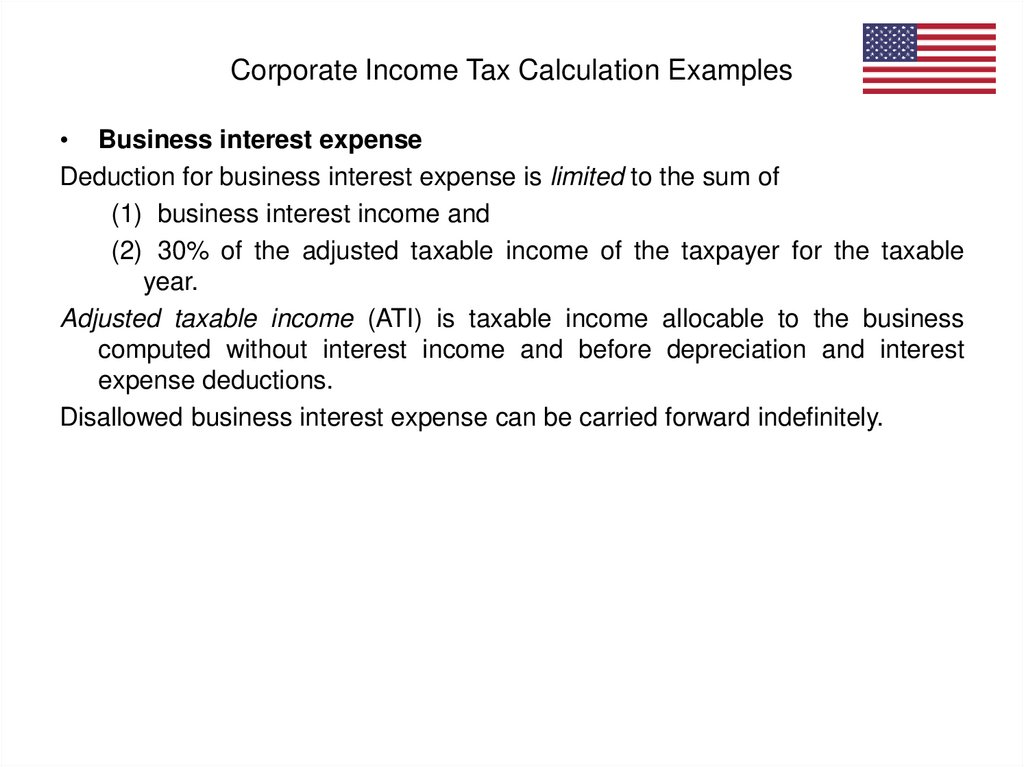
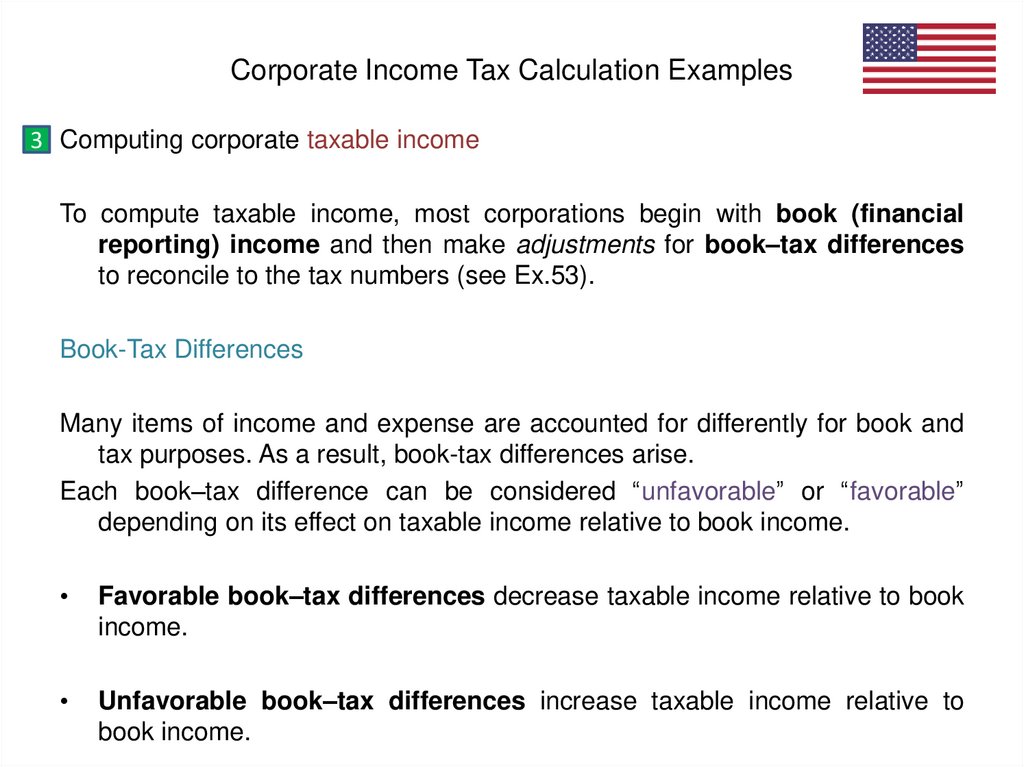
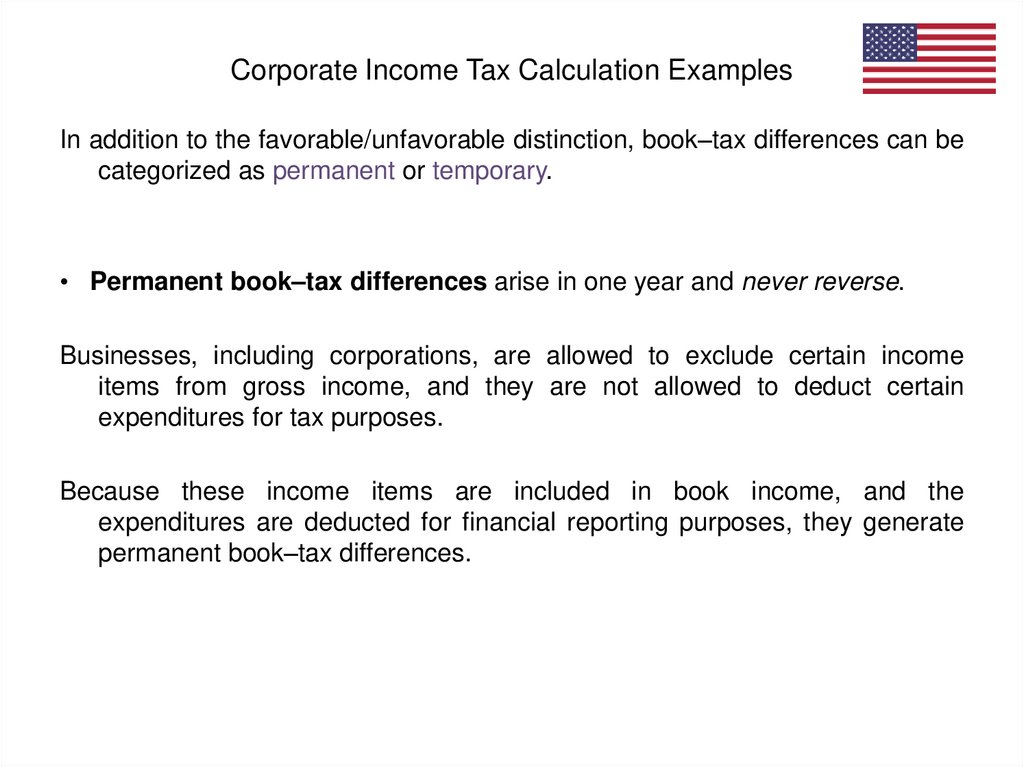
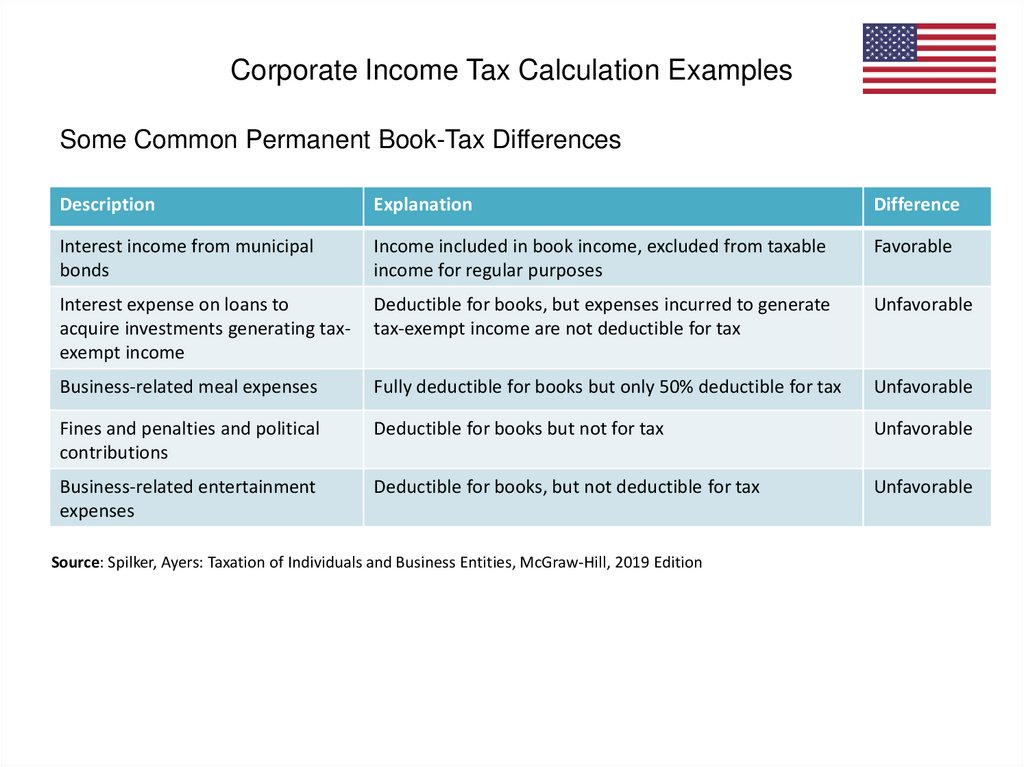
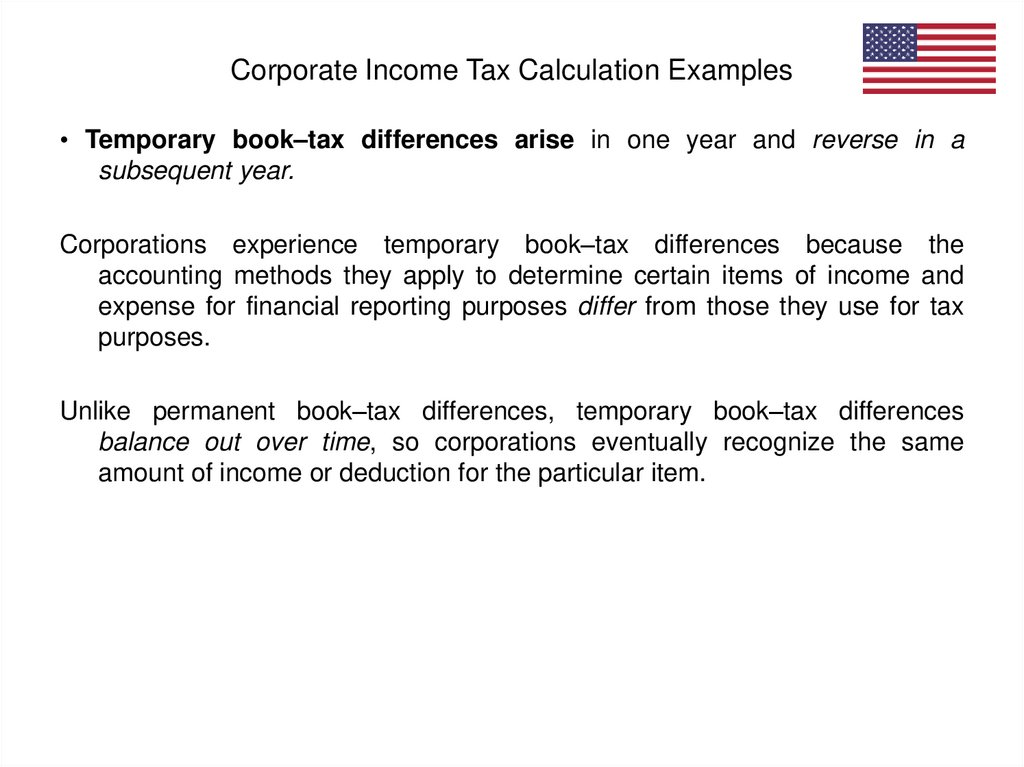

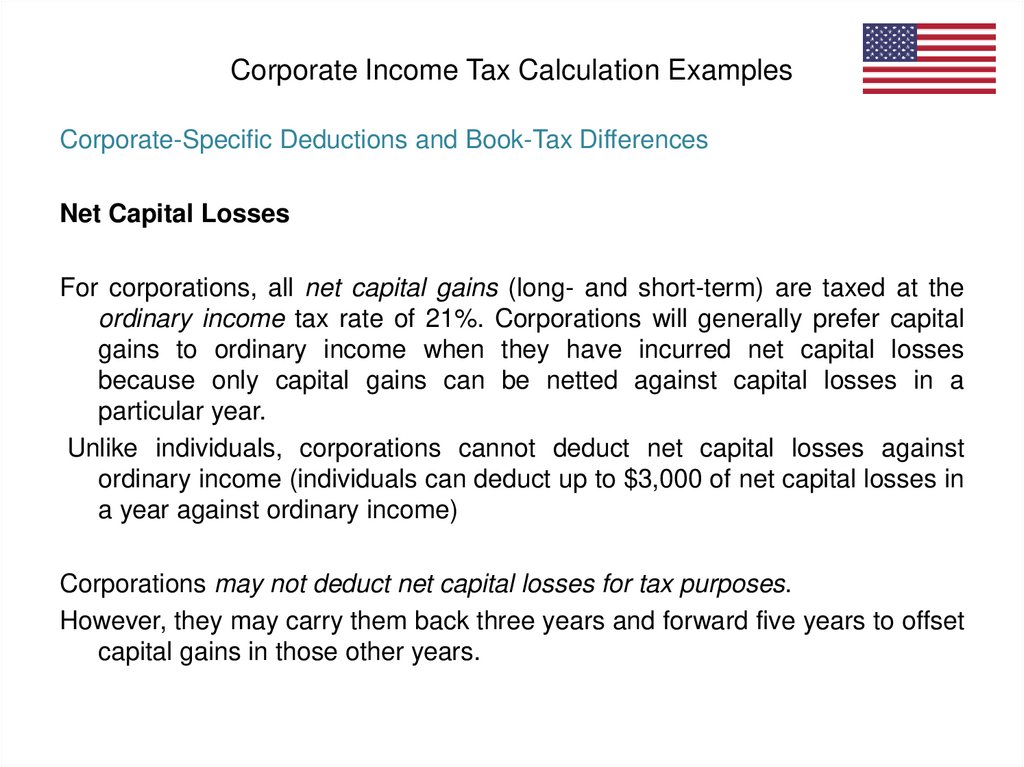
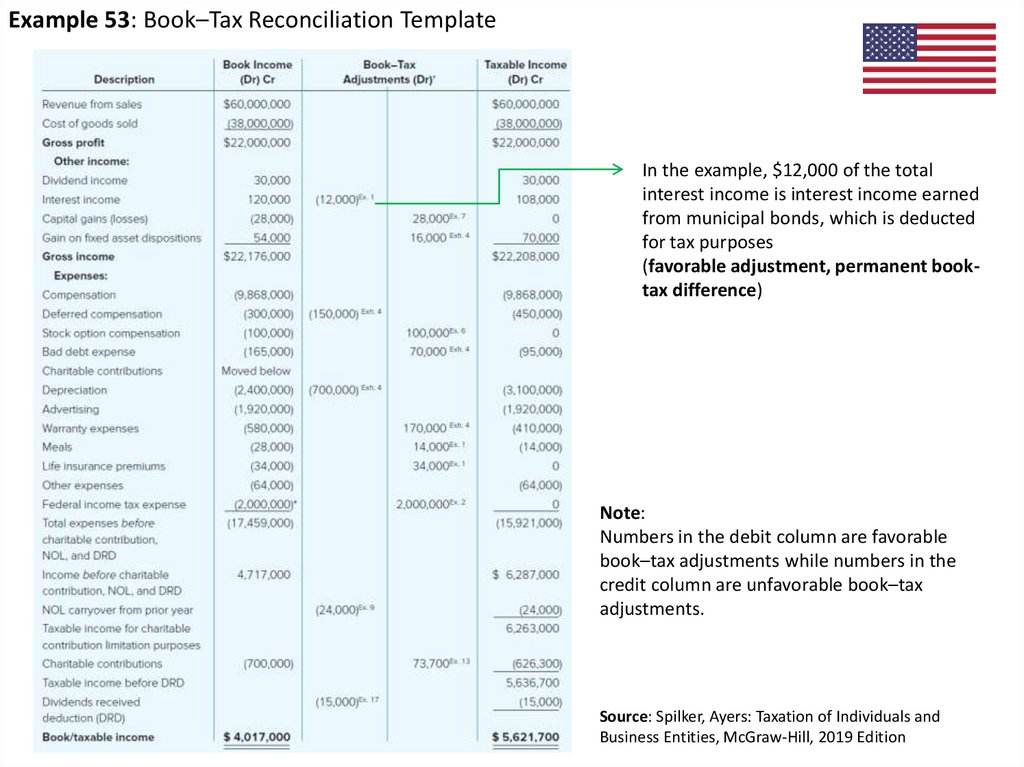
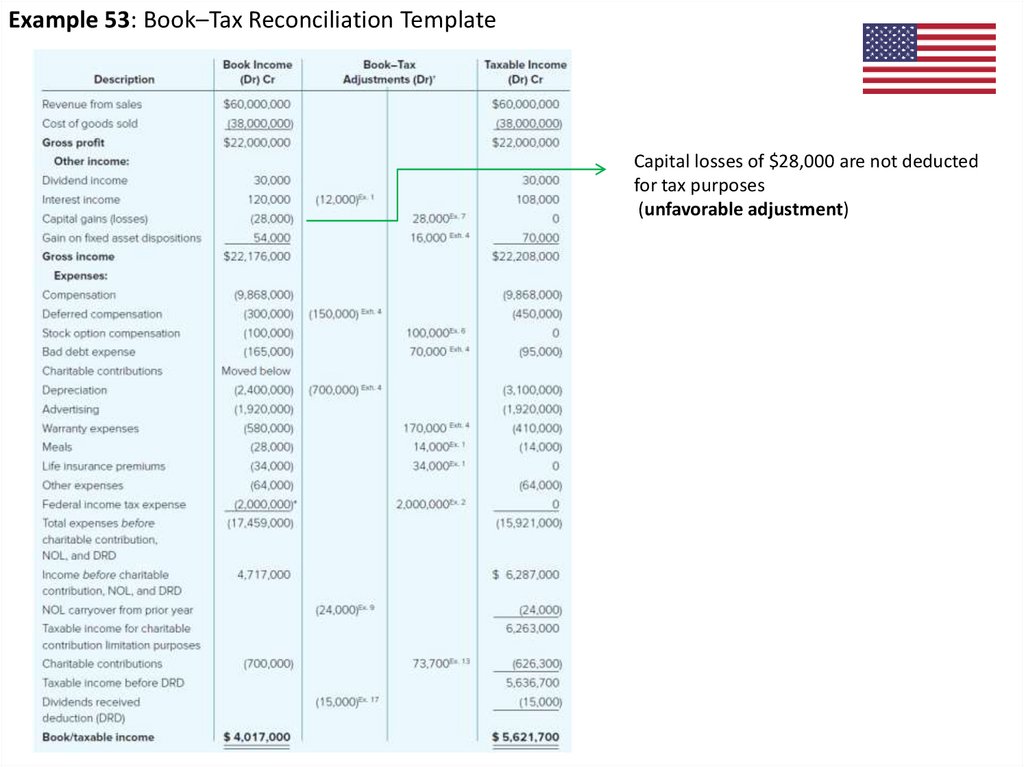
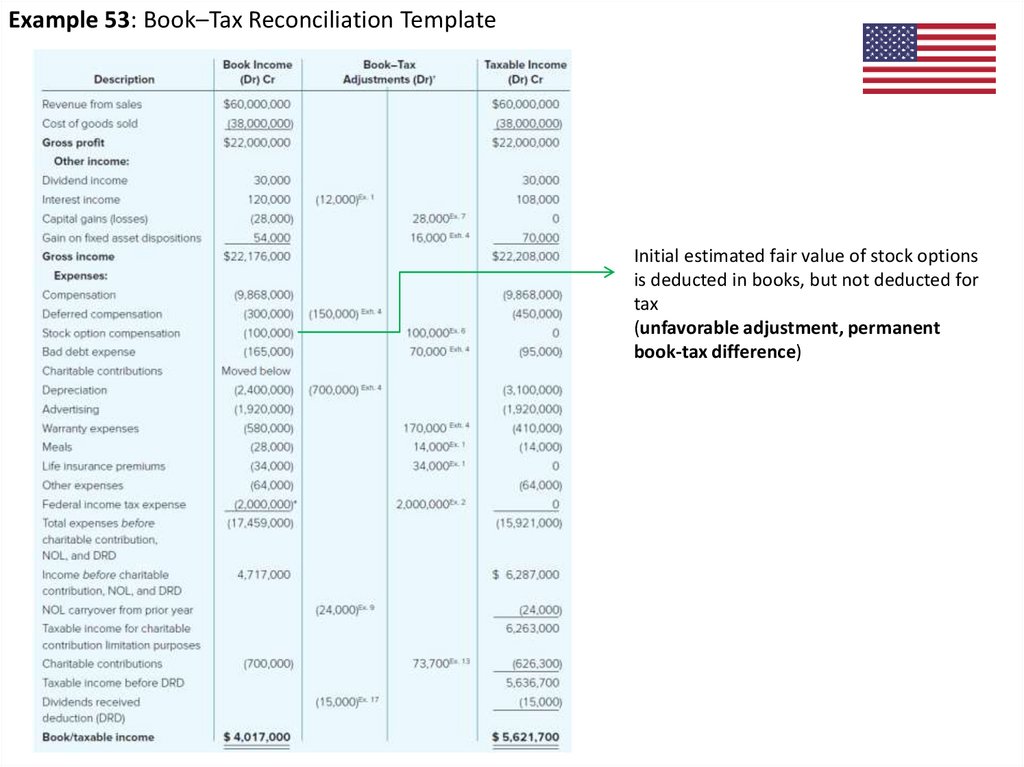
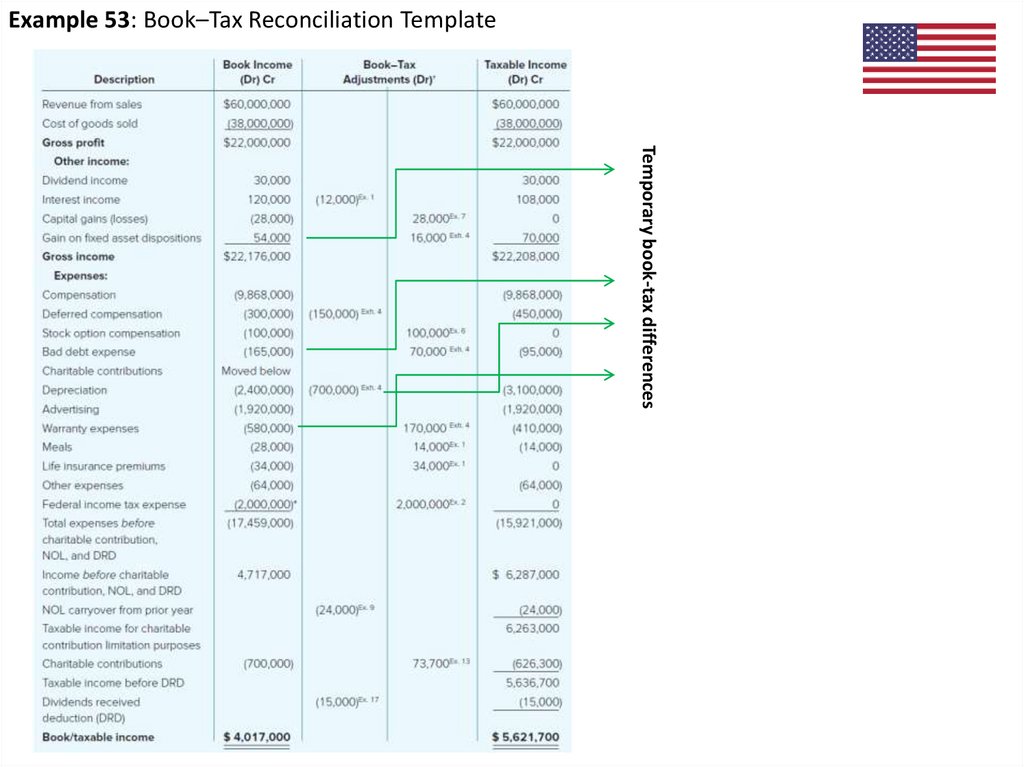

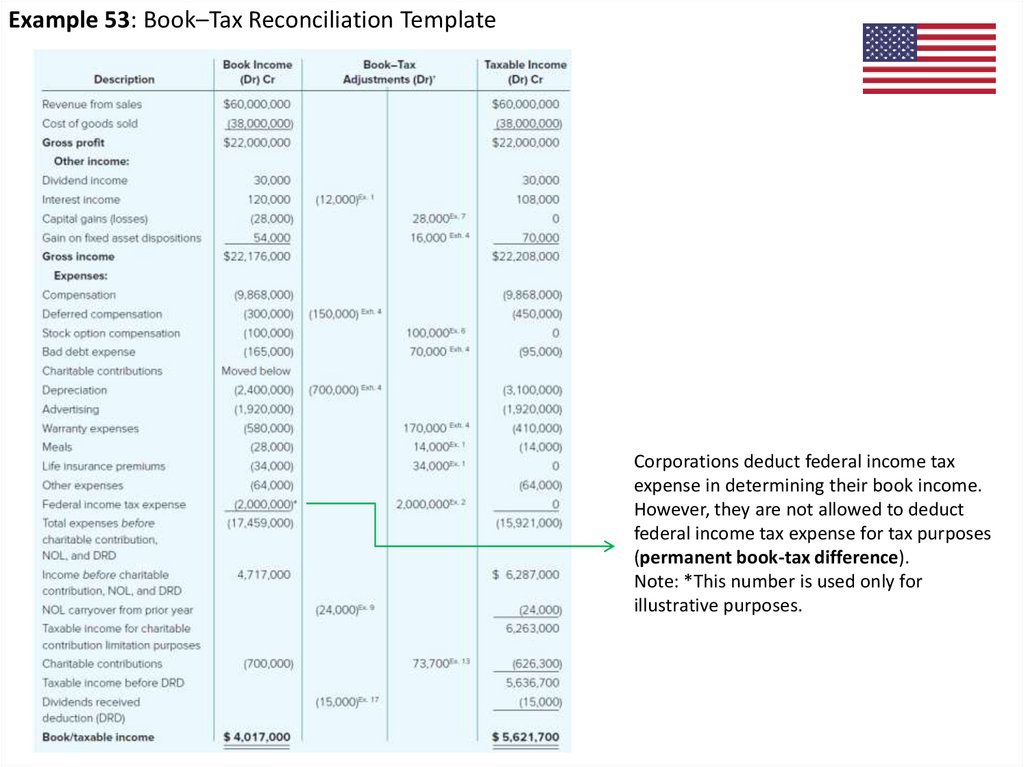



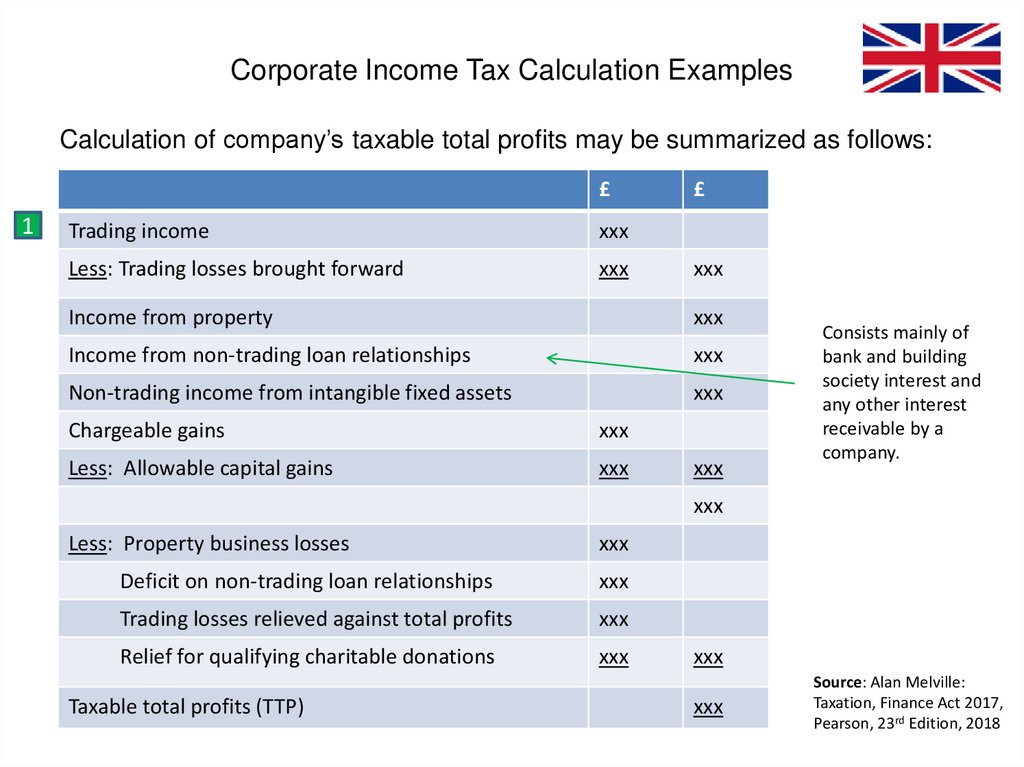


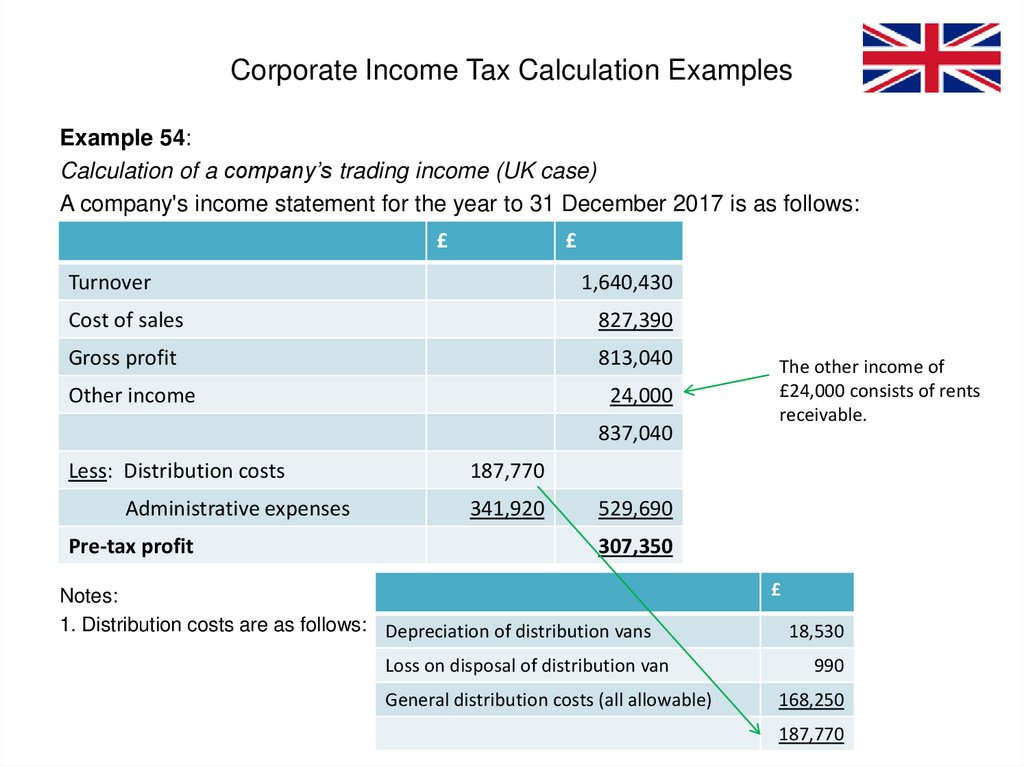


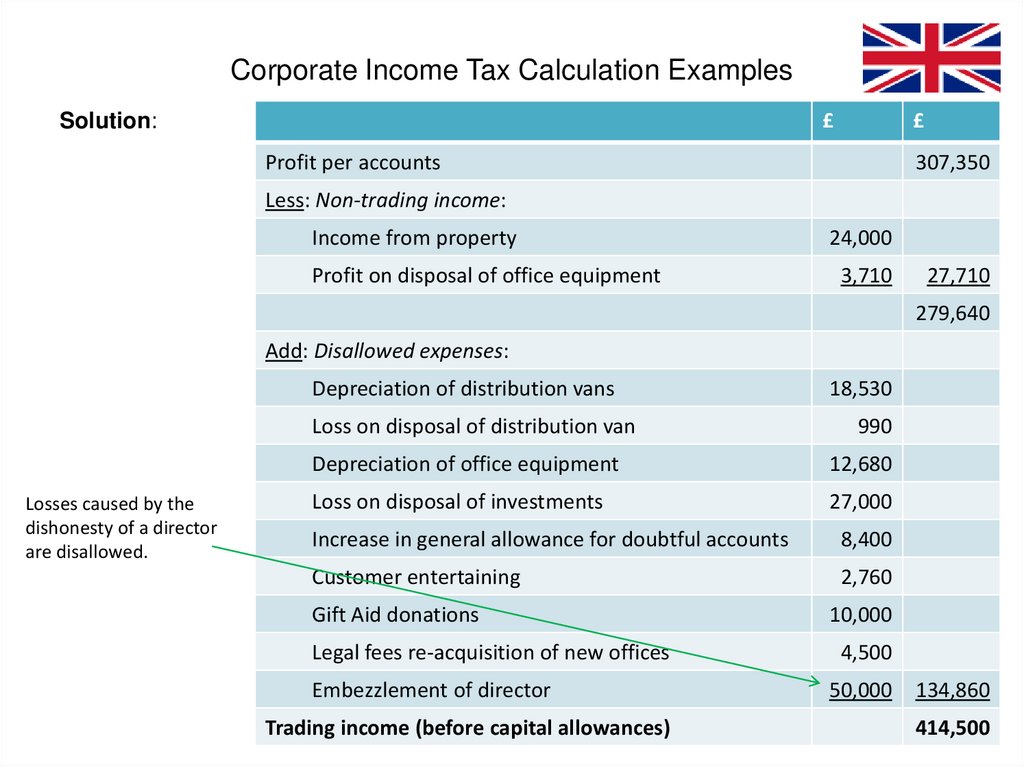
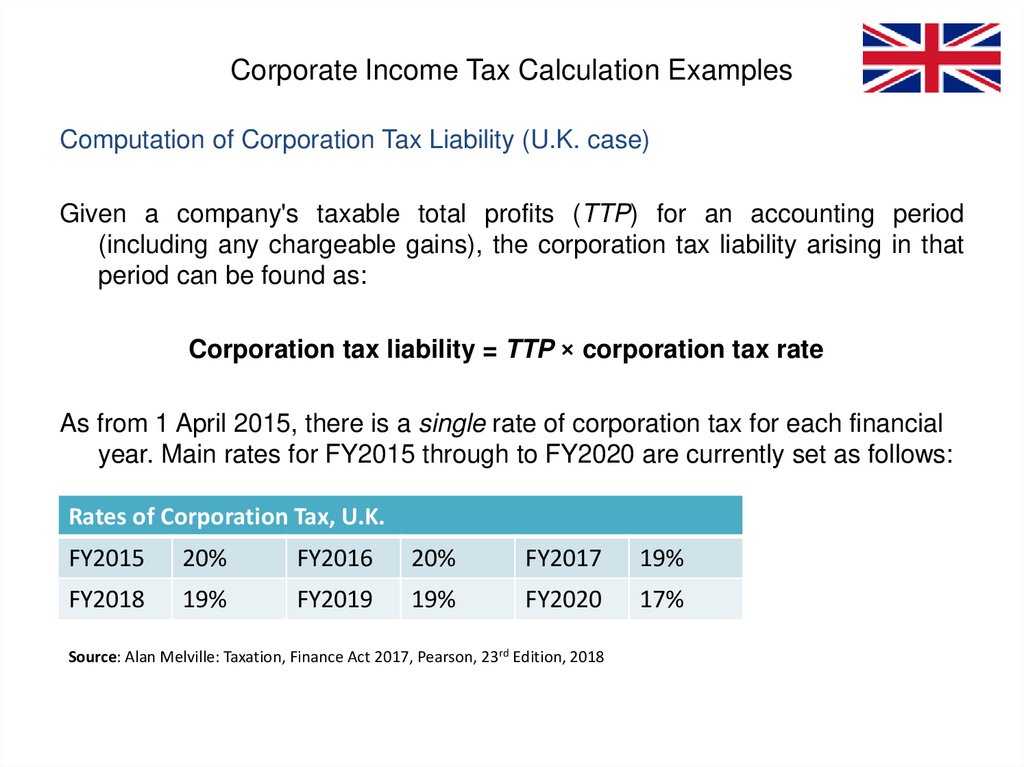




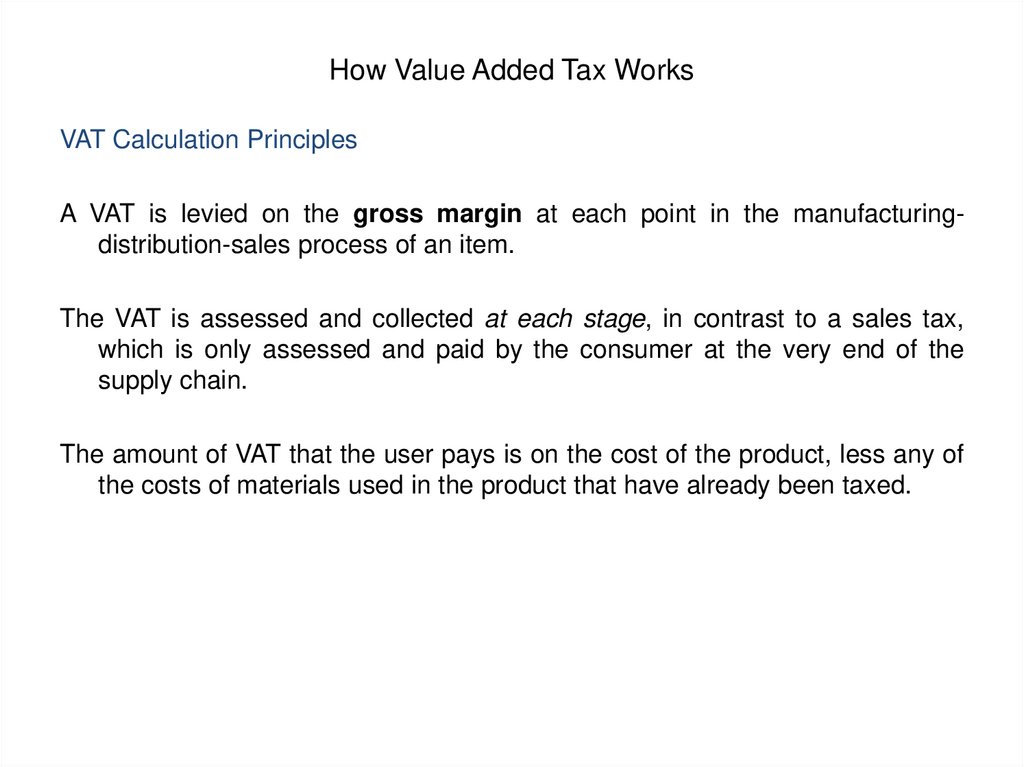
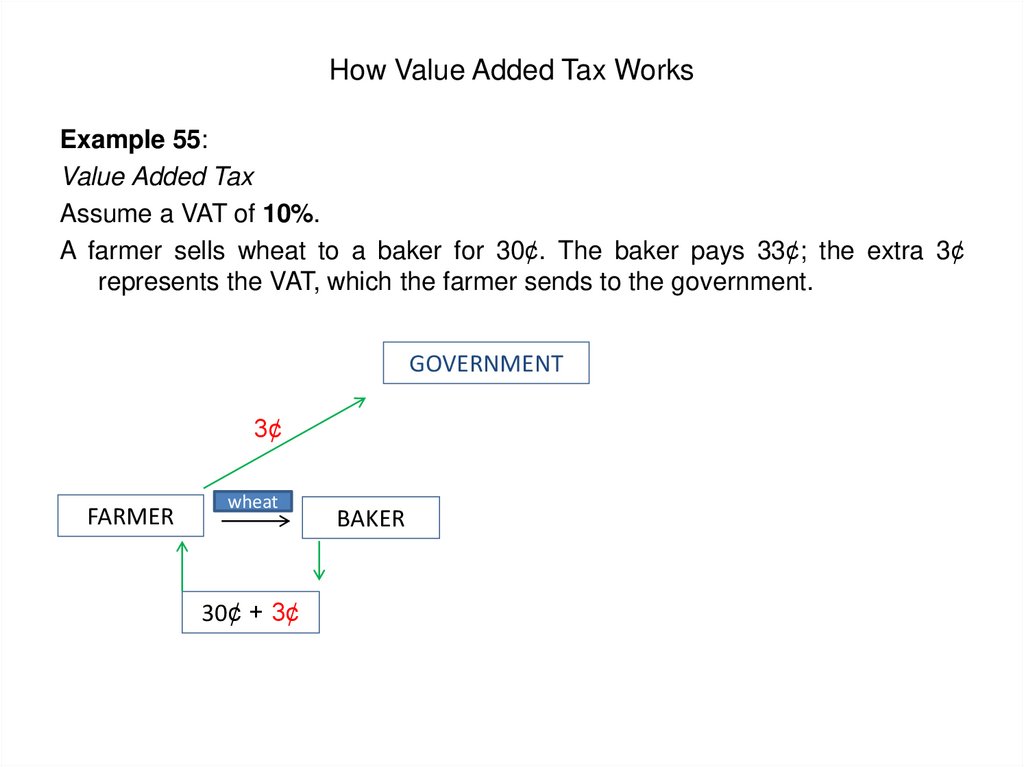




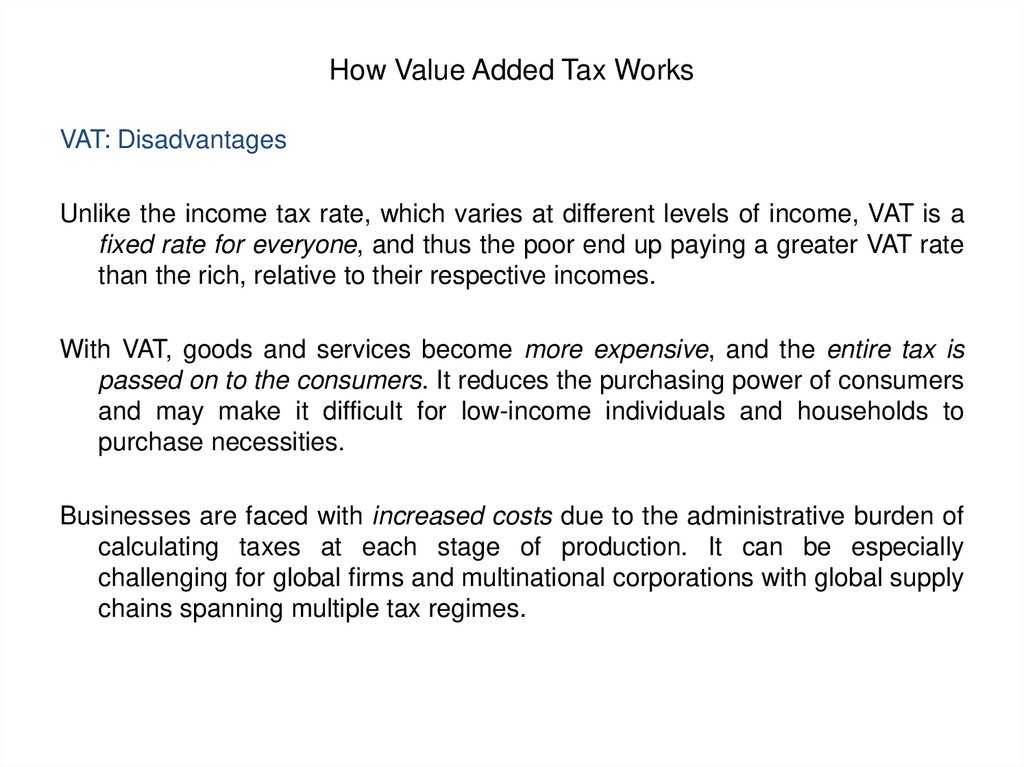
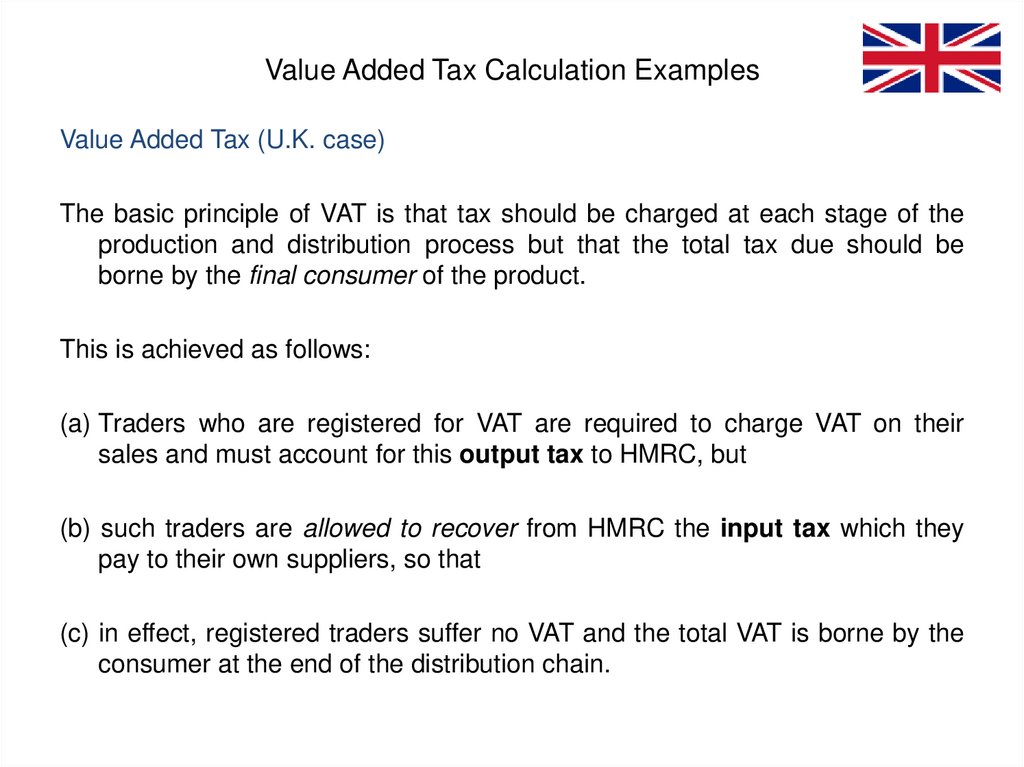
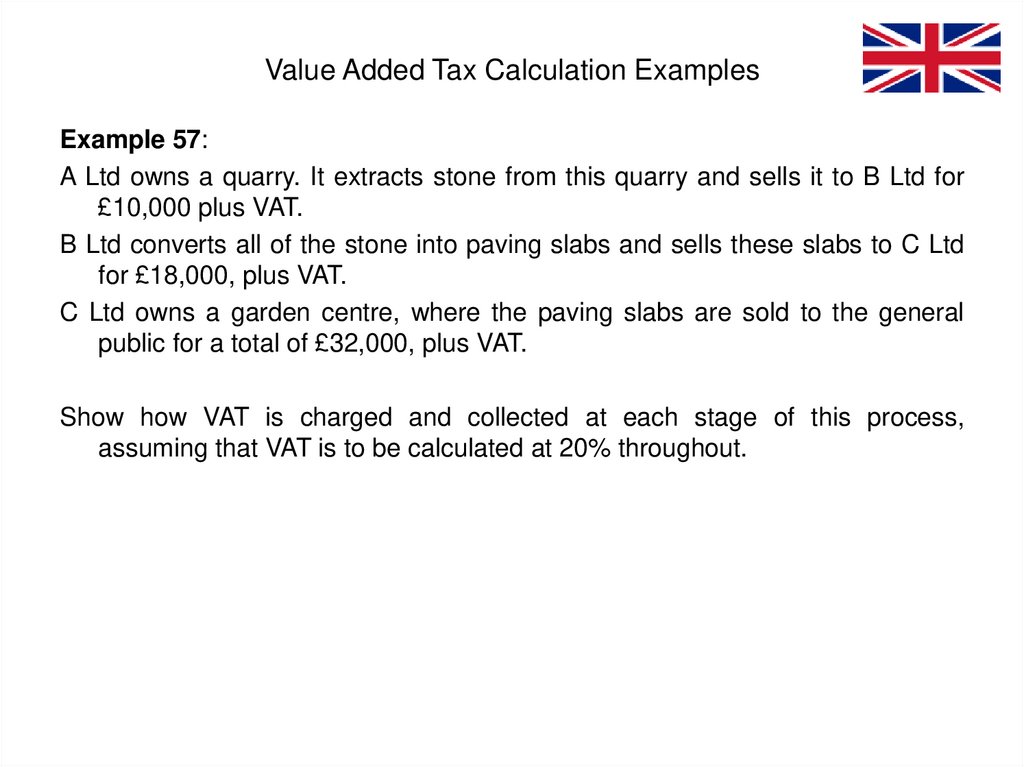
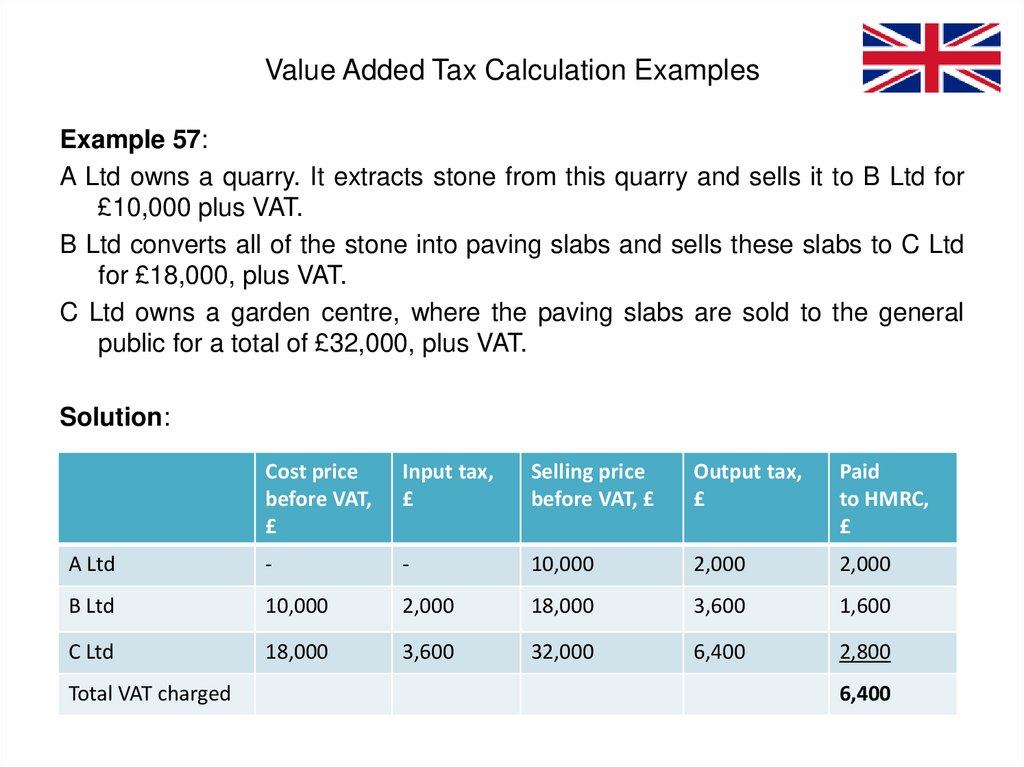

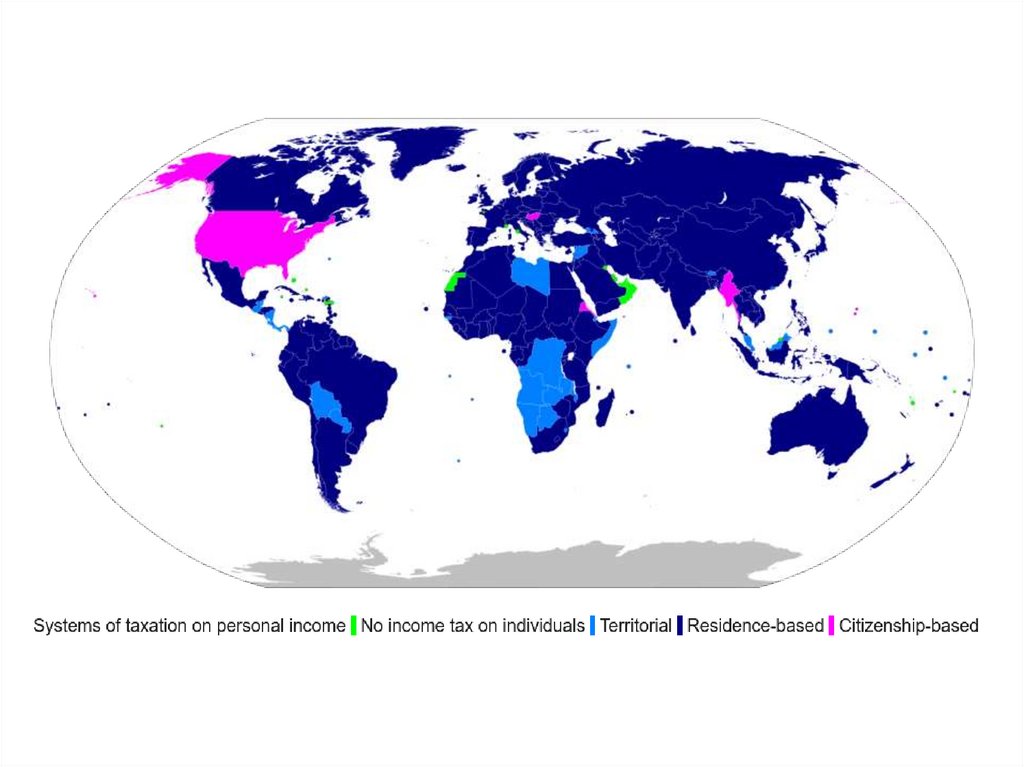

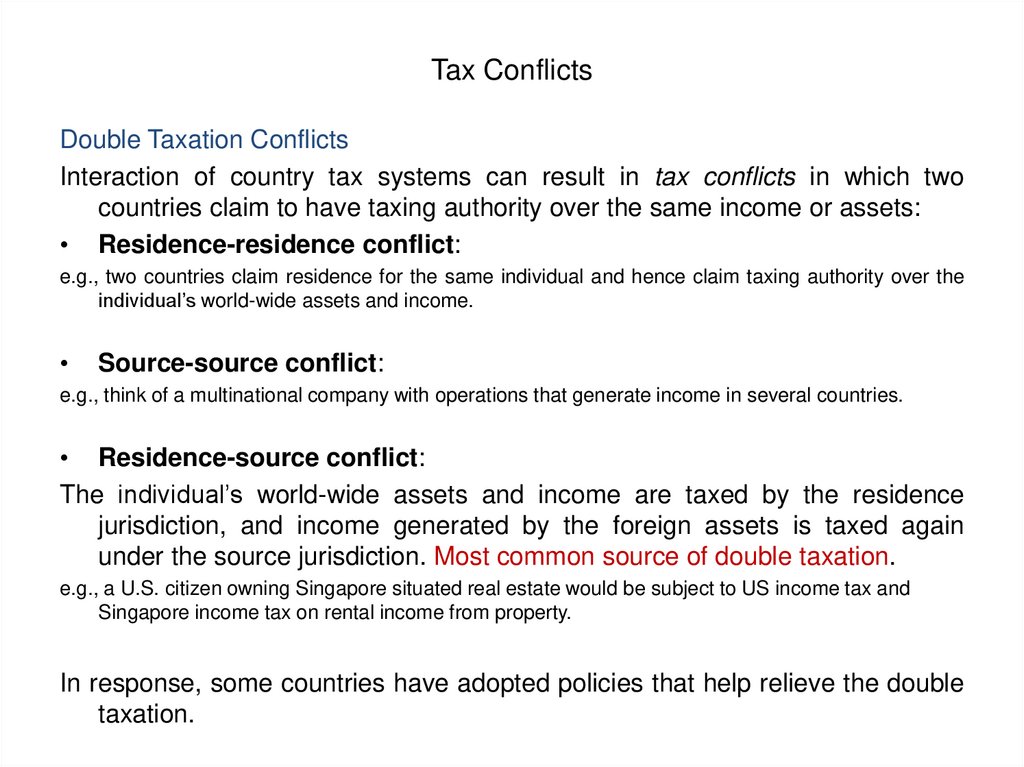



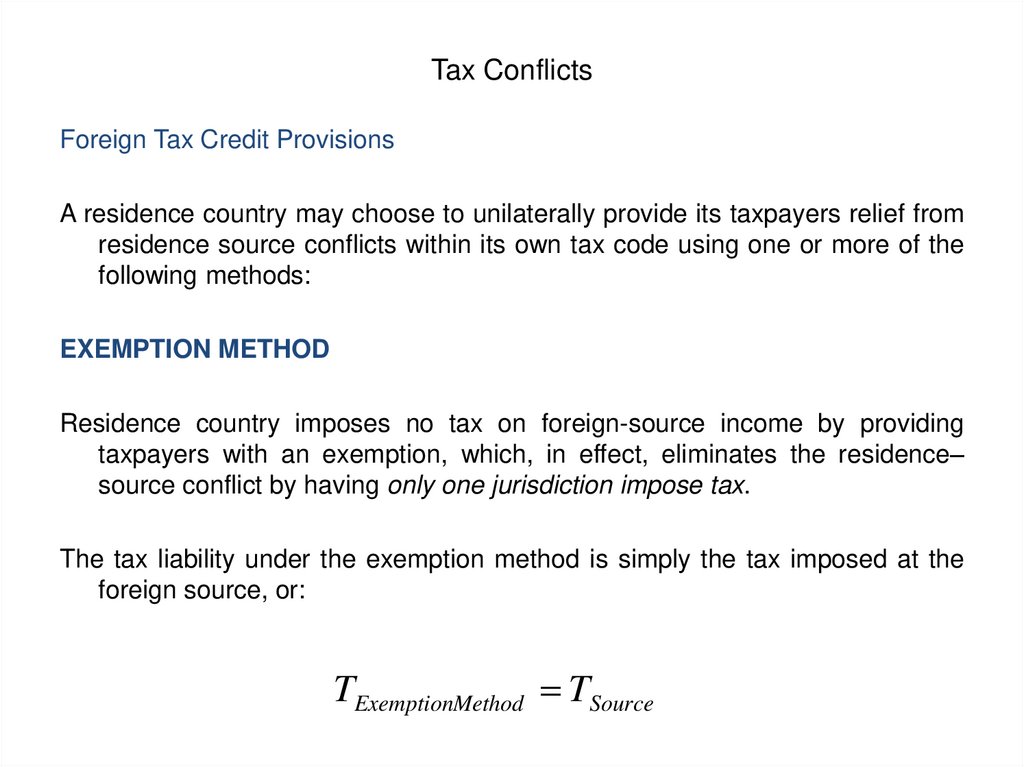
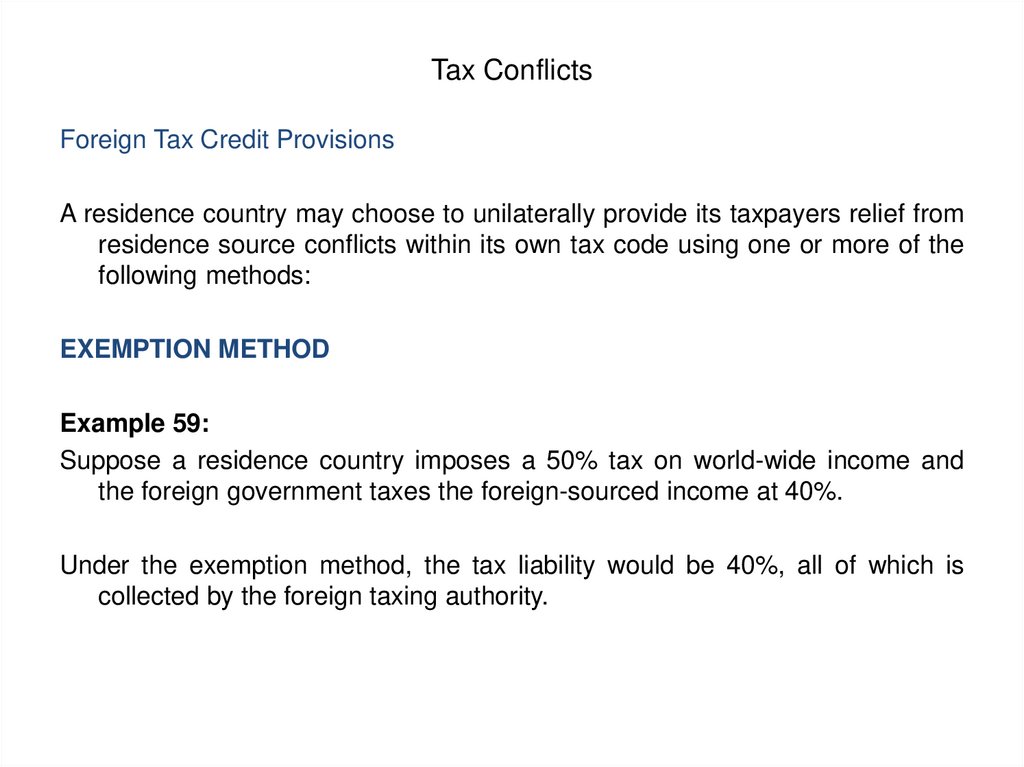
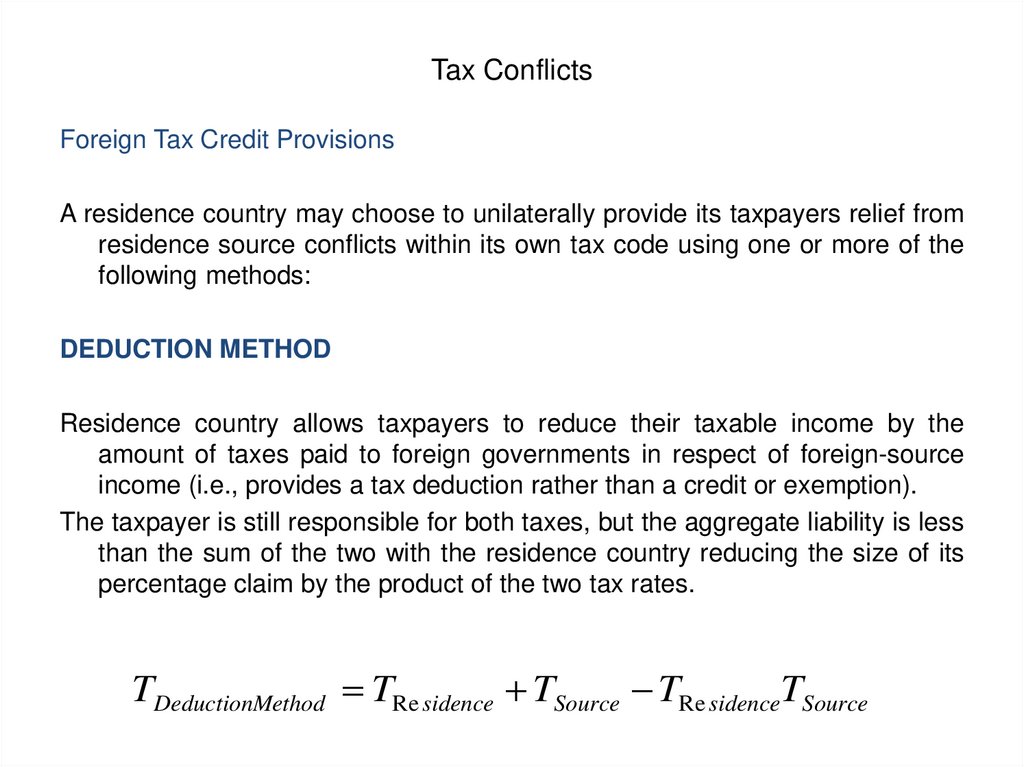
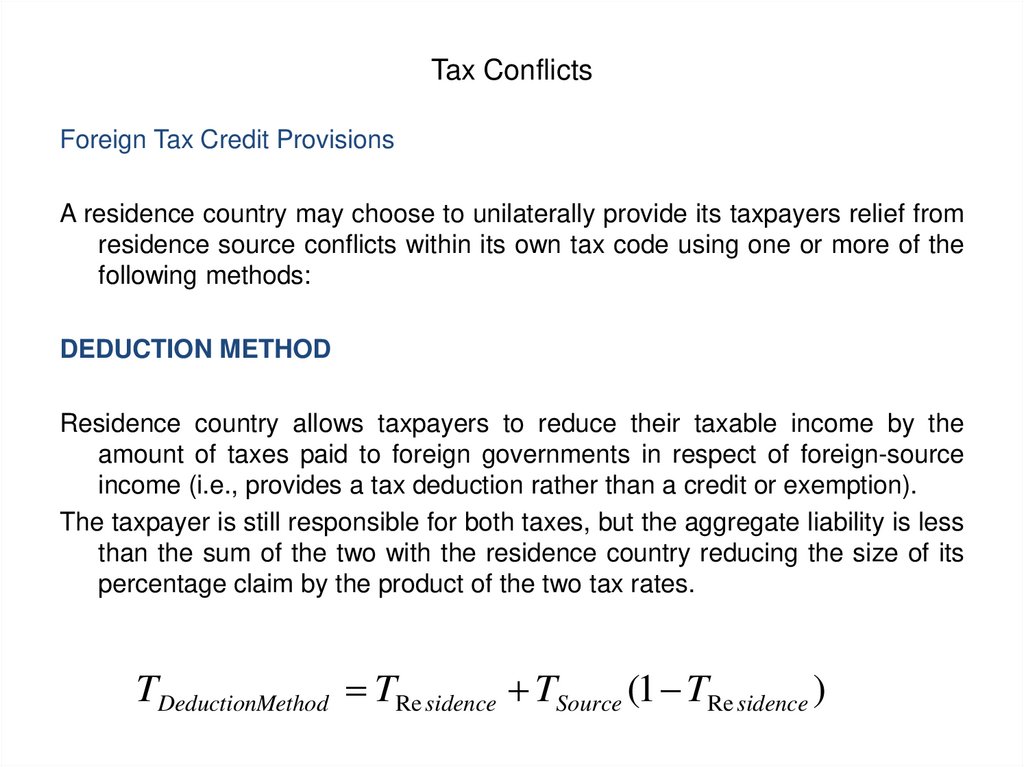
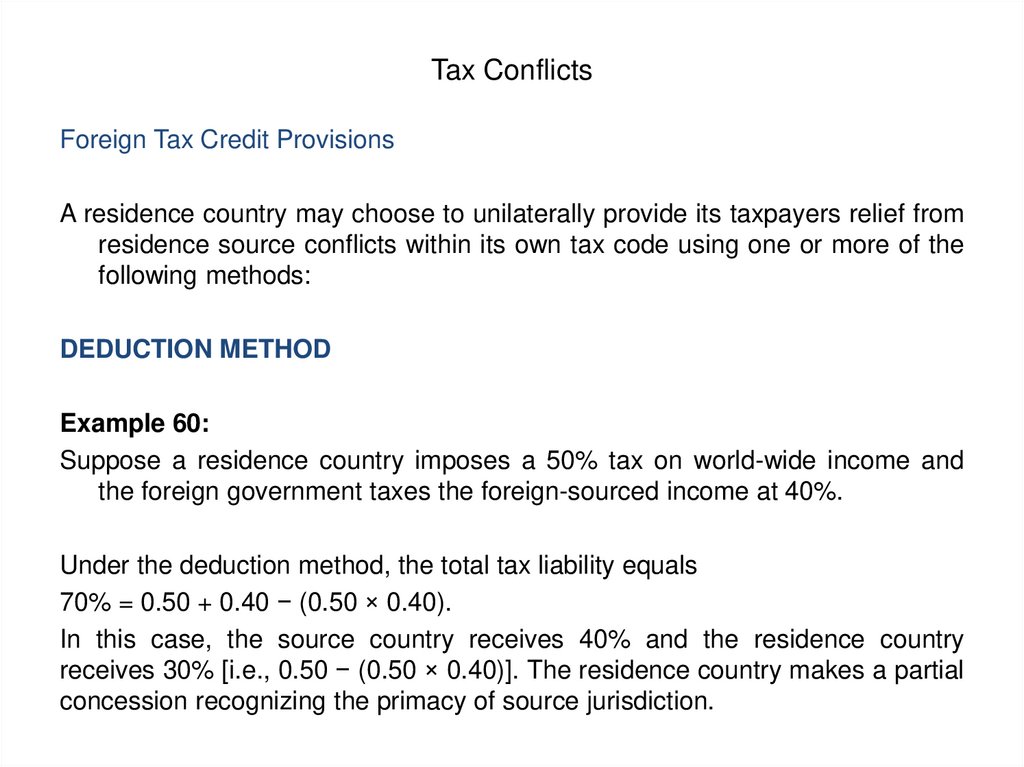
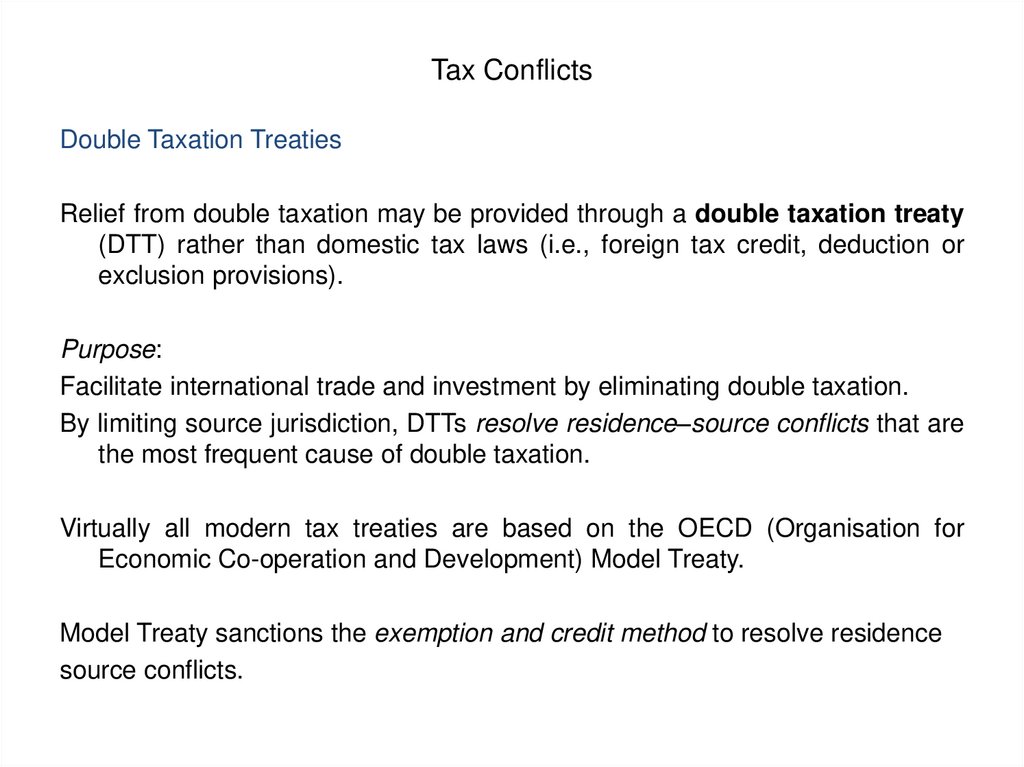

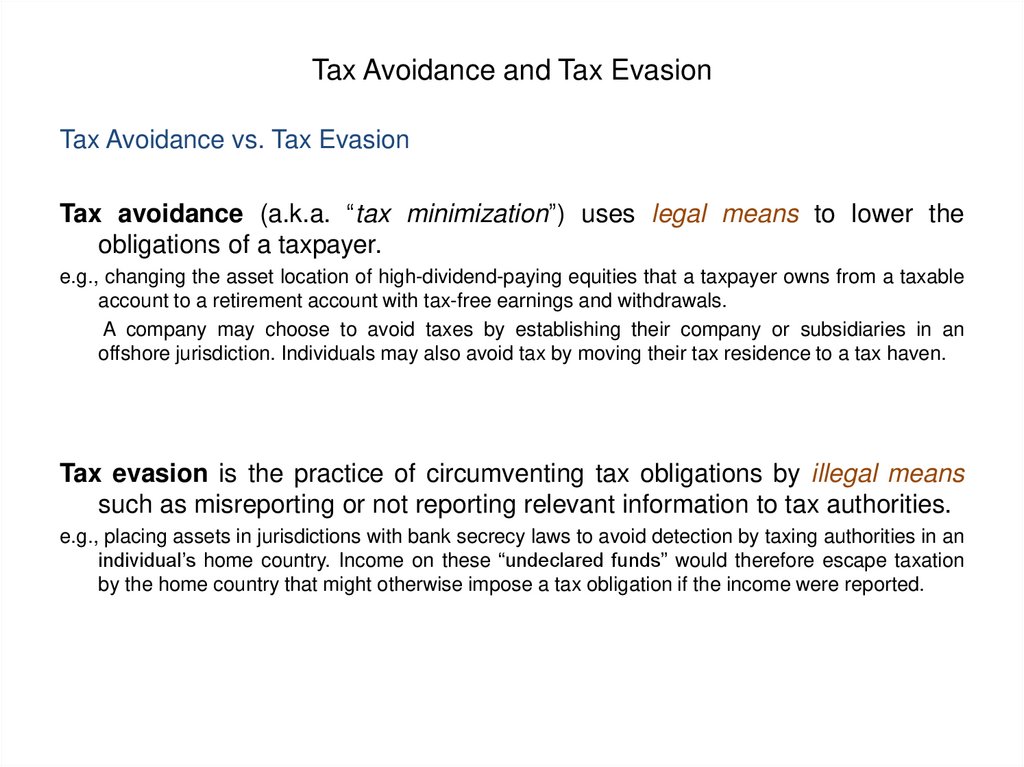
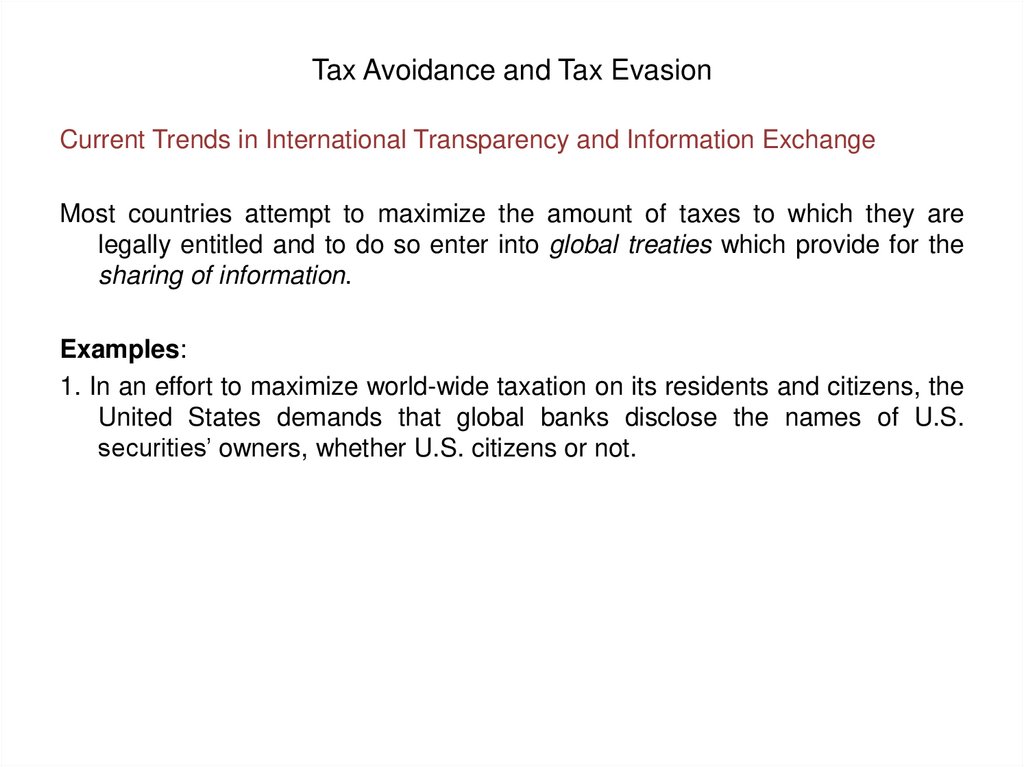
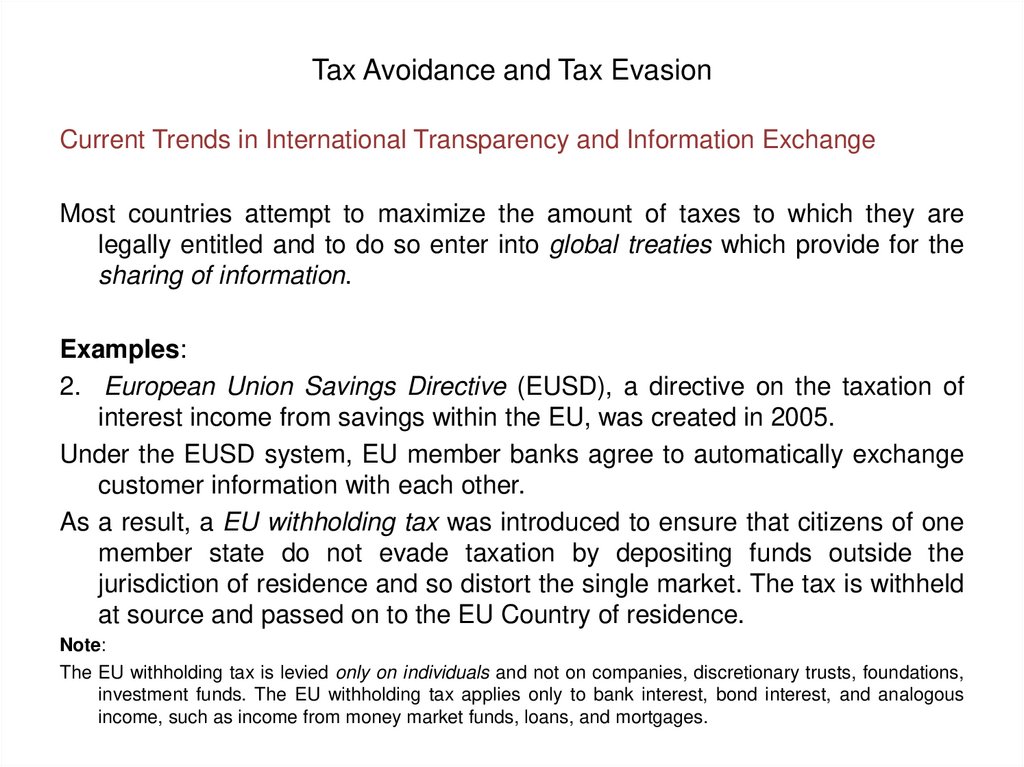
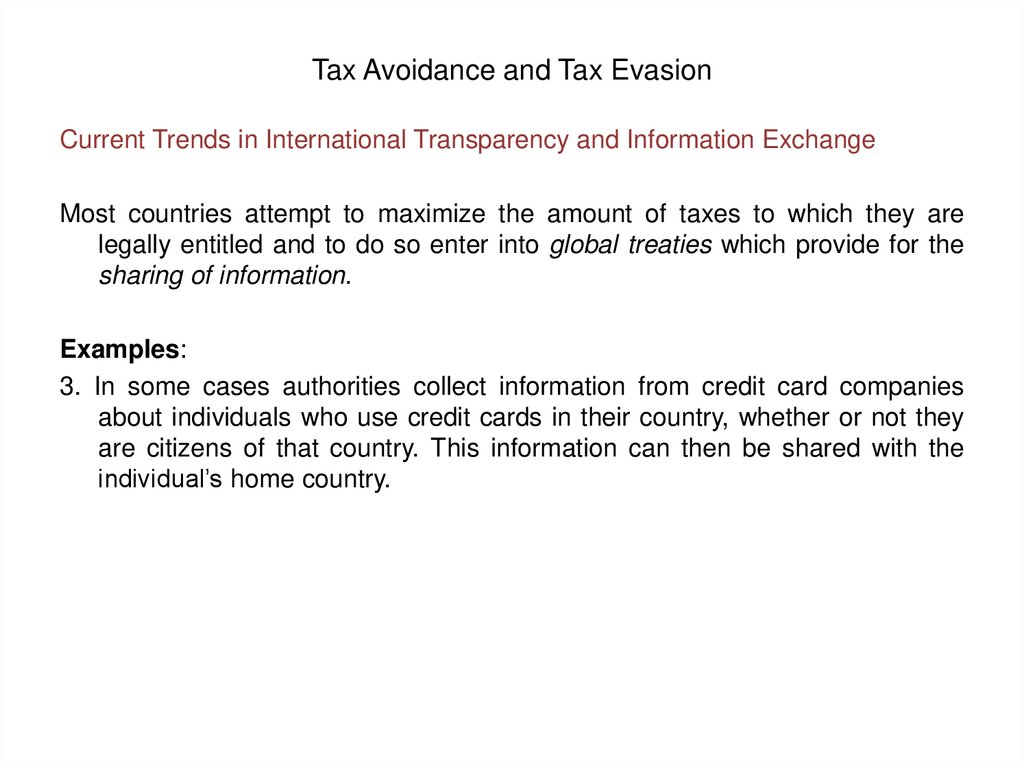
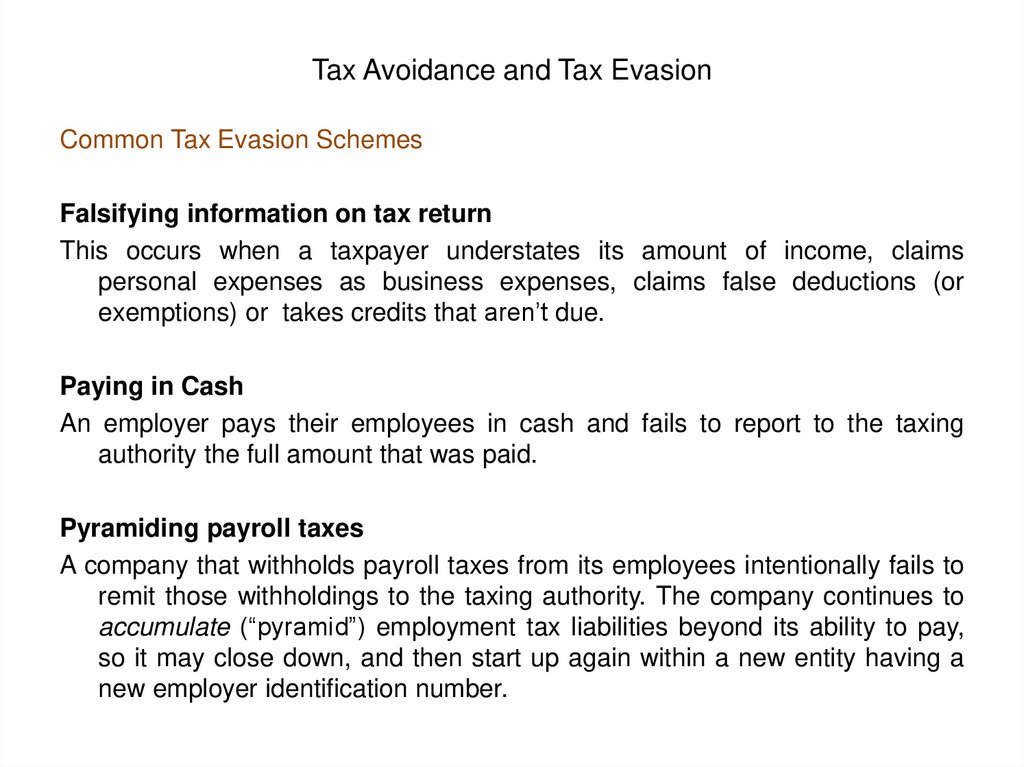
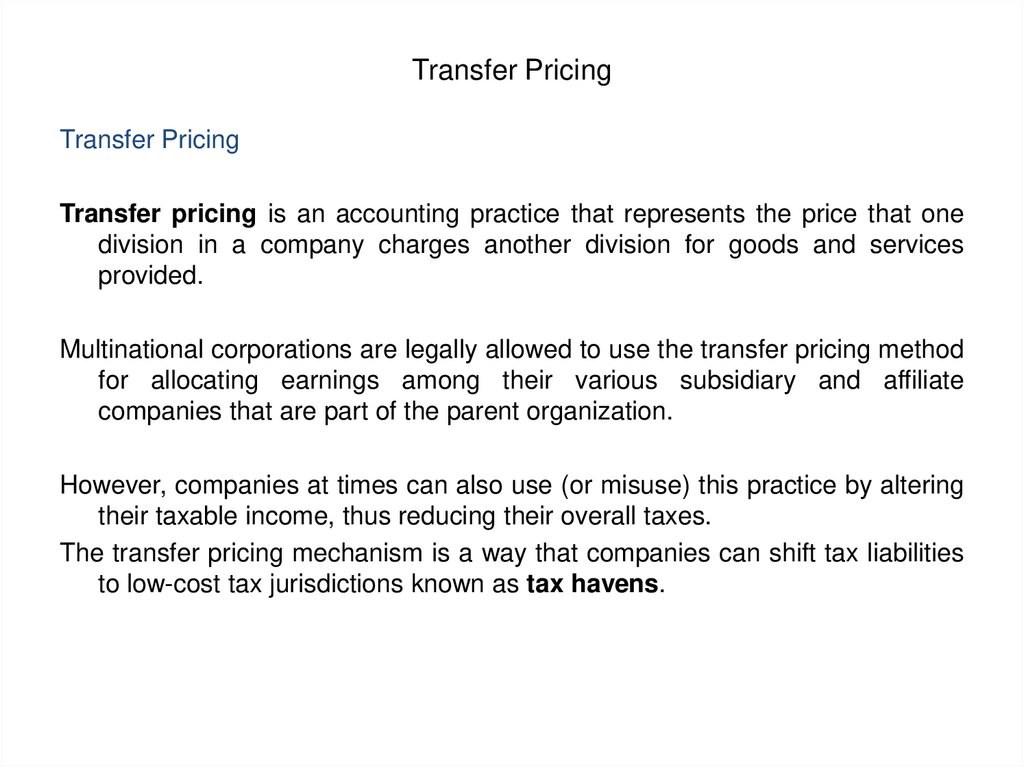

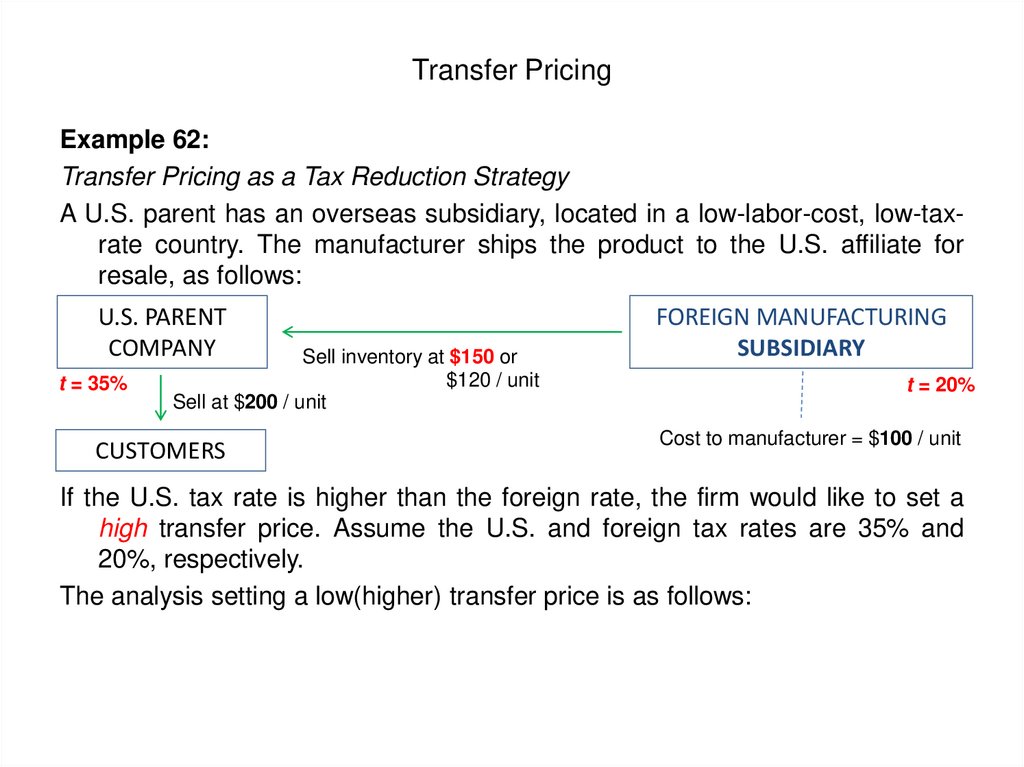
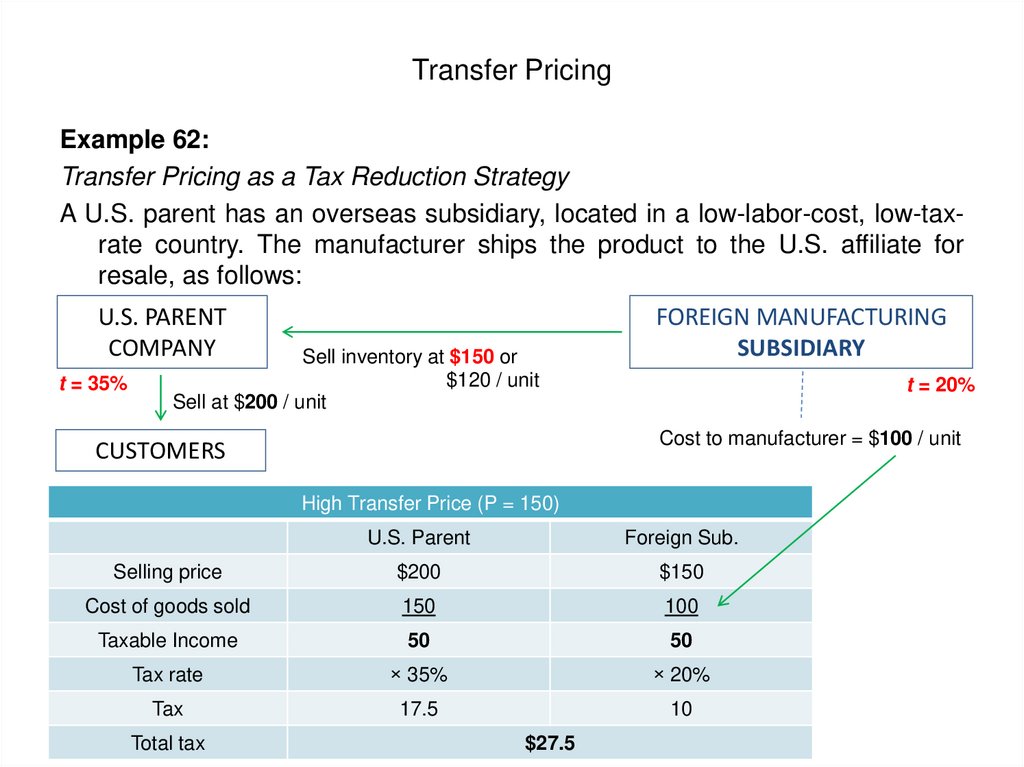

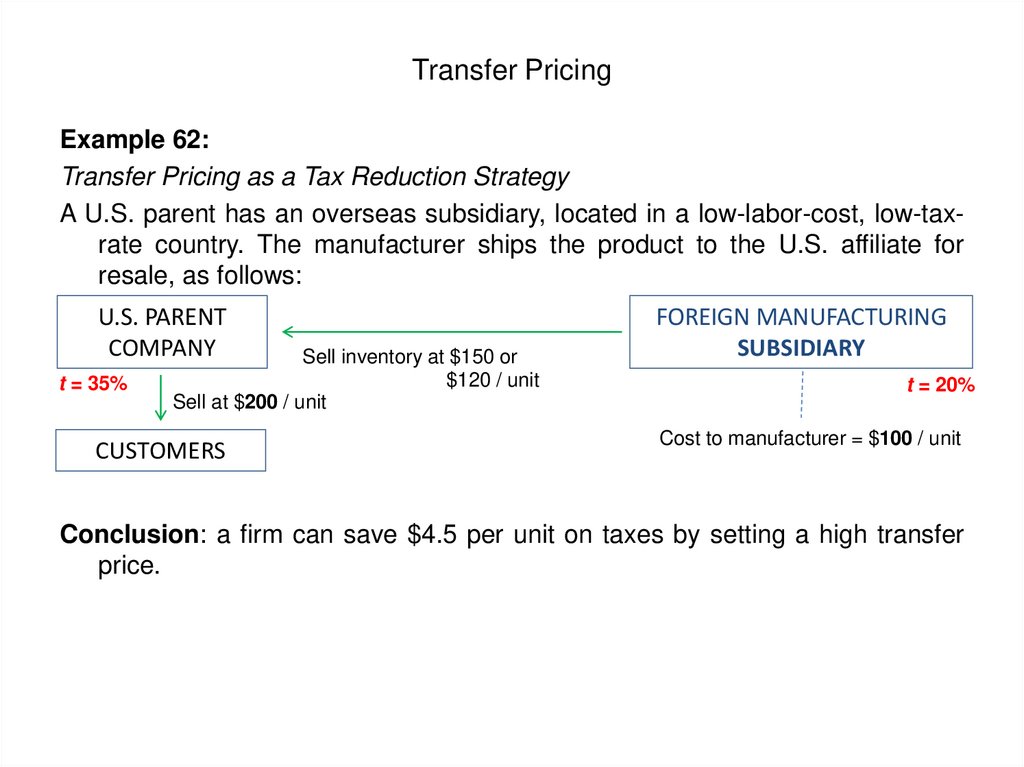
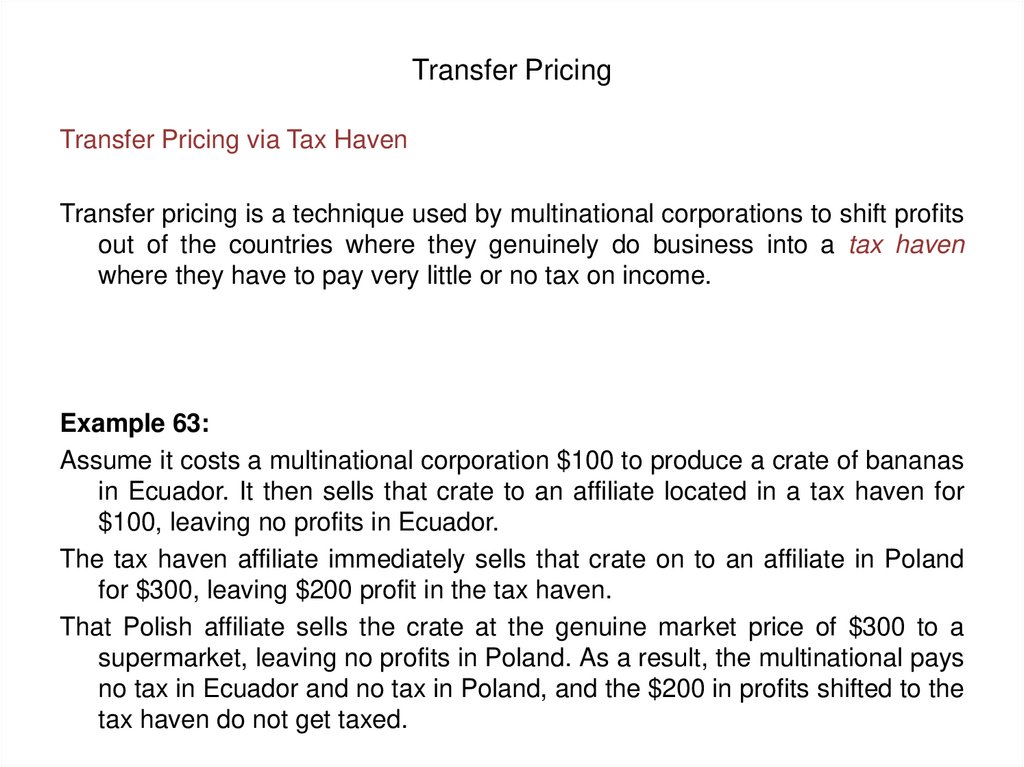


 Экономика
Экономика








